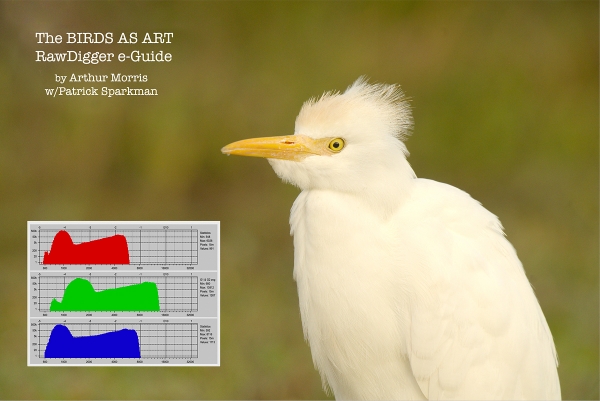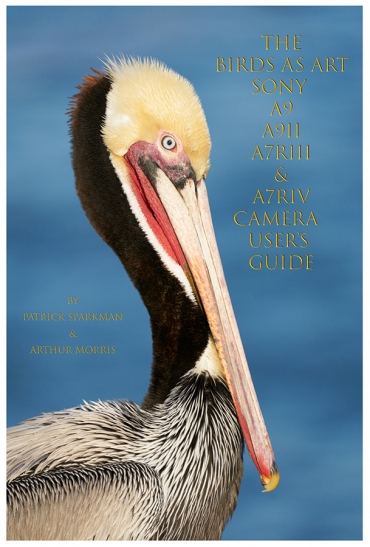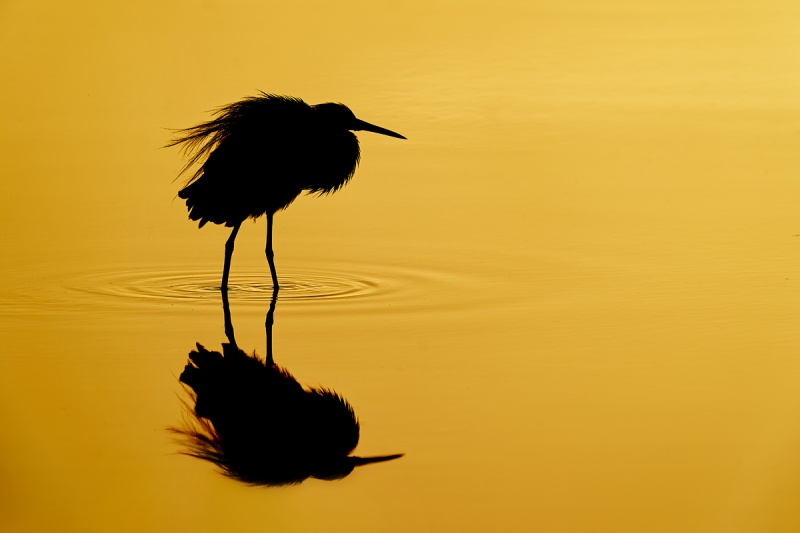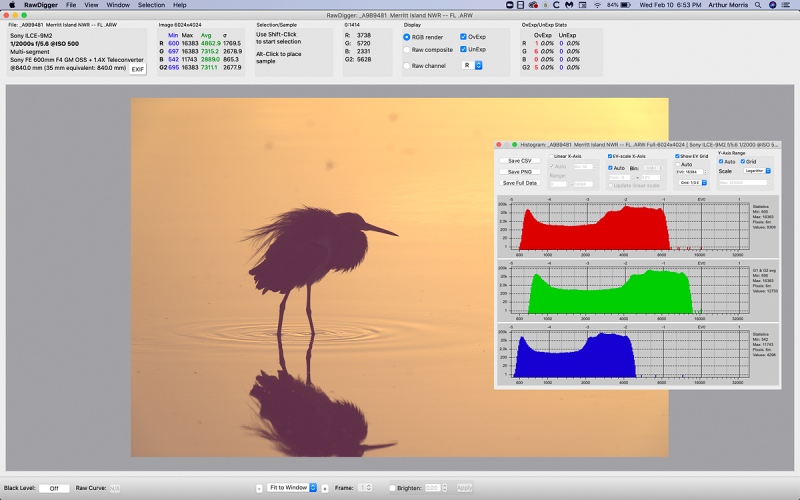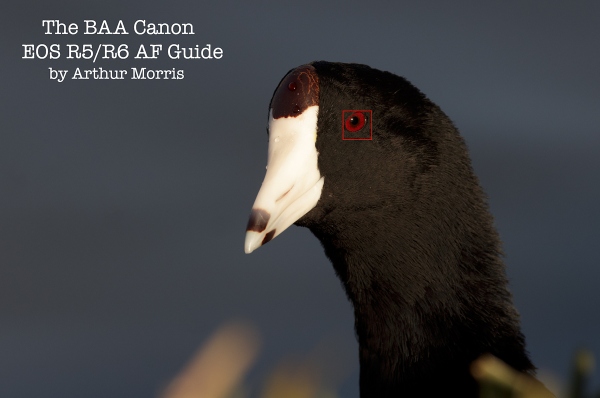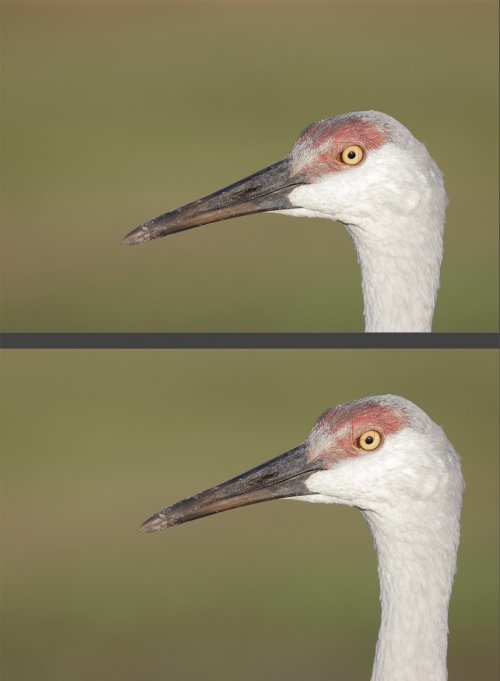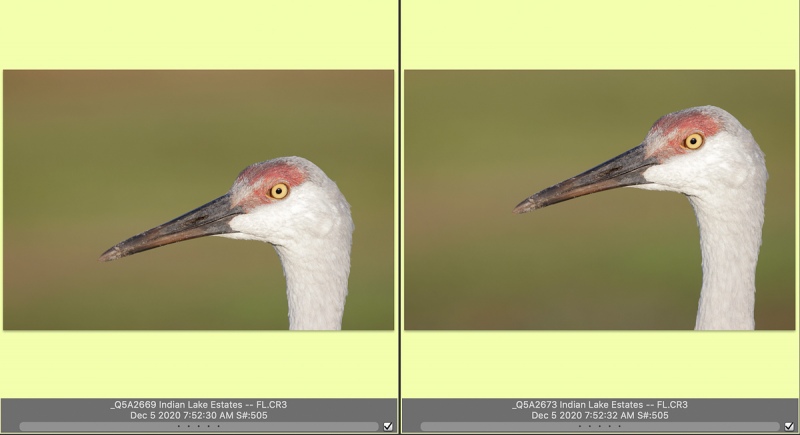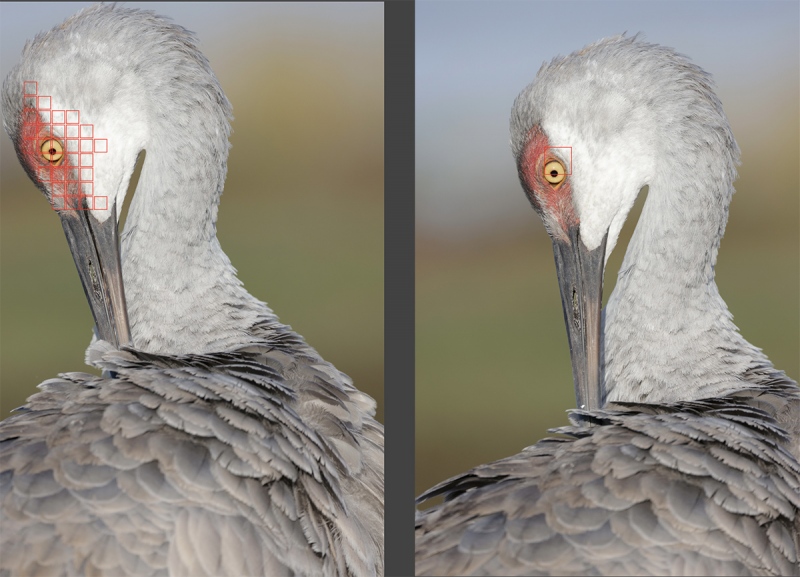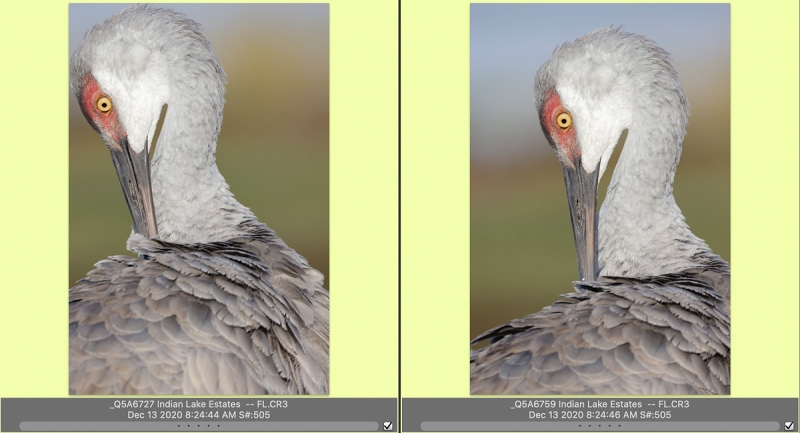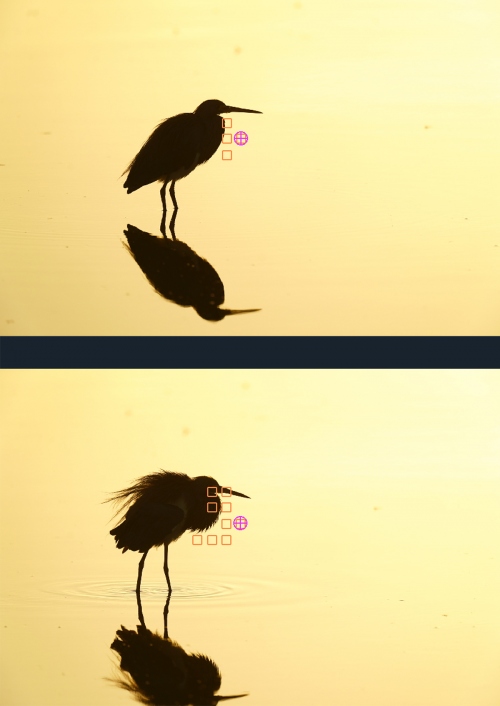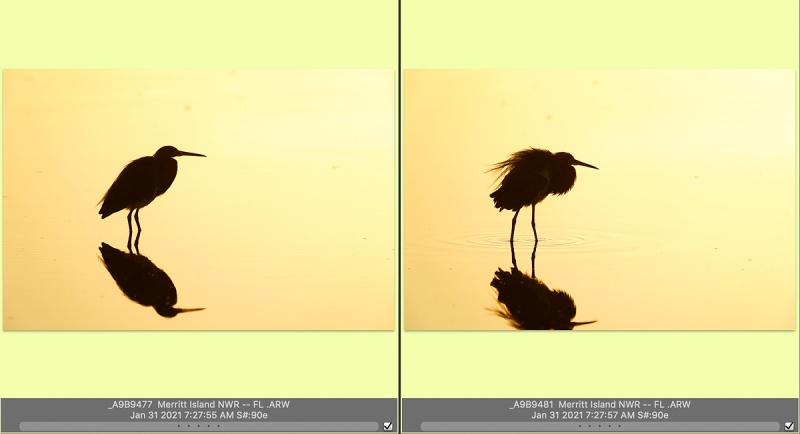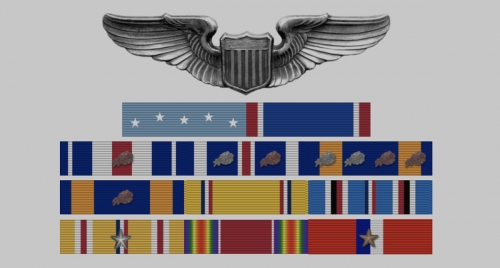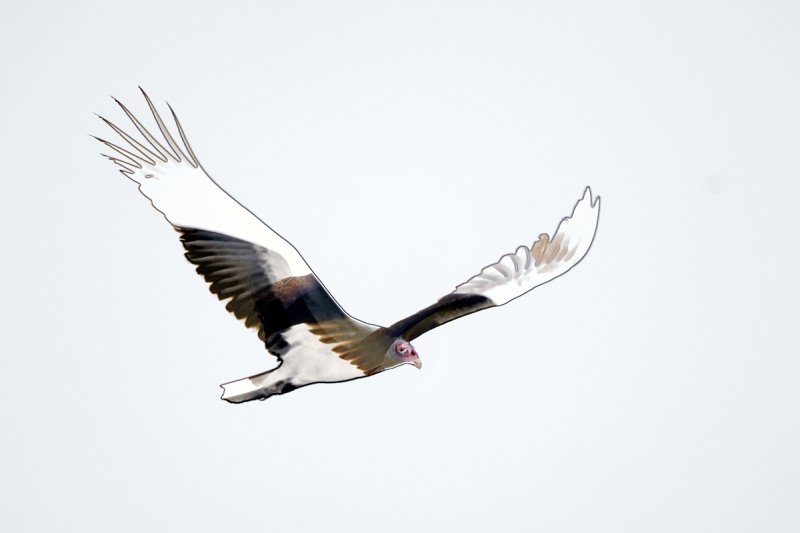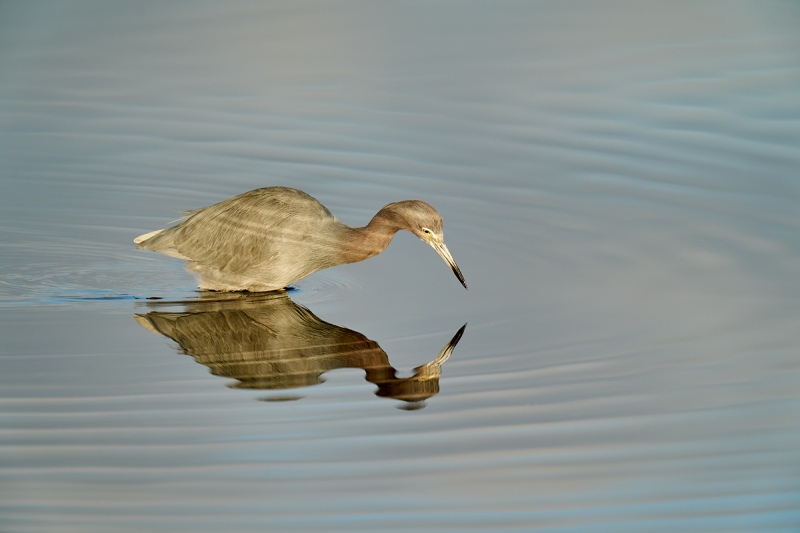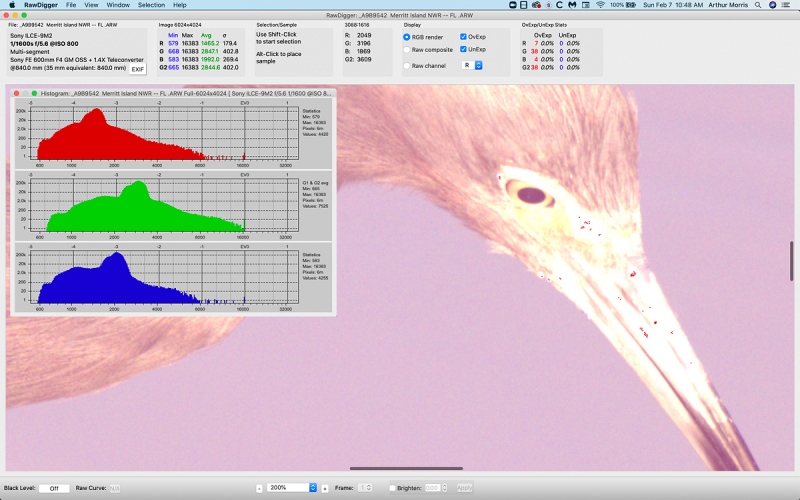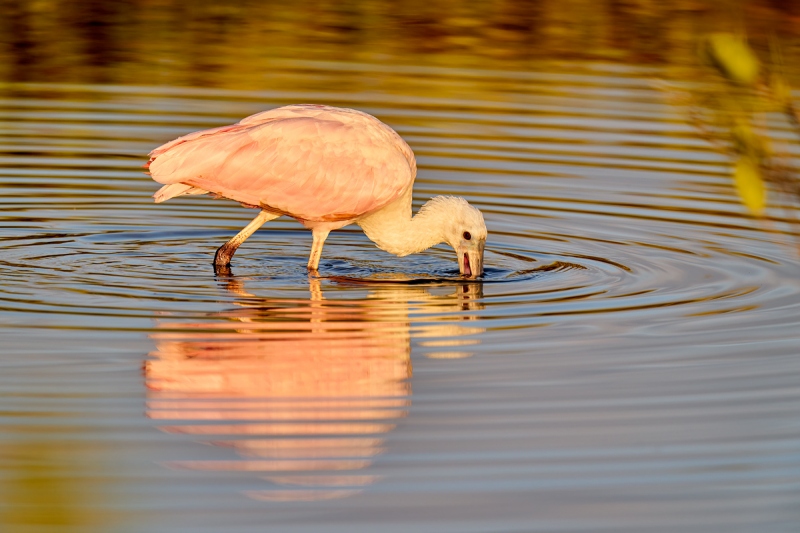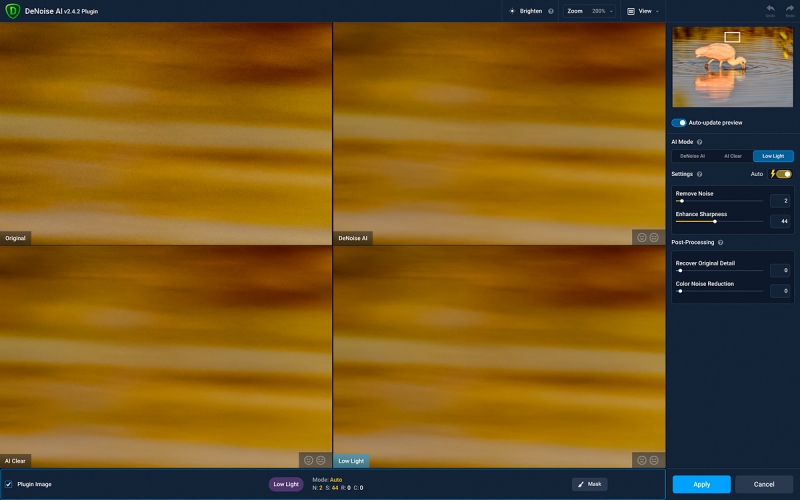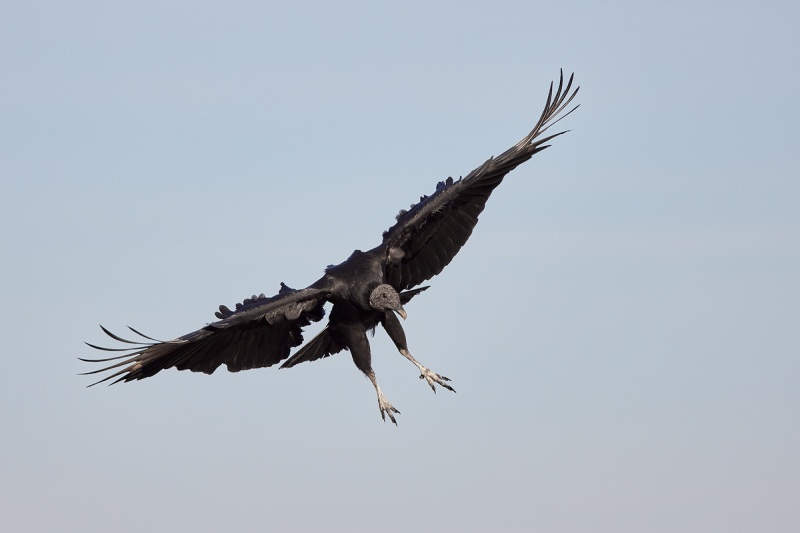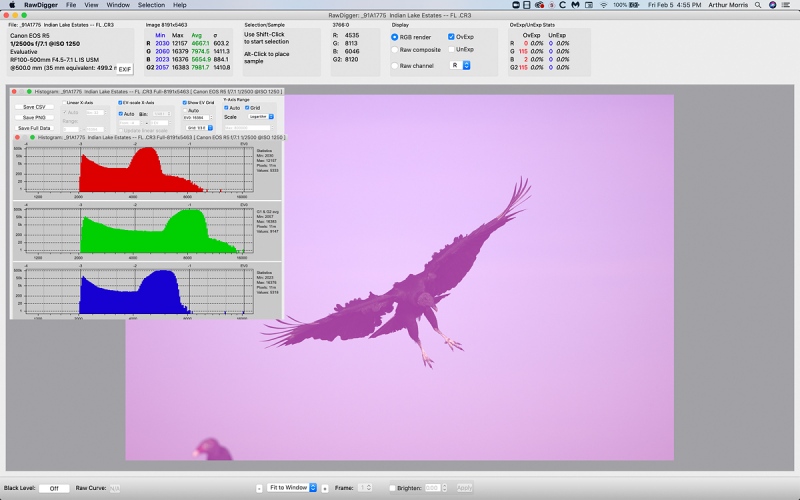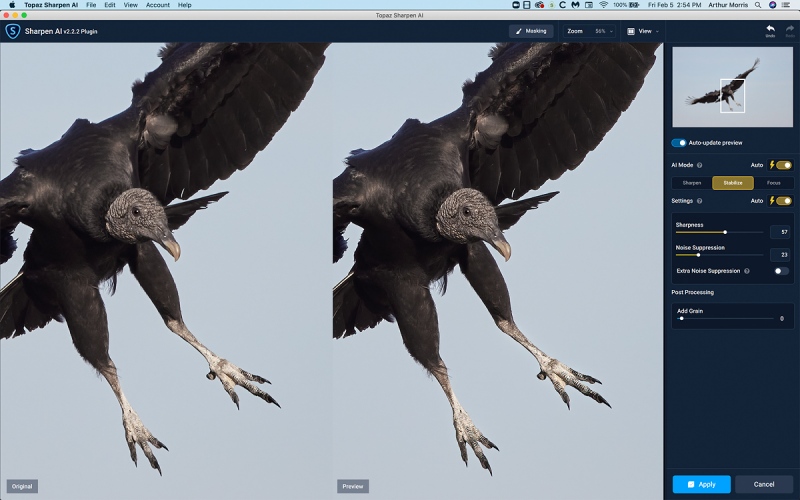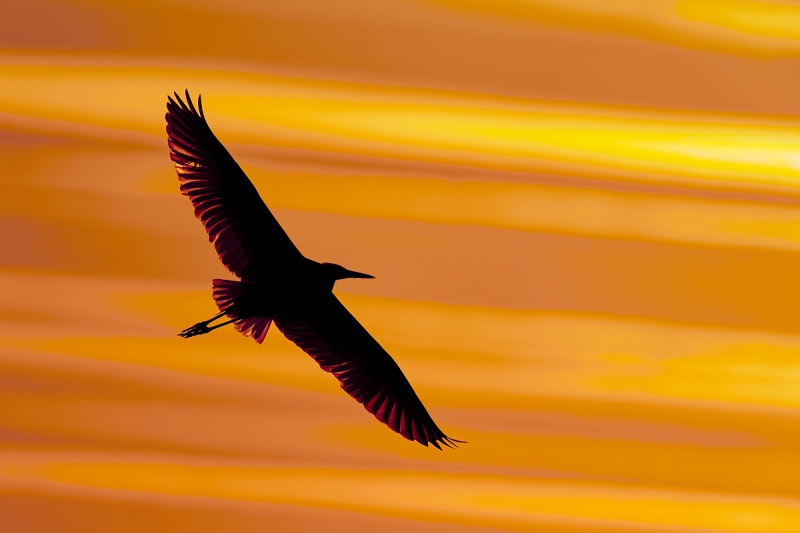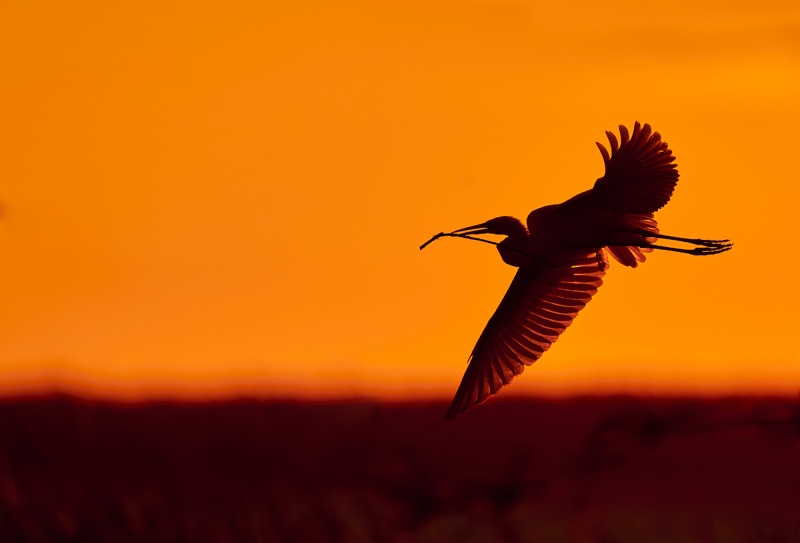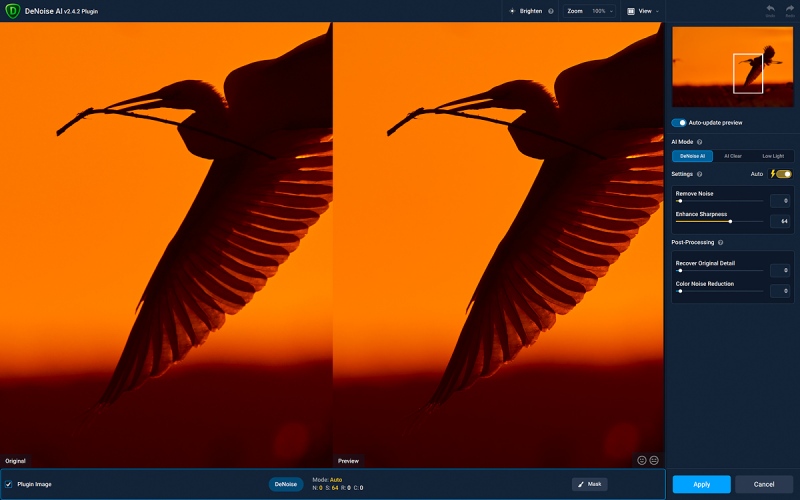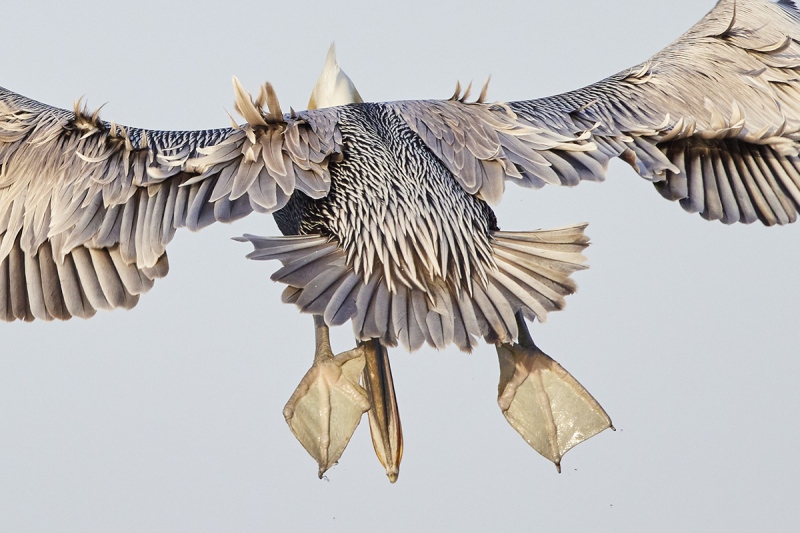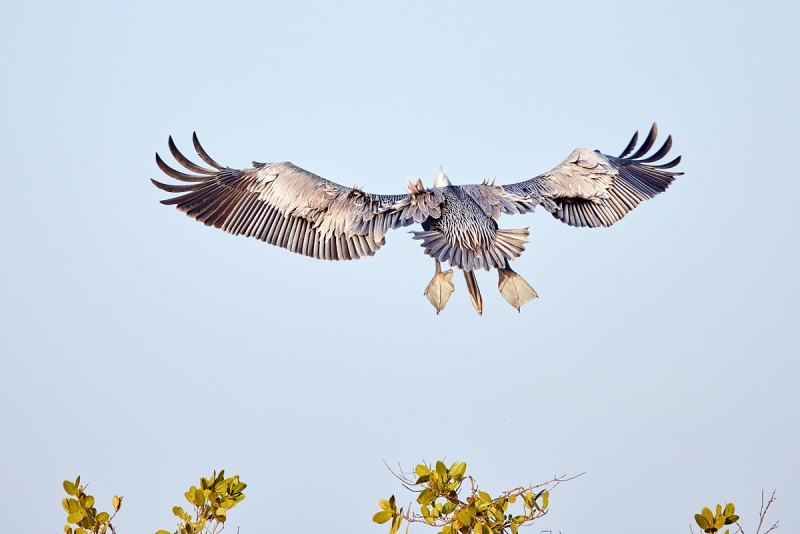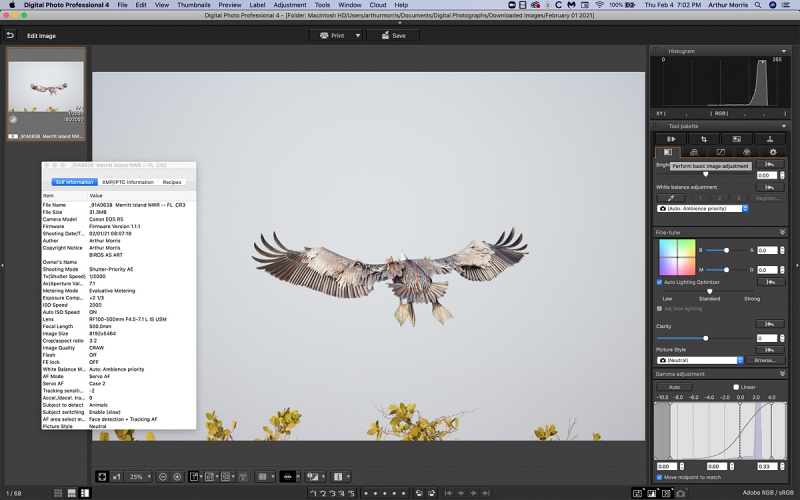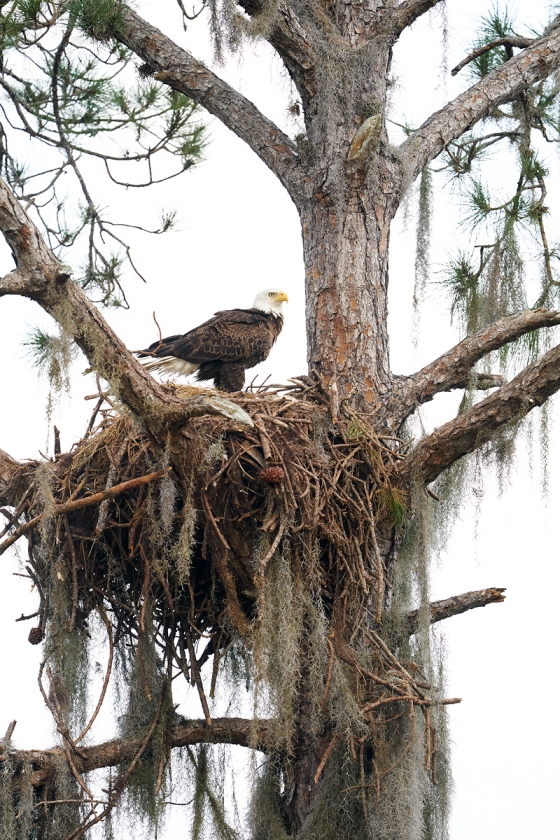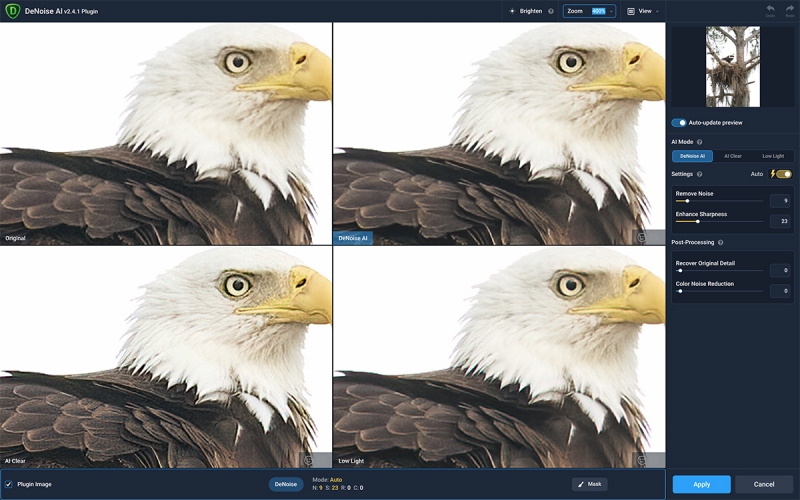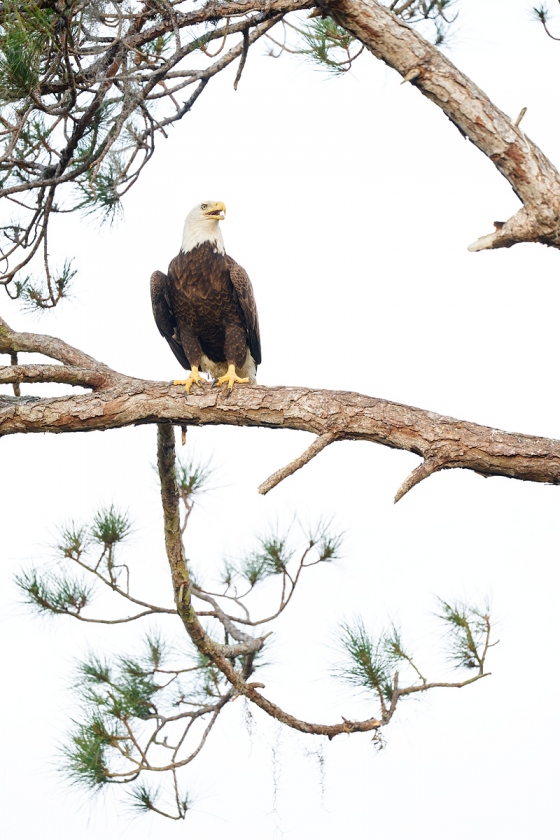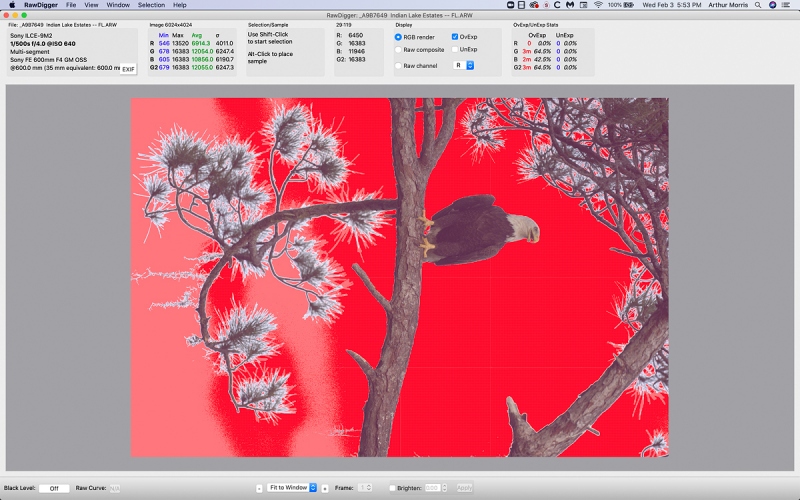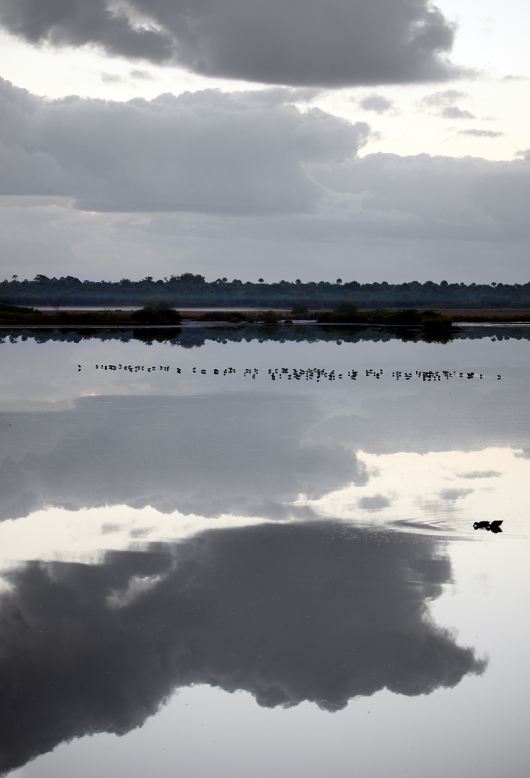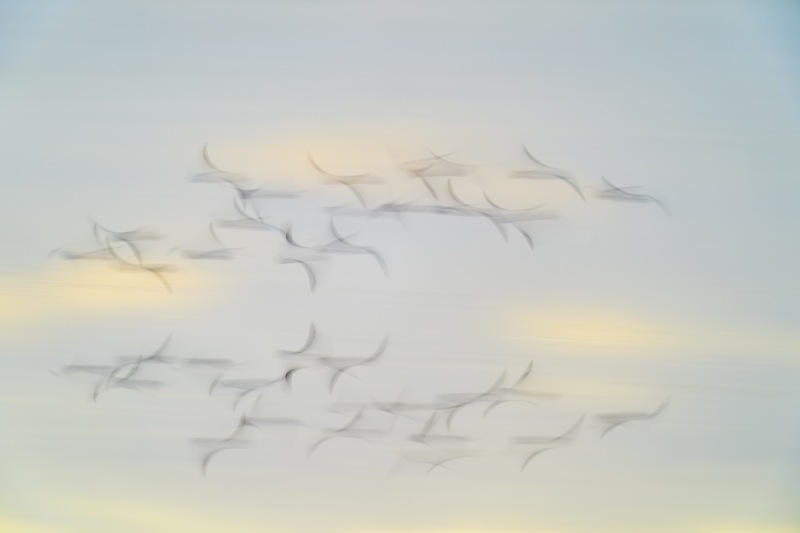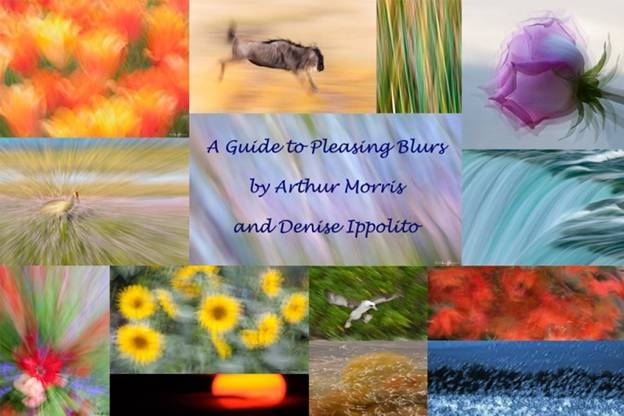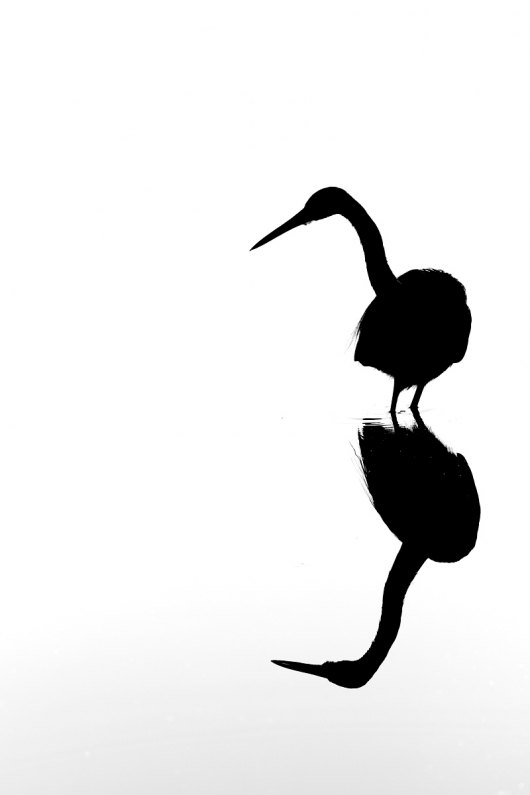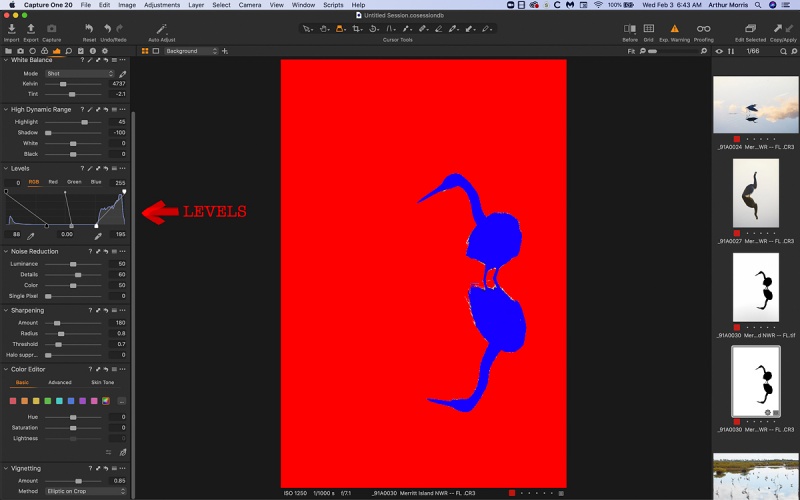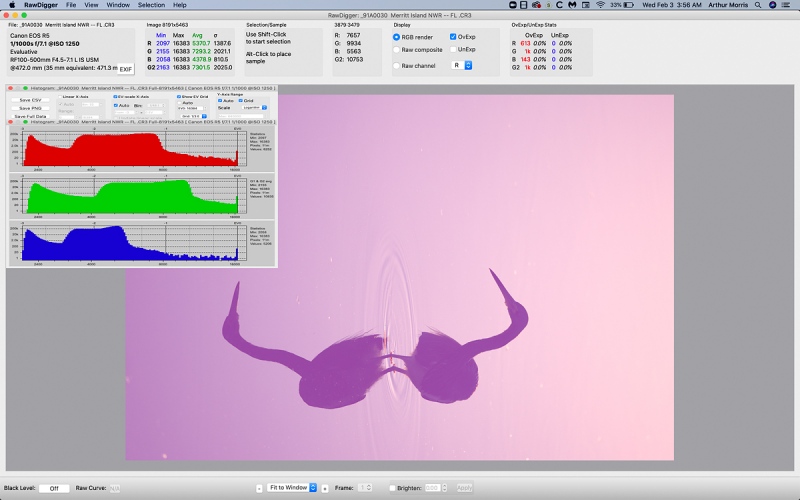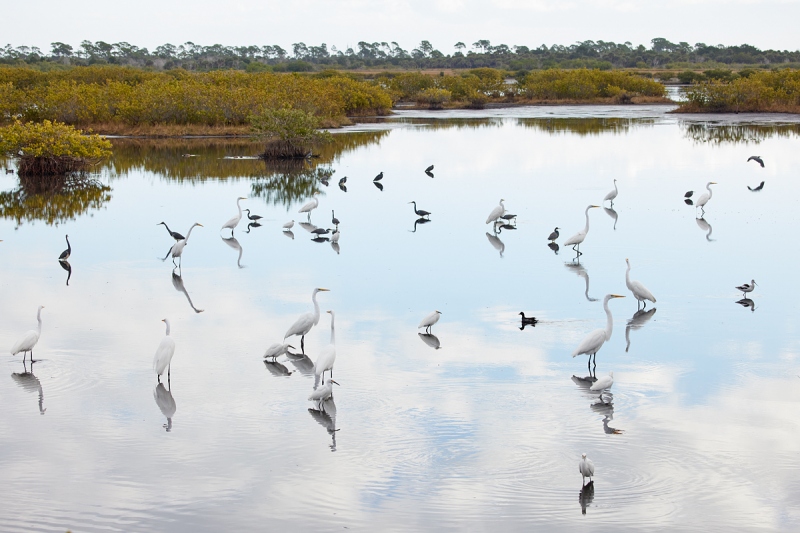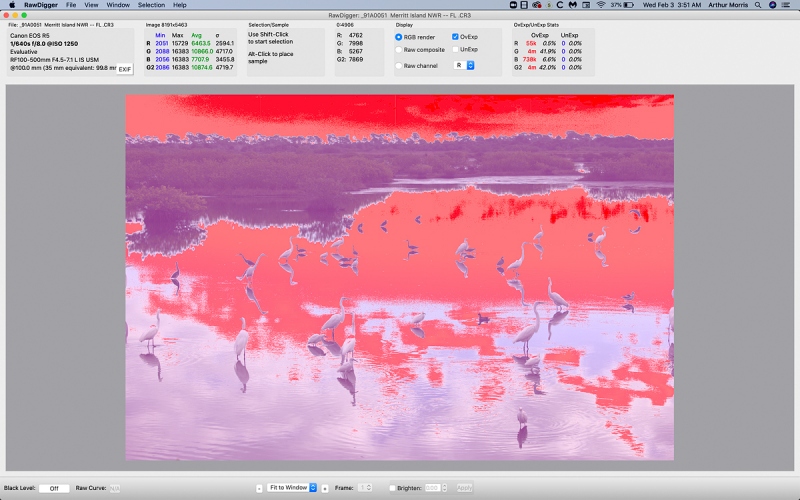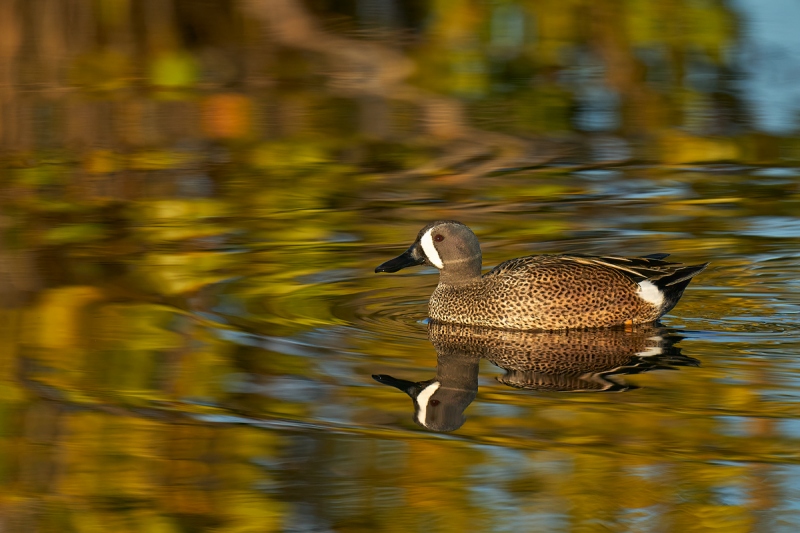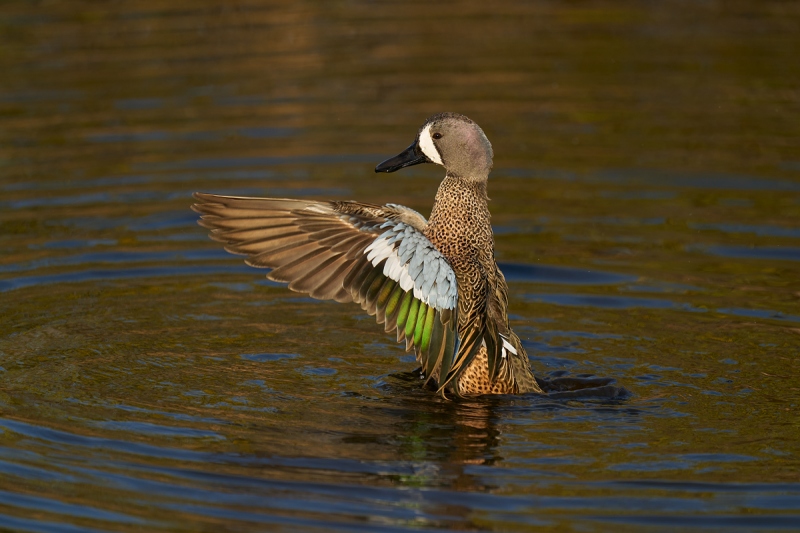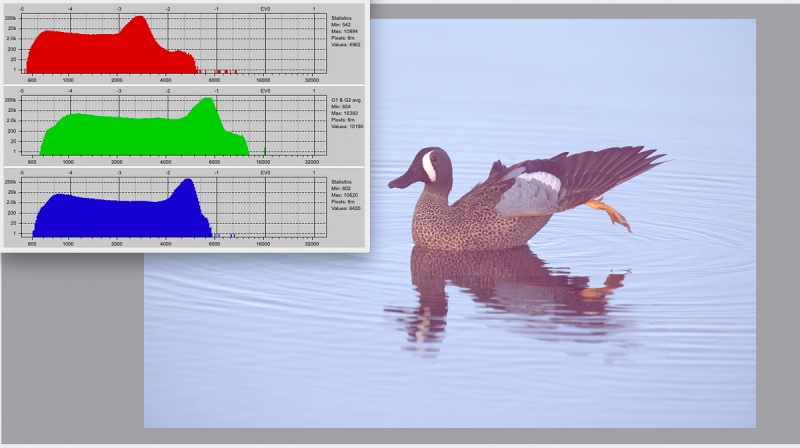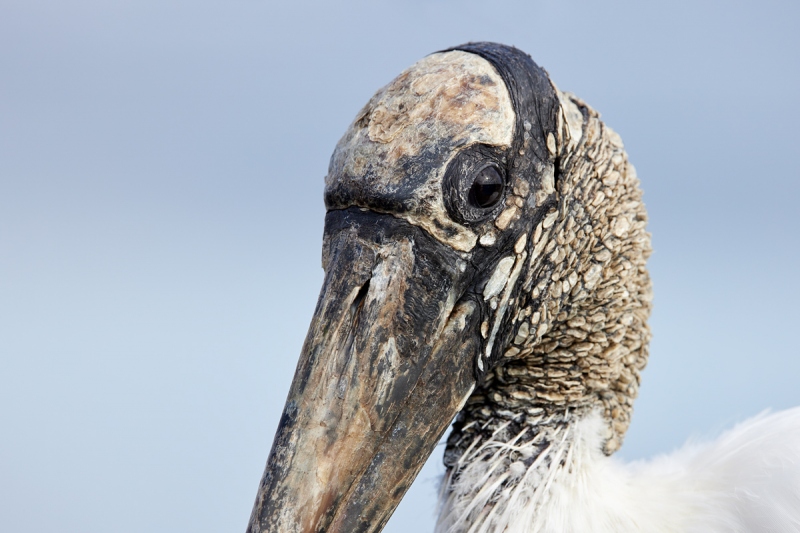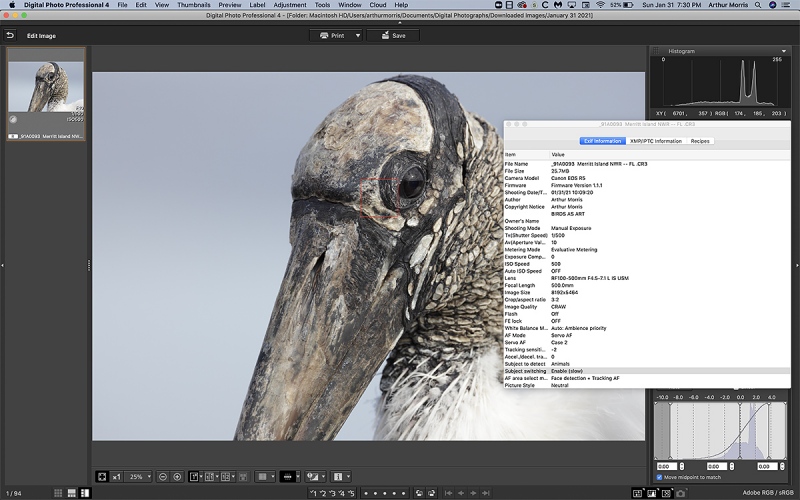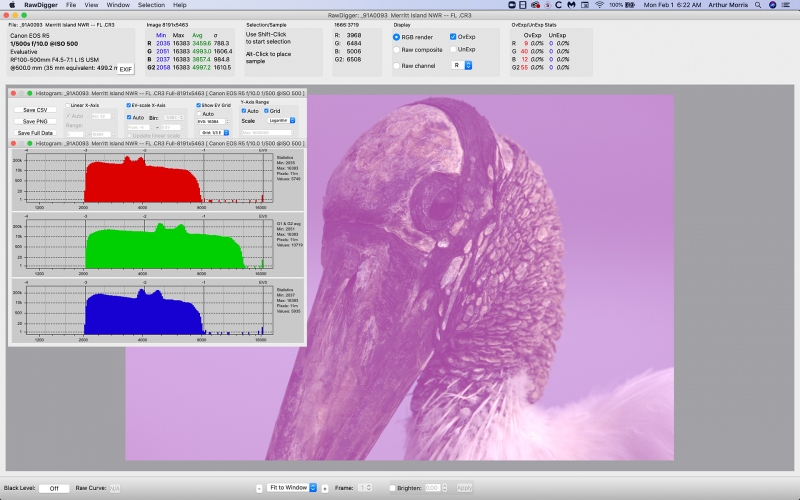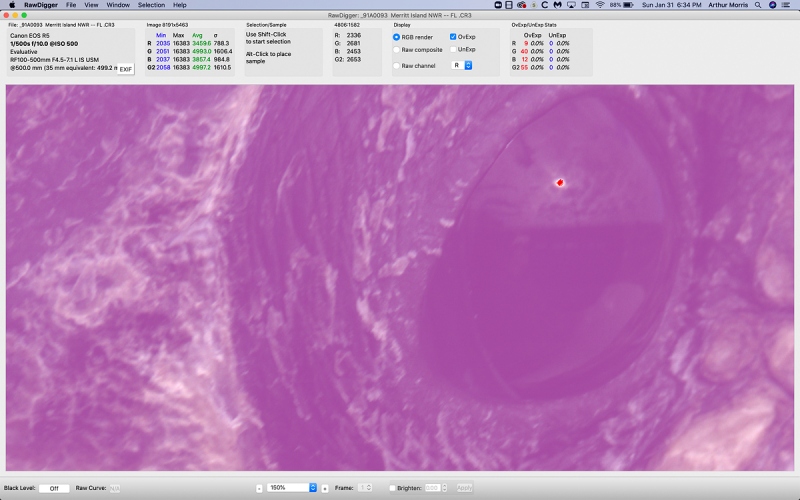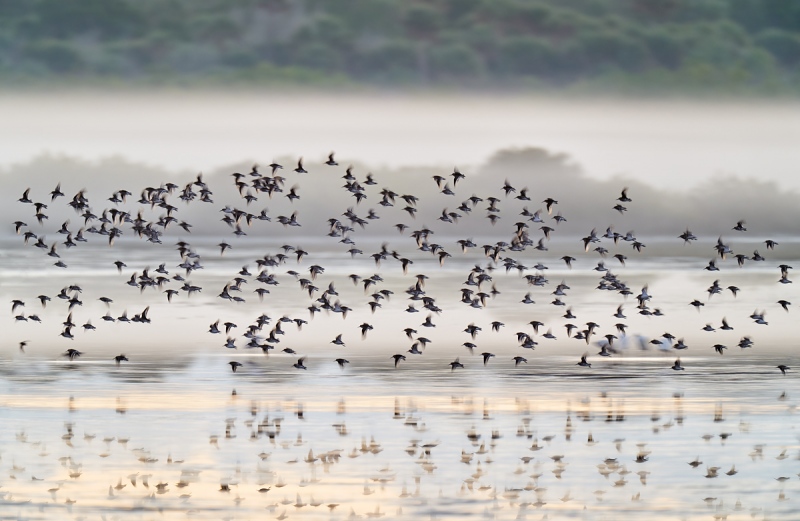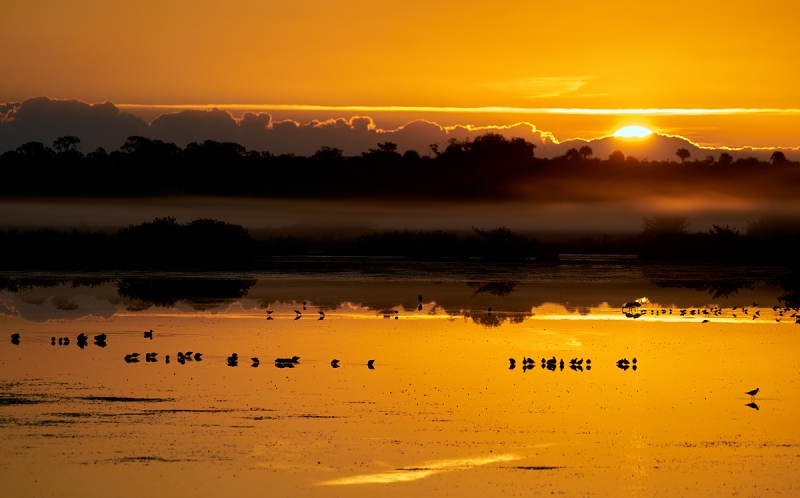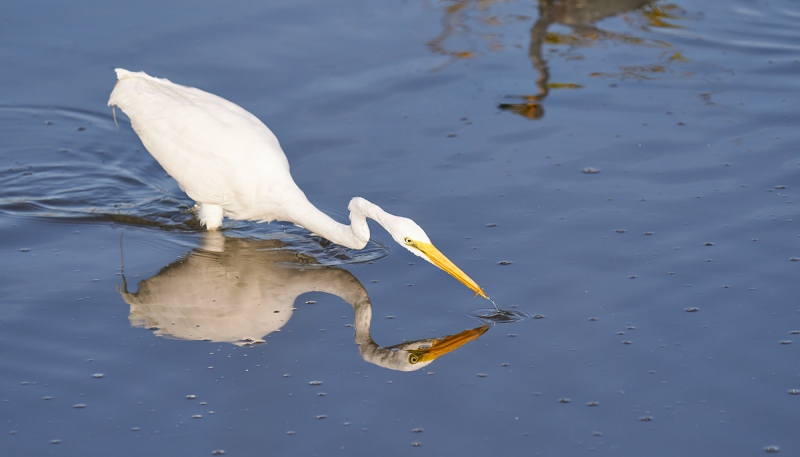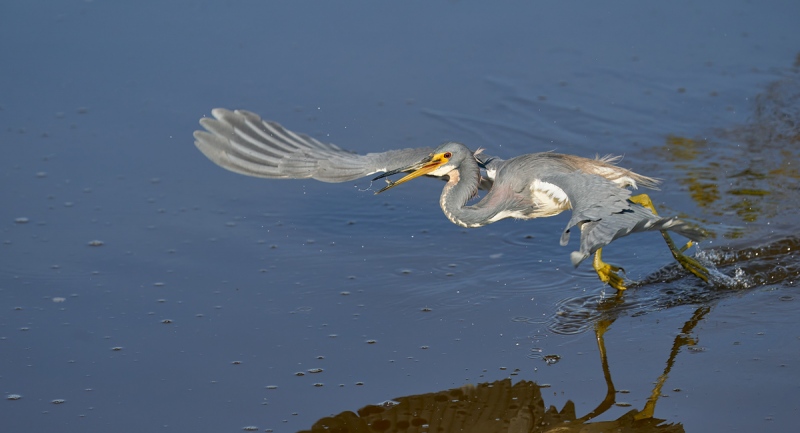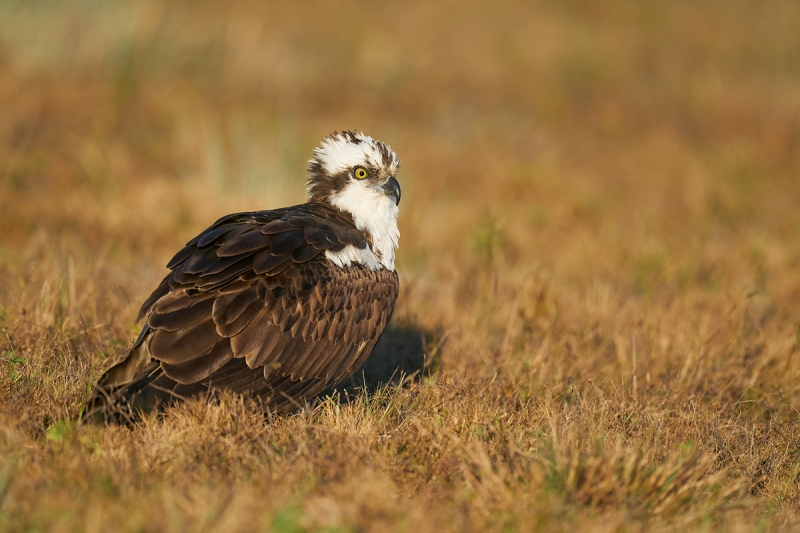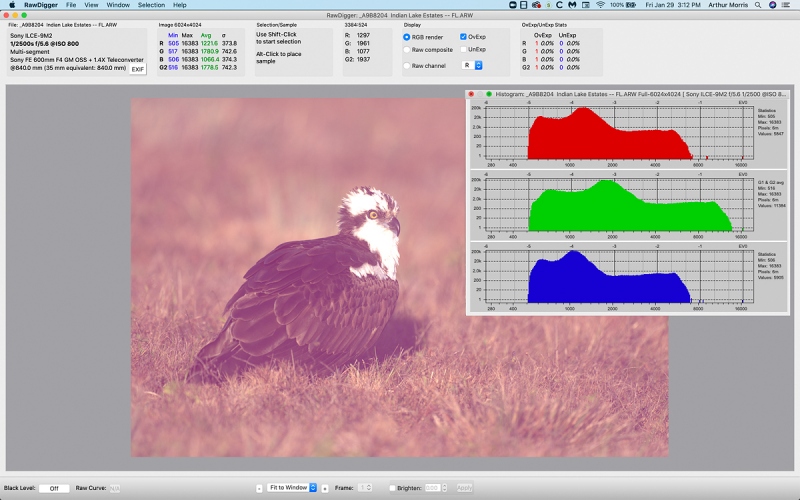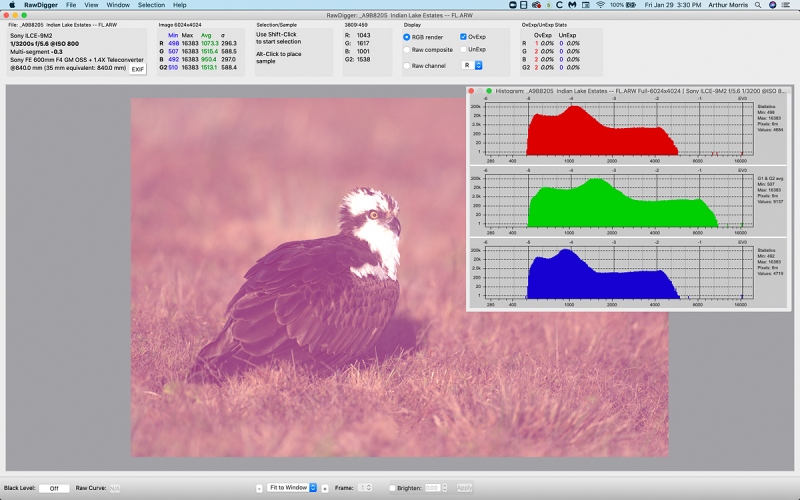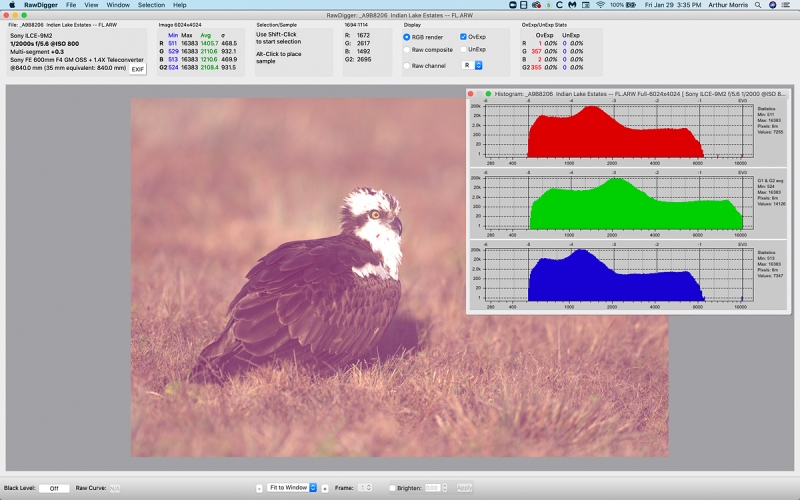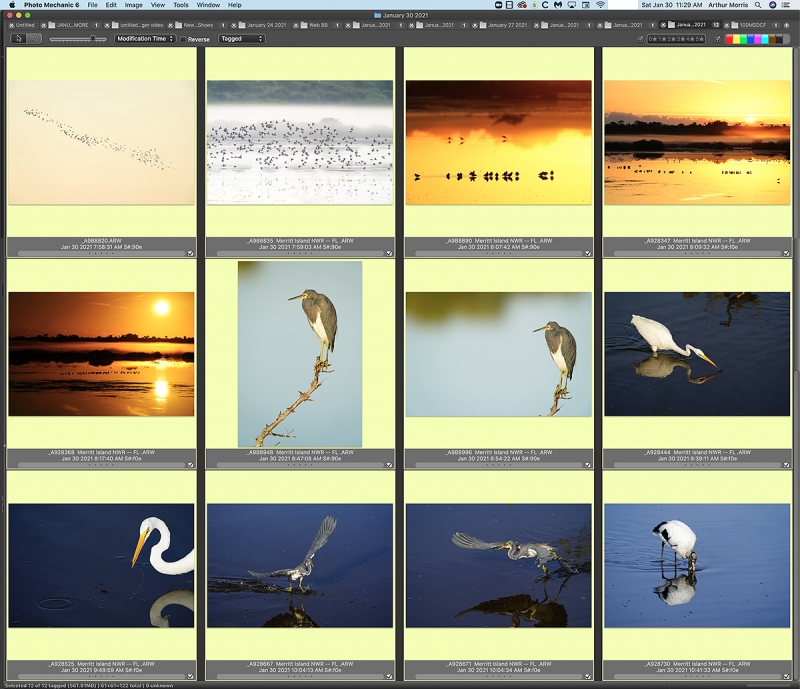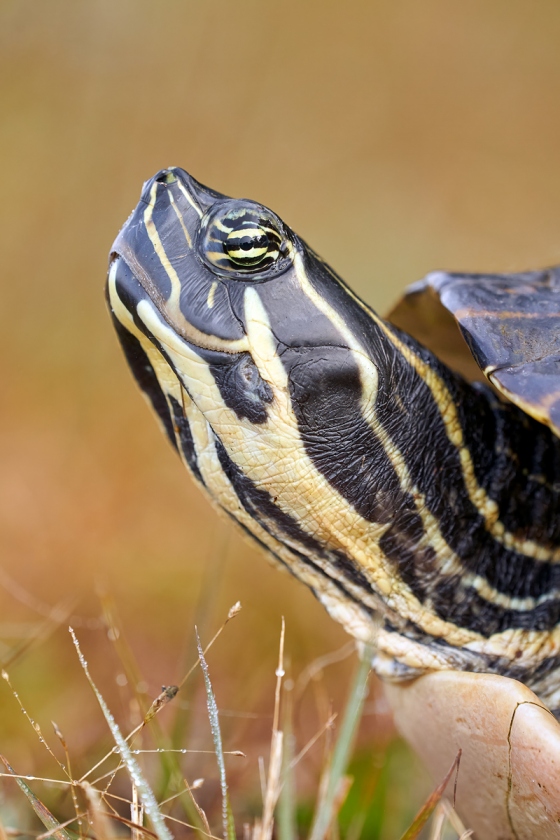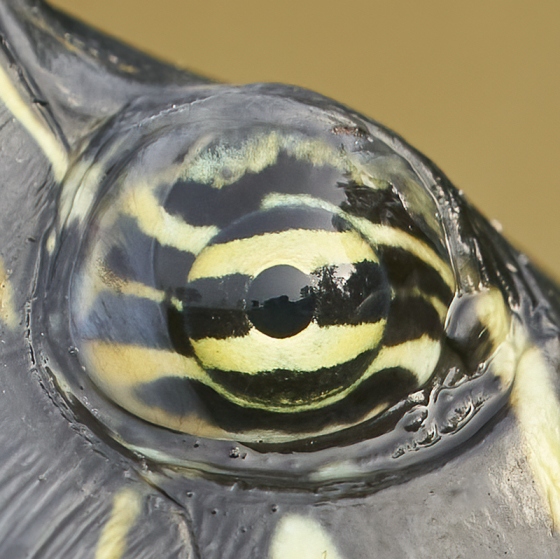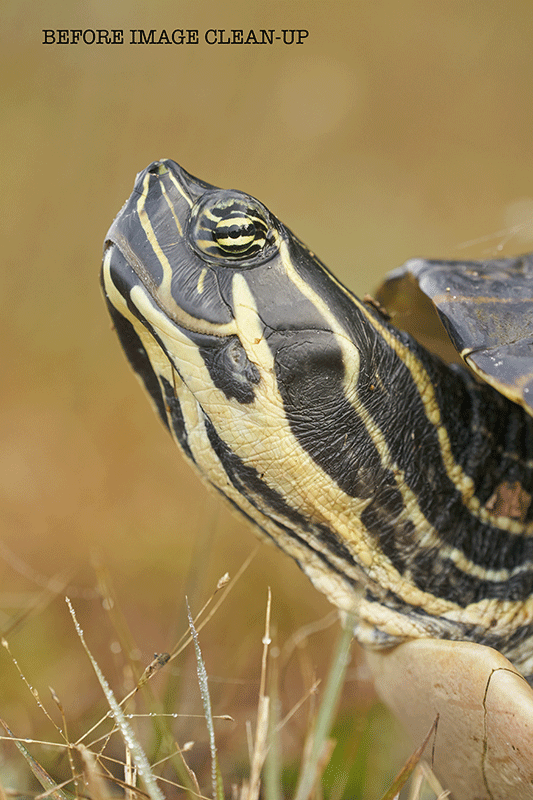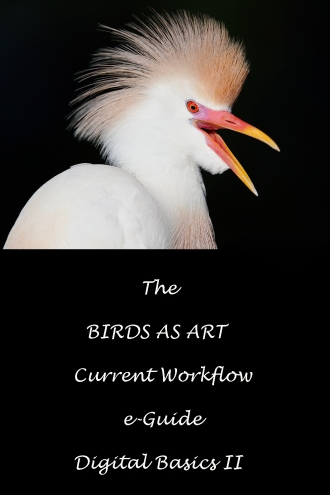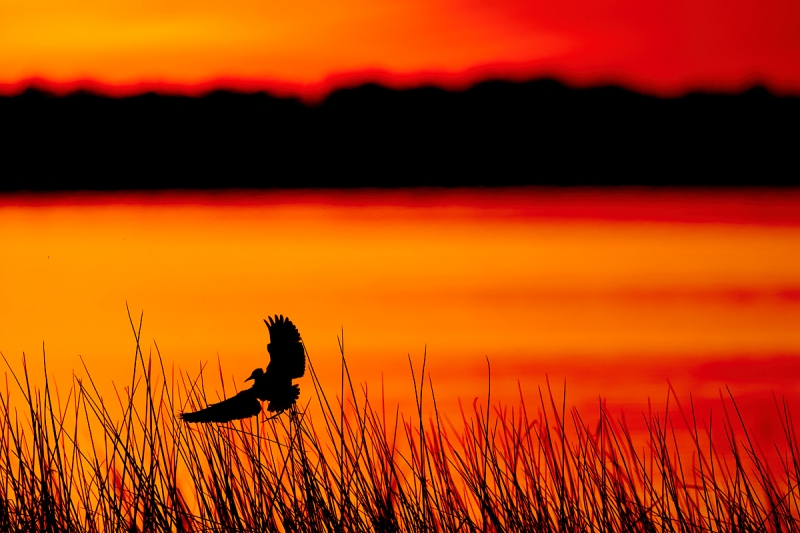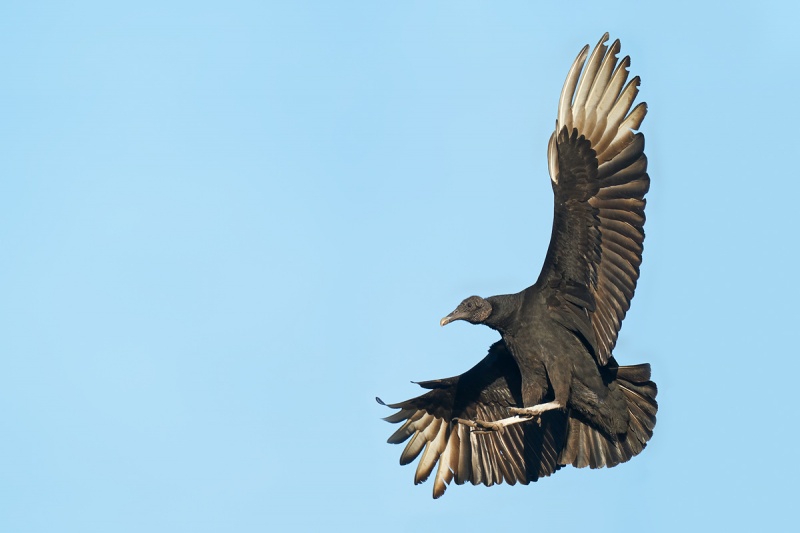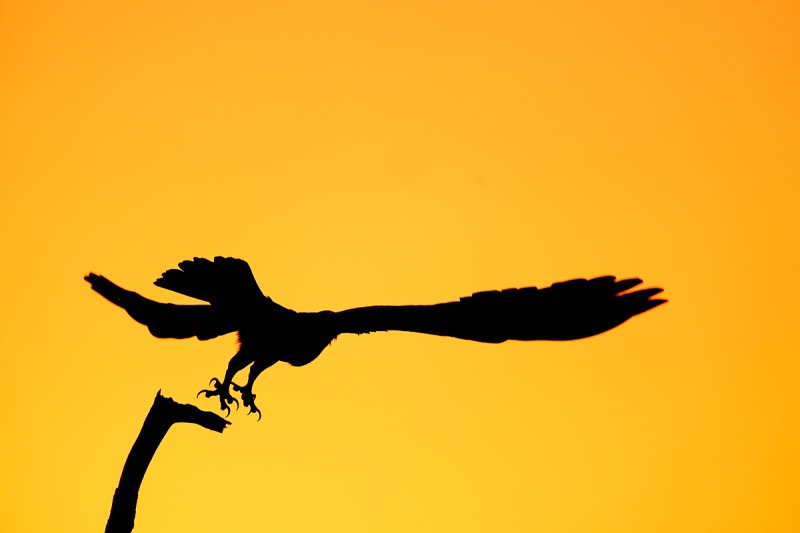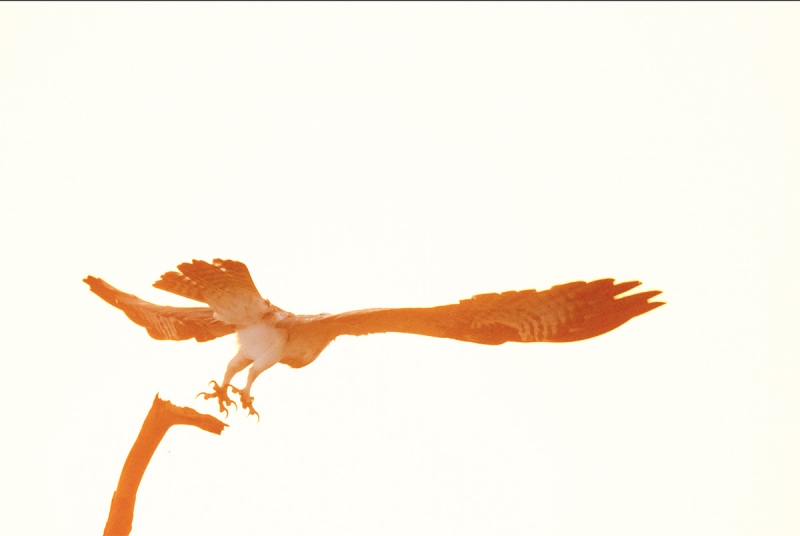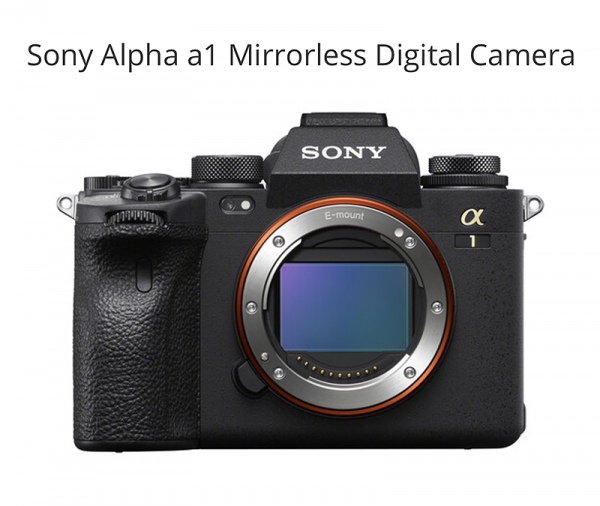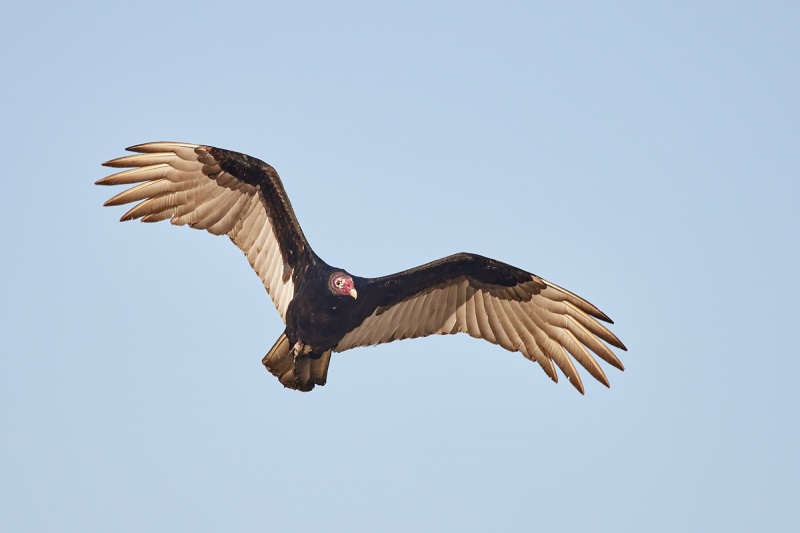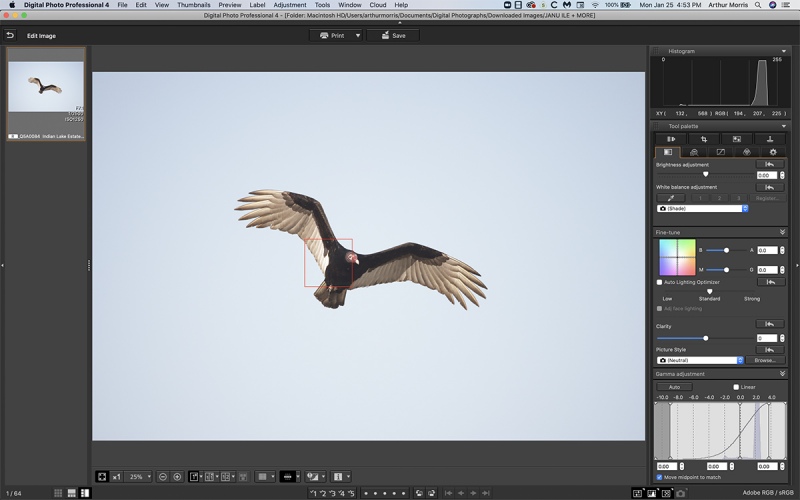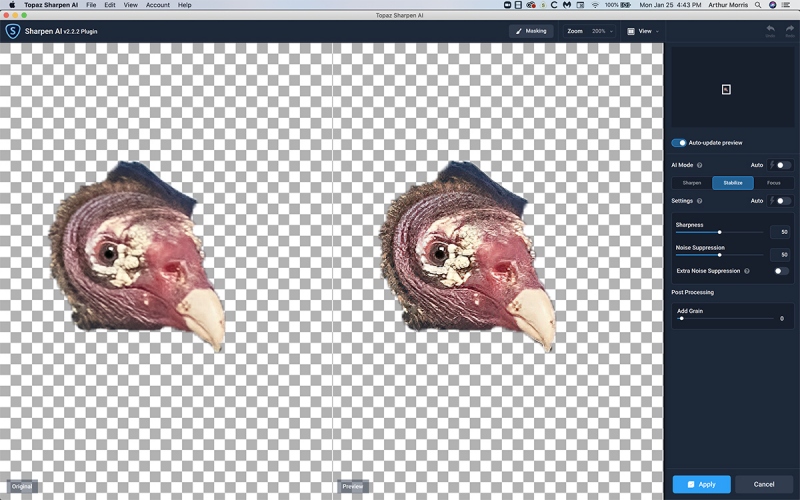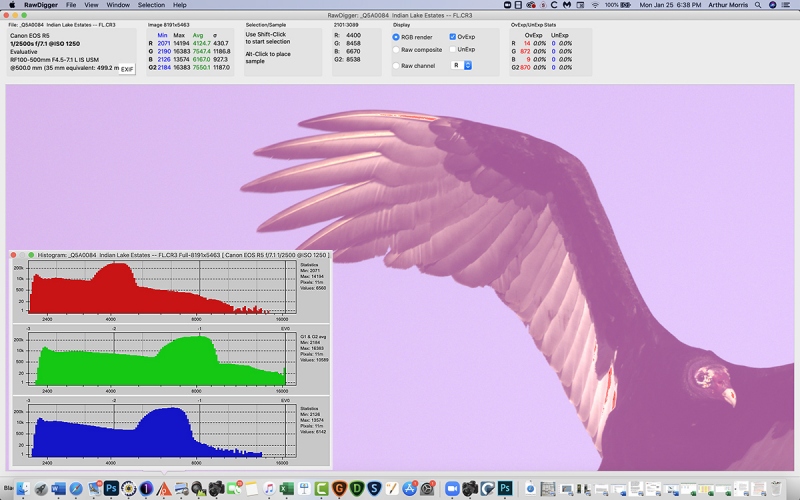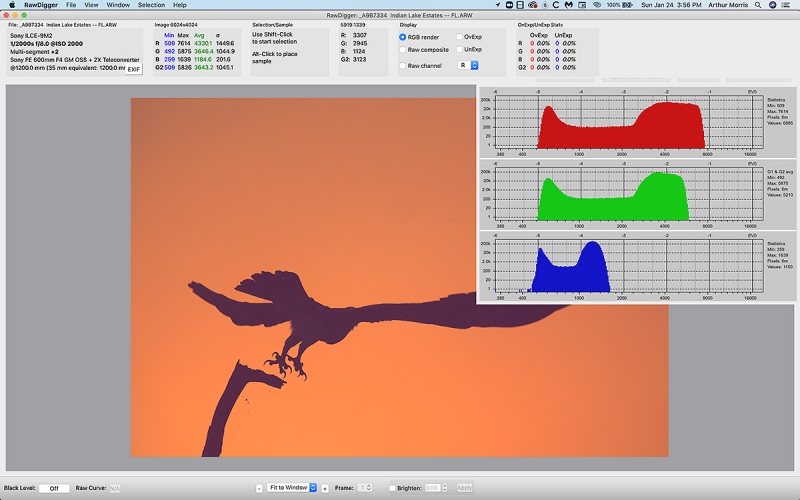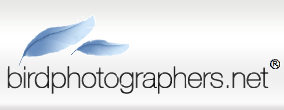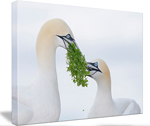February 11th, 2021 What’s Up?
Wednesday morning was mega-foggy. My morning session was uneventful. I got some work done on the BAA Canon EOS R5 Camera User’s e-Guide and will be working on the update of the BAA R5/R6 AF e-Guide later today. The latter should be completed in a very few days.
As there was lots of clouds around early last night I headed down to the lake for an early sunset. I began with side-by-side Boat-tailed Grackles singing on the (recently-repaired) Perch. The western sky looked promising but the clouds took over and the sunset session fizzled to grey.
Today is Thursday 11 February 2021. The forecast for this morning is again calling for partly cloudy skies with gentle winds from the southeast. I will be heading down to the lake early with the refrigerated armadillo in the cooler. It is not as foggy as it has been …
Good friend Clemens Van der Werf is driving up from South Florida this afternoon. I will be meeting him at Lake Blue Cypress at about 3pm. We hope to be photographing lots of Ospreys. The plan is to photograph from his boat on Friday morning and afternoon and on Saturday morning while dining on some fine fish on the pool deck during our down time.
This post took about 1 1/2 hours to prepare and makes fifty-four days in a row with a new one. Please remember …
Please Remember
With income from IPTs now at zero, please, if you enjoy and learn from the blog, remember to use one of my two affiliate programs when purchasing new gear. Doing so just might make it possible for me to avoid having to try to get a job as a Walmart greeter and will not cost you a single penny more. And if you use Bedfords and remember to enter the BIRDSASART code at checkout, you will save 3% on every order and enjoy free second-day air shipping. In these crazy times — I am out at least forty to sixty thousand dollars so far due to COVID 19 (with lots more to come) — remembering to use my B&H link or to shop at Bedfords will help me out a ton and be greatly appreciated. Overseas folks who cannot order from the US because of import fees, duties, and taxes, are invited to help out by clicking here to leave a blog thank you gift if they see fit.
Wanted to Buy
If you have a Canon EOS 7D Mark II sitting on the shelf I may have an interested buyer. Please contact me via e-mail.
The BAA Used Gear Page
The Used Gear page continues to be very active. The BAA Used Gear Page is the place to sell your used photographic equipment. We will help you to get your gear sold quickly for 20 to 60% or more than what the big guys are offering … Doubt me? Check out the Recent Sales list for the past eleven months at the bottom of the page.
Sony Alpha a7r IV Mirrorless Digital Camera Body
Price Reduced $250 on 11 FEB 2021
BAA-friend Robert Kimbrell is offering a Sony a7r IV Mirrorless Digital camera body in like-new condition for the ridiculously low price of $1948.00 (was $2198.00). The sale includes the original box and everything that came in it and insured UPS ground shipping to lower-48 US addresses. Your new camera will not ship until payment clears unless other arrangements are made.
Please contact Robert via e-mail or by phone at 1-239 848-0451 after 5pm Eastern time on weekdays only please.
For the past two years you have seen the incredible detail in my a7r IV images made with a variety of SONY lenses and both teleconverters. I’ve typically used my 7r IV for about 50% of my bird photography and my a9 II in pure flight situations. As the 7r IV sells new right now for $2998.00, you can save a cool $1050.00 by grabbing Robert’s pretty much new a7r iv. Though this 61-MP body is especially attractive to landscape and macro photographers, it is great for birds as well as you can pretty much crop to your heart’s content. artie
Sony Alpha a7r IV Mirrorless Digital Camera Body
Price Reduced $200 on 2 FEB 2021
Price Reduced $150 on 11 FEB 2021
BAA-friend Craig Elson is offering a Sony a7r IV Mirrorless Digital camera body in like-new condition for the very low price of $2048.00 (was $2398.00). The body had a glass LCD protector on it from the moment it was taken out of the box. The sale includes the original box and everything that came in it and insured UPS ground shipping to lower-48 US addresses. Your new camera will not ship until payment clears unless other arrangements are made.
Please contact Craig via e-mail or by phone at 1-704.904.7953 (Pacific time zone).
For the past two years you have seen the incredible detail in my a7r IV images made with a variety of SONY lenses and both teleconverters. I’ve typically used my 7r IV for about 50% of my bird photography and my a9 II in pure flight situations. As the 7r IV sells new right now for $2998.00, you can save a cool $950.00 by grabbing Craig’s pretty much new a7r iv. Though this 61-MP body is especially attractive to landscape and macro photographers, it is great for birds as well as you can pretty much crop to your heart’s content. artie
Sony Alpha a7r IV Mirrorless Digital Camera Body
Price Reduced $200 on 5 FEB 2021
Craig Mossey is offering a SONY a7r iv in near-mint condition with 3049 shutter actuations for the BAA record-low price of $2198.00 (was $2398.00). The sale includes the original box, one battery, the battery charger, the USB wall plug and charging cord, the original documentation, the front cap, the camera strap, and insured FEDEX ground shipping to lower US addresses only.
Please contact Craig via e-mail or by phone at 1-561.447.2911 Eastern time zone.
For the past two years you have seen the incredible detail in my a7r IV images made with a variety of SONY lenses and both teleconverters. I’ve typically used my 7r IV for about 50% of my bird photography and my a9 II in pure flight situations. As the 7r IV sells new right now for $2998.00, you can save a cool $800.00 by grabbing Craig’s practically new a7r iv. Though this 61-MP body is especially attractive to landscape and macro photographers, it is great for birds as well as you can pretty much crop to your heart’s content. artie
The RawDigger e-Guide with Two Videos
by Arthur Morris with Patrick Sparkman
The RawDigger e-Guide was created only for serious photographers who wish to get the absolute most out of their raw files.
Patrick and I began work on the guide in July 2020! At first we struggled. We asked questions. We learned about Max-G values. We puzzled as to why the Max G values for different cameras were different. IPT veteran Bart Deamer asked lots of questions that we could not answer. We got help from RawDigger creator Iliah Borg. We learned. In December, Patrick came up with an Adapted Histogram that allows us to evaluate the exposures and raw file brightness for all images created with all digital camera bodies from the last two decades. What we learned each time prompted three head-to-toe re-writes of the guide.
The point of the guide is to teach you to truly expose to the mega-Expose-to-the-Right so that you will minimize noise, maximize image quality, best utilize your camera’s dynamic range, and attain the highest possible level of shadow detail in your RAW files in every situation. In addition, your properly exposed RAW files will contain more tonal information and feature the smoothest possible transitions between tones. And your optimized images will feature rich, accurate color.
We teach you why the GREEN channel is almost always the first to over-expose. We save you money by advising you which version of RawDigger you need. We teach you how to interpret the Max G values for your Canon, Nikon, and SONY camera bodies. It is very likely that the Shock-your-World section will shock you. And lastly — thanks to the technical and practical brilliance of Patrick Sparkman — we teach you a simple way to quickly and easily evaluate your exposures and raw file brightness using an Adapted RawDigger histogram.
The flower video takes you through a session where artie edits a folder of images in Capture One while checking the exposures and Max-G values in RawDigger. The Adapted Histogram video examines a series of recent images with the pink histograms and covers lots of fine points including and especially how to deal with specular highlights. The directions for setting up the Adapted Histogram are in the text.
If we priced this guide based on how much effort we put into it, it would sell it for $999.00. But as this guide will be purchased only by a limited number of serious photographers, we have priced it at $51.00. You can order yours here in the BAA Online Store.
|
|
|
134 sold to rave reviews.
The SONY e-Guide by Patrick Sparkman and Arthur Morris
|
The Sony Camera User’s e-Guide (and Videos)
Click here to purchase the guide with one Camera Set-up Video. Be sure to e-mail us by clicking here to specify your camera body so that we can send you a link for the correct video.
Click here to purchase the guide with two Camera Set-up Videos. Be sure to e-mail us by clicking here to specify your two camera bodies so that we can send you links for the correct videos.
Click here to learn more about the SONY e-Guide.
Folks who have used my B&H affiliate links or purchased their SONY gear are invited to e-mail for discount information.
New and Better Bedfords Discount Policy!
You can now save 3% on all of your Bedfords photo gear purchases by entering the BIRDSASART coupon code at checkout. Your discount will be applied to your pre-tax total. In addition, by using the code you will get 2nd day air shipping via Fed Ex.
Grab a Nikon AF-S Teleconverter TC-14E III and save $14.99. Purchase a Canon EOS R5 and your discount will be $116.97. Purchase a Sony FE 600mm f/4 GM OSS lens and save a remarkable $389.94! Your Bedford’s purchase no longer needs to be greater than $1,000.00 for you to receive a discount. The more you spend, the more you save.
Money Saving Reminder
Many have learned that if you need a hot photo item that is out of stock at B&H and would enjoy free overnight shipping, your best bet is to click here, place an order with Bedfords, and enter the coupon code BIRDSASART at checkout. If an item is out of stock, contact Steve Elkins via e-mail or on his cell phone at (479) 381-2592 (Central time). Be sure to mention the BIRDSASART coupon code and use it for your online order to save 3% and enjoy free 2nd-day air shipping. Steve has been great at getting folks the hot items that are out of stock at B&H and everywhere else. The wait lists at the big stores can be a year or longer for the hard to get items. Steve will surely get you your gear long before that. For the past year, he has been helping BAA Blog folks get their hands on items like the SONY a9 ii, the SONY 200-600 G OSS lens, the Canon EOS R5, the Canon RF 100-500mm lens, and the Nikon 500mm PF. Steve is personable, helpful, and eager to please.


Gear Questions and Advice
Too many folks attending BAA IPTs (remember those?) and dozens of photographers whom I see in the field and on BPN, are–out of ignorance–using the wrong gear especially when it comes to tripods and more especially, tripod heads… Please know that I am always glad to answer your gear questions via e-mail. Those questions might deal with systems, camera bodies, accessories, and/or lens choices.
|
|
|
This image was created late on 31 January 2021 at Black Point Drive, Merritt Island NWR, FL. Working from the crushed-limestone road, I used the Induro GIT 404L/Levered-clamp FlexShooter Pro-mounted Sony FE 600mm f/4 GM OSS lens, Sony FE 1.4x teleconverter, and the blazingly fast AF King, the Sony Alpha a9 II Mirrorless Digital Camera Body. ISO 500. The exposure was determined by Zebras with ISO on the rear wheel: 1/2000 sec at f/5.6 in Manual mode. RawDigger (see below) showed this one to be perfect. AWB at 7:27am on as the sun struggled to break through the clouds.
Tracking Expand Flexible Spot/AF-C was active at the moment of exposure and performed to perfection. Click the image to see a larger version.
Image #1: Tricolored Heron ruffling sunset silhouette
|
Completing the Flopped Reflection in Photoshop
Today’s featured image was actually made on the Pewter Visions morning when the sun was just breaking through the clouds. As we saw in yesterday’s blog post, I mis-framed the image and cut off part of the reflection. After converting the image in Capture One, I brought the image in Photoshop, expanded canvas below using the Crop Tool method and Content-Aware Fill. The reflection of the bird’s back was a mess. I resorted to a series of Quick Masks to make the repairs. Most important was a vertically flopped, Gaussian-blurred Quick Mask of the bird’s back. All of the Quick Masks were first transformed and then refined by Regular Layer Masks. All (but the Capture One conversion) are detailed in Digital Basics II and APTATS I & II.
The job would have been a lot easier if I knew how to use gradients in Photoshop as the background was darker on the left as the sun was just out of frame on our right of the frame. I will learn to use gradients soon.
|
|
Image #1A: The RawDigger Adapted (pink) Histogram for the Tricolored Heron ruffling sunset silhouette. image
|
The RawDigger Adapted (pink) Histogram
Thanks to the Zebra technology, making perfect exposures with SONY is far easier than it is with the Canon R5 even in difficult situations (as was the case with today’s featured image.
In the RawDigger e-Guide, Patrick and I teach you how to set up and evaluate the Adapted (pink) Histogram. The adapted histogram was completely Patrick’s creation, and works with raw files from pretty much any digital camera now in use. It greatly simplifies all things RawDigger. In the guide you will — of course — learn why the exposure for this raw file is 100% dead-solid perfect.
On an un-related note, the R5 does much better with sensor dust than the SONY bodies. It took me quite a while to clean all the dust posts in today’s SONY image.
Typos
In all blog posts and Bulletins, feel free to e-mail or to leave a comment regarding any typos or errors.
February 10th, 2021 What’s Up?
Tuesday morning was mega-foggy. Working with the handheld RF/RF 100-500, I played around with HDR flight and deleted them all. I kept a few images of a dewy spider web and a few of an aquatic plant. I got lots more done on both the BAA Canon EOS R5 Camera User’s e-Guide and the update of the BAA R5/R6 AF e-Guide. The latter should be completed in a very few days.
The sky was gorgeous last night and there was very little wind. I glanced at that folder this morning and was thrilled to see a few very good ones. And even more near-misses … All with the SONY 600 GM, the 2X TC, and the a9 ii. It is amazing that we have come to the point that flight photography with SONY at 1200mm is just another day at the office.
Today is Wednesday 10 February 2021. The forecast for this morning is calling for partly cloudy skies with gentle winds from the southeast. I will be heading down to the lake early, probably with the refrigerated armadillo in the cooler.
I peeked out of my office door at 7:07am to see another totally foggy morning.
This post took about 2 hours to prepare and makes fifty-three days in a row with a new one. Please remember …
Please Remember
With income from IPTs now at zero, please, if you enjoy and learn from the blog, remember to use one of my two affiliate programs when purchasing new gear. Doing so just might make it possible for me to avoid having to try to get a job as a Walmart greeter and will not cost you a single penny more. And if you use Bedfords and remember to enter the BIRDSASART code at checkout, you will save 3% on every order and enjoy free second-day air shipping. In these crazy times — I am out at least forty to sixty thousand dollars so far due to COVID 19 (with lots more to come) — remembering to use my B&H link or to shop at Bedfords will help me out a ton and be greatly appreciated. Overseas folks who cannot order from the US because of import fees, duties, and taxes, are invited to help out by clicking here to leave a blog thank you gift if they see fit.
Canon R5/R6 AF e-Guide Info
So far, 104 folks have sent PayPals for their copy of the Canon R5/R6 AF e-Guide. And 33 who used my affiliate links to purchase their R5 have e-mailed for and received their free copy of the guide. If you e-mailed your Bedford receipt or sent a PayPal and did not receive your guide, please LMK immediately via e-mail.
Feedback has been overwhelmingly positive so far. Three folks wrote stating that they had a better way of setting up AF on their R5s. When I wrote back explaining why they were in error, two of them back-tracked. One stubborn guy is still doing it his way — less efficiently. Be sure to scroll down to read about my plans for a Canon R5/R6 User’s e-Guide. Understand that the info in the BAA Canon R5/R6 Autofocus e-Guide is so important that I opted to publish the AF guide immediately as the R5/R6 User’s Guide will take at least another month to finish.
|
|
BAA Canon R5/R6 Autofocus e-Guide
|
BAA Canon R5/R6 Autofocus e-Guide
Twenty-one pages. 3,452 words. 28-DPP4 screen captures showing the R5’s vaunted AF system in action. Note: the AF system of the R5 is identical to the AF system of the R6.
You will learn:
1- The two most useful AF Methods for general bird photography and for birds in flight.
2- How to set up your R5/R6 AF Menus.
3- What boxes to check (and un-check) under Limit AF Methods.
4- How to change the AF Method quickly, easily, and efficiently. Note: the default way of doing this is clunky, cumbersome, and inefficient at best. One person replied that this tip alone was worth the price of admission.
5- The only setting that should be used for Initial Servo AF pt for Face Detection + Tracking.
I you are currently using multiple back buttons either for general bird photography or for birds in flight, what you learn in this guide will change your life. For the better.
Here are the first three paragraphs of this e-Guide:
From the moment I learned about the new Canon mirrorless bodies, I read about using two or three back-buttons to focus using different AF methods. The word on the street said that the way to go for birds in flight was to use one button to acquire focus with Zone AF or with Large Zone: Horizontal AF and then switch to another button to activate Face Detection + Tracking AF and then use the shutter button to make an image. My immediate thought was, “This is insanity! There has got to be a better way.” In short, there is a far superior way to set up AF on your R5 or R6.
Remember that I got away from any form of back-button or rear focusing many years ago after finally realizing that it is always easier to do one thing (press the shutter button), than it is to do two things (press a back button and then press the shutter button).
The default method of switching AF Methods with the R5/R6 bodies is cumbersome at best. It involves first pressing the grid button (my name) on the upper right back of the camera and then pressing the hard-to-access M-Fn button to toggle through the AF Methods. This method is so bad that it will not be mentioned again in this guide.
The guide is free to all who have ordered an R5 or an R6 using my B&H affiliate link or from Steve Elkins/Bedfords using the BIRDSASART coupon code at checkout. Please send your receipt to me via e-mail. It will take me a few days to a week to verify the B&H purchases. Bedfords folks should expect their free e-Guides fairly quickly.
To purchase your copy of the e-Guide, please click here or send a PayPal for $25.00 to birdsasart@verizon.net and be sure to include the words R5/R6 AF Guide in your PayPal e-mail.
Everyone who gets the guide will receive a free update no later than the first week in February.
Canon EOS R5 Camera User’s e-Guide
As regular readers know, I am working on a complete Canon R5 Camera User’s e-Guide. This will require a lot of research, a lot of time, and a lot of effort. I am hoping to have it complete by late February. As always, folks who use the BAA affiliate links to purchase their Canon gear will receive a substantial discount.
Understand that the info in the BAA Canon R5/R6 Autofocus e-Guide is so important that I opted to publish the AF guide right off the bat to help folks get started with their new camera bodies. I may soon offer a pre-publication version of the User’s e-Guide … With a small discount, of course.
New and Better Bedfords Discount Policy!
You can now save 3% on all of your Bedfords photo gear purchases by entering the BIRDSASART coupon code at checkout. Your discount will be applied to your pre-tax total. In addition, by using the code you will get 2nd day air shipping via Fed Ex.
Grab a Nikon AF-S Teleconverter TC-14E III and save $14.99. Purchase a Canon EOS R5 and your discount will be $116.97. Purchase a Sony FE 600mm f/4 GM OSS lens and save a remarkable $389.94! Your Bedford’s purchase no longer needs to be greater than $1,000.00 for you to receive a discount. The more you spend, the more you save.
Money Saving Reminder
Many have learned that if you need a hot photo item that is out of stock at B&H and would enjoy free overnight shipping, your best bet is to click here, place an order with Bedfords, and enter the coupon code BIRDSASART at checkout. If an item is out of stock, contact Steve Elkins via e-mail or on his cell phone at (479) 381-2592 (Central time). Be sure to mention the BIRDSASART coupon code and use it for your online order to save 3% and enjoy free 2nd-day air shipping. Steve has been great at getting folks the hot items that are out of stock at B&H and everywhere else. The wait lists at the big stores can be a year or longer for the hard to get items. Steve will surely get you your gear long before that. For the past year, he has been helping BAA Blog folks get their hands on items like the SONY a9 ii, the SONY 200-600 G OSS lens, the Canon EOS R5, the Canon RF 100-500mm lens, and the Nikon 500mm PF. Steve is personable, helpful, and eager to please.


Gear Questions and Advice
Too many folks attending BAA IPTs (remember those?) and dozens of photographers whom I see in the field and on BPN, are–out of ignorance–using the wrong gear especially when it comes to tripods and more especially, tripod heads… Please know that I am always glad to answer your gear questions via e-mail. Those questions might deal with systems, camera bodies, accessories, and/or lens choices and decisions.
AF Performs Perfectly
Click on the screen capture above to enlarge it and note that Face Detection + Tracking AF-C with the handheld R5/RF 100-500 performed perfectly by nailing the bird’s eye. But …
Operator Error Prevails (at First)
The image design of the photo on our left is very poor at best as the bird is too low in the frame with lots of unbalanced dead space above the bird’s head. The image on our right is much stronger with the bird well up and well back in the frame. Same situation. Same photographer. Getting these head portrait compositions down pat has been a big challenge for more than a year. That despite the fact that SONY’s Zone AF, Tracking Flexible Spot (M), and Tracking Expand Flexible Spot perform perfectly more than nine times out of ten. And the same can be said about the Canon R5’s Face Detection + Tracking AF-C system.
As I have stated here often and written in all of the relevant e-Guides, the photographer must take great care in framing the images to come up with a pleasing image design. And that is true whether you are hand-holding or work on a tripod with a FlexShooter head.
Again, AF Performs Perfectly
As explained in the BAA R5/R6 AF e-Guide, Face Detection + Tracking AF-C will often revert to various-sized squares or rectangles or perform like Zone AF (as we see with the image on our left). No matter — the dancing AF points have painted the bird’s face and the image is perfectly sharp on the bird’s eye. In the image on our right, Face Detection + Tracking AF-C nailed the bird’s eye. But …
And Again, Operator Error Prevails (at First)
Despite the fact that the AF system performed more-than-adequately with the R5/RF 100-500 image on our left, the image is a total failure; the subject was mis-framed by the operator, moi. The top of the bird’s head is almost touching the left frame-edge. I did get things right with the image on our right by centering the bird from side to side. Note also that by crouching a bit and getting lower, I brought more blue into the upper background.
The point here remains that the design of the image is 100% in the hands of the person holding the lens. No matter how accurate, sophisticated, and amazing the AF systems have become, only the operator can create a pleasing image design.
The SONY AF System is Equally Amazing
Above, working on Black Point Drive at Merritt Island NWR with the tripod-mounted SONY 600 GM, the 1.4X TC, and the a9 ii, Center Zone AF-C performed 100% perfectly. Can we say the same about the operator?
The Operator Fails at the Decisive Moment …
Can we say that the operator performed perfectly when he clicked the shutter for the image on our right? No. The operator failed at the decisive moment despite the AF system performing perfectly. The image on our left is framed perfectly as it includes the complete reflection of the subject. When the bird leaned forward to ruffle, the AF system continued to perform perfectly, but the operator did not. I failed to point the lens down a bit as I should have. Had I done that, the image made at the decisive moment would have included the complete reflection of the subject. I kicked myself at the time as I knew what I had done.
Though I am pretty sure that Center Zone AF would have held focus and allowed me to include the entire reflection, Wide AF would surely have been a better choice. Learning as always, I have begun using Wide for my sunset sessions down at the lake so that I can enjoy more compositional freedom as I try to nail the birds above the reeds and below the far shoreline. Remember that Patrick Sparkman prefers Wide over Zone …
Image Question
Would it be possible to save the Tricolored Heron image on our right, _A9B9481? If yes, how?
Typos
In all blog posts and Bulletins, feel free to e-mail or to leave a comment regarding any typos or errors.
February 9th, 2021
Ever Hear of Richard I. Bong?
Richard Ira Bong was a United States Army Air Forces major and Medal of Honor recipient in World War II. He was one of the most decorated American fighter pilots and the country’s top flying ace in the war, credited with shooting down 40 Japanese aircraft, all while flying the Lockheed P-38 Lightning fighter. Soon after returning home, he died in California on August 6, 1945 while testing a Lockheed P-80 jet fighter just before his 25th birthday. The previous February he married Marjorie Vattendahl, whose picture had adorned the nose of his plane.
While learning to fly a P-38, Bong buzzed a nearby house, the home of a pilot who had just been married. He was cited and temporarily grounded for breaking flying rules, along with three other P-38 pilots who had looped around the Golden Gate Bridge on the same day. For looping the Golden Gate Bridge, flying at a low level down Market Street in San Francisco, and blowing the clothes off of an Oakland woman’s clothesline, Bong was reprimanded by General George C. Kenney, commanding officer of the Fourth Air Force, who told him, “If you didn’t want to fly down Market Street, I wouldn’t have you in my Air Force, but you are not to do it any more and I mean what I say.” Kenney later wrote, “We needed kids like this lad.”
Learn more about this amazing hero/pilot in the Wikipedia article here.
What’s Up?
It was very grey on Monday morning. I spent 30 minutes driving around down by the lake but was not much inspired. For the rest of the day, I got a lot more work done on the BAA Canon EOS R5 Camera User’s e-Guide. I have pretty much completed all of the work on the following menus: the Red Shooting Menu, the Magenta AF Menu, and the Blue Playback Menu. Nothing for me to do with the Purple Network Menu as I do not reside on that planet. I am almost finished with the Yellow Set-up Menu. Still to do: the Orange Custom Functions Menu and the Green My Menus. The work is a real grind. When I am done covering all of the menus, there will still be lots more to do. But I am very excited with the progress I have made recently.
At the same time, I am working hard on completing the first and final update of the BAA R5/R6 AF e-Guide (with lots of help from friends including and especially Brian Sump). I had a great swim yesterday in my 84-degree pool! And I was thrilled to learn that the sale of BAA-friend and multiple IPT veteran Bill Schneider’s SONY a9 ii is pending.
Today is Tuesday 9 February 2021. The forecast for this morning is partly cloudy with a SSW breeze — for bird photography that is not great, but not terrible. I will try and time will tell.
This post took about 1 1/2 hours to prepare and makes fifty-two days in a row with a new one. Please, please, pretty please remember …
Please Remember
With income from IPTs now at zero, please, if you enjoy and learn from the blog, remember to use one of my two affiliate programs when purchasing new gear. Doing so just might make it possible for me to avoid having to try to get a job as a Walmart greeter and will not cost you a single penny more. And if you use Bedfords and remember to enter the BIRDSASART code at checkout, you will save 3% on every order and enjoy free second-day air shipping. In these crazy times — I am out at least forty to sixty thousand dollars so far due to COVID 19 (with lots more to come) — remembering to use my B&H link or to shop at Bedfords will help me out a ton and be greatly appreciated. Overseas folks who cannot order from the US because of import fees, duties, and taxes, are invited to help out by clicking here to leave a blog thank you gift if they see fit.
Canon R5/R6 AF e-Guide Info
So far, 104 folks have sent PayPals for their copy of the Canon R5/R6 AF e-Guide. And 33 who used my affiliate links to purchase their R5 have e-mailed for and received their free copy of the guide. If you e-mailed your Bedford receipt or sent a PayPal and did not receive your guide, please LMK immediately via e-mail.
Feedback has been overwhelmingly positive so far. Three folks wrote stating that they had a better way of setting up AF on their R5s. When I wrote back explaining why they were in error, two of them back-tracked. One stubborn guy is still doing it his way — less efficiently. Be sure to scroll down to read about my plans for a Canon R5/R6 User’s e-Guide. Understand that the info in the BAA Canon R5/R6 Autofocus e-Guide is so important that I opted to publish the AF guide immediately as the R5/R6 User’s Guide will take at least another month to finish.
|
|
BAA Canon R5/R6 Autofocus e-Guide
|
BAA Canon R5/R6 Autofocus e-Guide
Twenty-one pages. 3,452 words. 28-DPP4 screen captures showing the R5’s vaunted AF system in action. Note: the AF system of the R5 is identical to the AF system of the R6.
You will learn:
1- The two most useful AF Methods for general bird photography and for birds in flight.
2- How to set up your R5/R6 AF Menus.
3- What boxes to check (and un-check) under Limit AF Methods.
4- How to change the AF Method quickly, easily, and efficiently. Note: the default way of doing this is clunky, cumbersome, and inefficient at best. One person replied that this tip alone was worth the price of admission.
5- The only setting that should be used for Initial Servo AF pt for Face Detection + Tracking.
I you are currently using multiple back buttons either for general bird photography or for birds in flight, what you learn in this guide will change your life. For the better.
Here are the first three paragraphs of this e-Guide:
From the moment I learned about the new Canon mirrorless bodies, I read about using two or three back-buttons to focus using different AF methods. The word on the street said that the way to go for birds in flight was to use one button to acquire focus with Zone AF or with Large Zone: Horizontal AF and then switch to another button to activate Face Detection + Tracking AF and then use the shutter button to make an image. My immediate thought was, “This is insanity! There has got to be a better way.” In short, there is a far superior way to set up AF on your R5 or R6.
Remember that I got away from any form of back-button or rear focusing many years ago after finally realizing that it is always easier to do one thing (press the shutter button), than it is to do two things (press a back button and then press the shutter button).
The default method of switching AF Methods with the R5/R6 bodies is cumbersome at best. It involves first pressing the grid button (my name) on the upper right back of the camera and then pressing the hard-to-access M-Fn button to toggle through the AF Methods. This method is so bad that it will not be mentioned again in this guide.
The guide is free to all who have ordered an R5 or an R6 using my B&H affiliate link or from Steve Elkins/Bedfords using the BIRDSASART coupon code at checkout. Please send your receipt to me via e-mail. It will take me a few days to a week to verify the B&H purchases. Bedfords folks should expect their free e-Guides fairly quickly.
To purchase your copy of the e-Guide, please click here or send a PayPal for $25.00 to birdsasart@verizon.net and be sure to include the words R5/R6 AF Guide in your PayPal e-mail.
Everyone who gets the guide will receive a free update no later than the first week in February.
Canon EOS R5 Camera User’s e-Guide
As regular readers know, I am working on a complete Canon R5 Camera User’s e-Guide. This will require a lot of research, a lot of time, and a lot of effort. I am hoping to have it complete by late February. As always, folks who use the BAA affiliate links to purchase their Canon gear will receive a substantial discount.
Understand that the info in the BAA Canon R5/R6 Autofocus e-Guide is so important that I opted to publish the AF guide right off the bat to help folks get started with their new camera bodies. I may soon offer a pre-publication version of the User’s e-Guide … With a small discount, of course.
New and Better Bedfords Discount Policy!
You can now save 3% on all of your Bedfords photo gear purchases by entering the BIRDSASART coupon code at checkout. Your discount will be applied to your pre-tax total. In addition, by using the code you will get 2nd day air shipping via Fed Ex.
Grab a Nikon AF-S Teleconverter TC-14E III and save $14.99. Purchase a Canon EOS R5 and your discount will be $116.97. Purchase a Sony FE 600mm f/4 GM OSS lens and save a remarkable $389.94! Your Bedford’s purchase no longer needs to be greater than $1,000.00 for you to receive a discount. The more you spend, the more you save.
Money Saving Reminder
Many have learned that if you need a hot photo item that is out of stock at B&H and would enjoy free overnight shipping, your best bet is to click here, place an order with Bedfords, and enter the coupon code BIRDSASART at checkout. If an item is out of stock, contact Steve Elkins via e-mail or on his cell phone at (479) 381-2592 (Central time). Be sure to mention the BIRDSASART coupon code and use it for your online order to save 3% and enjoy free 2nd-day air shipping. Steve has been great at getting folks the hot items that are out of stock at B&H and everywhere else. The wait lists at the big stores can be a year or longer for the hard to get items. Steve will surely get you your gear long before that. For the past year, he has been helping BAA Blog folks get their hands on items like the SONY a9 ii, the SONY 200-600 G OSS lens, the Canon EOS R5, the Canon RF 100-500mm lens, and the Nikon 500mm PF. Steve is personable, helpful, and eager to please.


Gear Questions and Advice
Too many folks attending BAA IPTs (remember those?) and dozens of photographers whom I see in the field and on BPN, are–out of ignorance–using the wrong gear especially when it comes to tripods and more especially, tripod heads… Please know that I am always glad to answer your gear questions via e-mail. Those questions might deal with systems, camera bodies, accessories, and/or lens choices and decisions.
|
|
|
This in-camera HDR image was created on 6 February 2021 down by the lake at ILE. Walking around near the foot of the pier, I used the handheld Canon RF 100-500mm f/4.5-7.1L IS USM lens (at 500mm) and the highly touted 45MP Canon EOS R5 Mirrorless Digital camera body. ISO 3200. Exposure determined via experimentation. Exposure compensation: +3 stops. HDR auto-bracketed around 1/2500 sec. at f/7.1 (wide open) Shutter Priority (Tv) mode. AWB at 8:10am on a completely grey morning.
Image #1: Funky, outlined, in-camera HDR Turkey Vulture in flight
|
Messing Around with In-camera HDRs
I published two R5 HDR flight shots in the blog post here. To say that the response to those images was under-whelming would be an understatement. The question for today is, does anyone besides me think that this one is neat? If you care to chime in either way, please leave a comment.
For me, the trick here was to get a bird flying toward me rather than away from me.
R5 In-camera HDRs
In-camera HDRs are typically employed when creating grungy images of vintage cars or old barns; can you say Palouse? IAC, I first experimented with HDR flight photography with my Canon EOS 5D Mark iv bodies. Why? Because I could. Setting up an R5 for both In-camera HDRs and Multiple Exposures is tricky, as is winding up with anywhere near a decent exposure. As you might imagine, all of the above is covered in detail in the BAA Canon EOS R5 Camera User’s e-Guide (in progress). Also included in the guide will be everything you need to know about your R5.
Typos
In all blog posts and Bulletins, feel free to e-mail or to leave a comment regarding any typos or errors.
February 8th, 2021 Which Background?
You are invited to leave a comment and let us know if you prefer the swirly, lead-blue BKGR in Image #1, or the hint-of-mangroves BKGR in Image #2. And why you made your choice.
What’s Up?
The rain, thunder, and lightning let up early on Sunday morning so I headed down to the lake. There was an eerie orange glow to the world as I drove down, but there was not much around. I made what I thought were a few nice HDR images of the entire nest tree with one of the eagles perched next to the nest. But when I reviewed the images, I noted that the bird was looking away. I deleted all of the images from that session.
I spent most of the day getting a huge amount of work done on the BAA Canon EOS R5 Camera User’s e-Guide. I have pretty much completed all of the work on the following menus: the Red Shooting Menu, the Magenta AF Menu, and the Blue Playback Menu. Nothing for me to do with the Purple Network Menu as I do not reside on that planet. I am halfway through the Yellow Set-up Menu. Still to do: the Orange Custom Functions Menu and the Green My Menus. The work is a real grind. When I am done covering all of the menus, there will still be lots more to do. But I am very excited with the progress I have made this week.
The pool has warmed up beautifully and I really enjoyed my swim. Sunset showed some promise but that was about it. I kept the images on the first edit including four decent frames of a Snowy Egret landing with nesting material — 1/500 sec. at ISO 12,800 …
I could not have been more wrong with my Super Bowl prediction. Kudos to 43-year old G.O.A.T. Tom Brady (ancient by NFL QB standards), and the Tampa Bay Buccaneers who completely and utterly dismantled the favored Kansas City Chiefs. Brady has now appeared in ten Super Bowls. And won seven of them! Oh, did I forget to mention that Brady was named the Super Bowl MVP for the 5th time in his career.
Today is Monday 8 February 2021. The forecast for the morning is for cloudy skies with a gentle northeast breeze. I will take a ride down to the lake to see what’s up and about.
This post took about two hours to prepare and makes fifty days in a row with a new one. Please, please, pretty please remember …
Please Remember
With income from IPTs now at zero, please, if you enjoy and learn from the blog, remember to use one of my two affiliate programs when purchasing new gear. Doing so just might make it possible for me to avoid having to try to get a job as a Walmart greeter and will not cost you a single penny more. And if you use Bedfords and remember to enter the BIRDSASART code at checkout, you will save 3% on every order and enjoy free second-day air shipping. In these crazy times — I am out at least forty to sixty thousand dollars so far due to COVID 19 (with lots more to come) — remembering to use my B&H link or to shop at Bedfords will help me out a ton and be greatly appreciated. Overseas folks who cannot order from the US because of import fees, duties, and taxes, are invited to help out by clicking here to leave a blog thank you gift if they see fit.
Levered-Clamp FlexShooter Pro News
We now have 22 Levered-Clamp FlexShooter Pro heads in stock. The ballhead that acts like (but is much lighter than) a gimbal-head, and that serves all purposes, has — as I predicted when I first used a FlexShooter Pro head — taken the world of nature photography by storm. And it’s all on the level too!
The RawDigger e-Guide with Two Videos
by Arthur Morris with Patrick Sparkman
The RawDigger e-Guide was created only for serious photographers who wish to get the absolute most out of their raw files.
Patrick and I began work on the guide in July 2020! At first we struggled. We asked questions. We learned about Max-G values. We puzzled as to why the Max G values for different cameras were different. IPT veteran Bart Deamer asked lots of questions that we could not answer. We got help from RawDigger creator Iliah Borg. We learned. In December, Patrick came up with an Adapted Histogram that allows us to evaluate the exposures and raw file brightness for all images created with all digital camera bodies from the last two decades. What we learned each time prompted three head-to-toe re-writes of the guide.
The point of the guide is to teach you to truly expose to the mega-Expose-to-the-Right so that you will minimize noise, maximize image quality, best utilize your camera’s dynamic range, and attain the highest possible level of shadow detail in your RAW files in every situation. In addition, your properly exposed RAW files will contain more tonal information and feature the smoothest possible transitions between tones. And your optimized images will feature rich, accurate color.
We teach you why the GREEN channel is almost always the first to over-expose. We save you money by advising you which version of RawDigger you need. We teach you how to interpret the Max G values for your Canon, Nikon, and SONY camera bodies. It is very likely that the Shock-your-World section will shock you. And lastly — thanks to the technical and practical brilliance of Patrick Sparkman — we teach you a simple way to quickly and easily evaluate your exposures and raw file brightness using an Adapted RawDigger histogram.
The flower video takes you through a session where artie edits a folder of images in Capture One while checking the exposures and Max-G values in RawDigger. The Adapted Histogram video examines a series of recent images with the pink histograms and covers lots of fine points including and especially how to deal with specular highlights. The directions for setting up the Adapted Histogram are in the text.
If we priced this guide based on how much effort we put into it, it would sell it for $999.00. But as this guide will be purchased only by a limited number of serious photographers, we have priced it at $51.00. You can order yours here in the BAA Online Store.
Great Topaz News!
Folks who use the BAA Topaz link to purchase Sharpen AI, DeNoise AI, or the Utility Bundle (or any other Topaz plugins) will receive a 15% discount by entering the ARTHUR15 code at checkout. If the stuff is on sale (as it usually is), you save 15% off of the sale price! To get the discount you must use my link and you must enter the discount code. Be sure to start with this link.
Those who purchase Sharpen AI, DeNoise AI, or any other Topaz plug-ins using my link and then entering the ARTHUR15 code at checkout can e-mail to request a short Getting Started with Topaz e-Guide. Please include a copy of your Topaz receipt that shows the discount. Aside from the basics, the guide explains how to install the plug-ins so that they appear in the Photoshop Filter Menu.
|
|
|
134 sold to rave reviews.
The SONY e-Guide by Patrick Sparkman and Arthur Morris
|
The Sony Camera User’s e-Guide (and Videos)
Click here to purchase the guide with one Camera Set-up Video. Be sure to e-mail us by clicking here to specify your camera body so that we can send you a link for the correct video.
Click here to purchase the guide with two Camera Set-up Videos. Be sure to e-mail us by clicking here to specify your two camera bodies so that we can send you links for the correct videos.
Click here to learn more about the SONY e-Guide.
Folks who have used my B&H affiliate links or purchased their SONY gear are invited to e-mail for discount information.
New and Better Bedfords Discount Policy!
You can now save 3% on all of your Bedfords photo gear purchases by entering the BIRDSASART coupon code at checkout. Your discount will be applied to your pre-tax total. In addition, by using the code you will get 2nd day air shipping via Fed Ex.
Grab a Nikon AF-S Teleconverter TC-14E III and save $14.99. Purchase a Canon EOS R5 and your discount will be $116.97. Purchase a Sony FE 600mm f/4 GM OSS lens and save a remarkable $389.94! Your Bedford’s purchase no longer needs to be greater than $1,000.00 for you to receive a discount. The more you spend, the more you save.
Money Saving Reminder
Many have learned that if you need a hot photo item that is out of stock at B&H and would enjoy free overnight shipping, your best bet is to click here, place an order with Bedfords, and enter the coupon code BIRDSASART at checkout. If an item is out of stock, contact Steve Elkins via e-mail or on his cell phone at (479) 381-2592 (Central time). Be sure to mention the BIRDSASART coupon code and use it for your online order to save 3% and enjoy free 2nd-day air shipping. Steve has been great at getting folks the hot items that are out of stock at B&H and everywhere else. The wait lists at the big stores can be a year or longer for the hard to get items. Steve will surely get you your gear long before that. For the past year, he has been helping BAA Blog folks get their hands on items like the SONY a9 ii, the SONY 200-600 G OSS lens, the Canon EOS R5, the Canon RF 100-500mm lens, and the Nikon 500mm PF. Steve is personable, helpful, and eager to please.


Gear Questions and Advice
Too many folks attending BAA IPTs (remember those?) and dozens of photographers whom I see in the field and on BPN, are–out of ignorance–using the wrong gear especially when it comes to tripods and more especially, tripod heads… Please know that I am always glad to answer your gear questions via e-mail. Those questions might deal with systems, camera bodies, accessories, and/or lens choices and decisions.
And Then the Sun Came Out …
Today’s featured images were actually made on the Pewter Visions morning. When the sun broke through, I got in my SUV and scooted to the small ponds that had been active the day before with dip-feeding wading birds. The small ponds were dead, but the larger pond just before them had some nice birds right on sun angle. Standing behind my tripod and working at 840mm made the images seem as if I had chosen a lower perspective. With a constant subject size, the longer the focal length, the shallower the angle of declination (to the subject).
The clouds in the western sky reflected in the water provided a lovely lead-grey/blue background. And the foraging heron provided the concentric ripples.
|
|
Image #1A: The RawDigger Adapted (pink) Histogram for the Little Blue Heron adult foraging image
|
The RawDigger Adapted (pink) Histogram
I have finally figured out how to consistently make very good to excellent to perfect exposures with the Canon R5. Unfortunately, without Zebras for stills, this involves making and evaluating a test exposure for each situation. The technique I have come up with will be detailed in the in the BAA Canon EOS R5 Camera User’s e-Guide (in progress). With 87 OvEx pixels (out of 24.2 million), this is a perfect exposure. Note that the tiny rosy red OvExp warnings on the bird’s bill are easily dealt with during the raw conversion.
In the RawDigger e-Guide, Patrick and I teach you how to set up and evaluate the Adapted (pink) Histogram. The adapted histogram was completely Patrick’s creation, and works with raw files from pretty much any digital camera now in use. It greatly simplifies all things RawDigger. In the guide you will — of course — learn why the exposure for this raw file is 100% dead-solid perfect.
Seeing and Utilizing a Shooting Gap
The single young spoonbill was moving slowly to the north as it foraged. To stay on sun angle, I moved to my right, waited for the bird to pass the first mangrove bush, and hope for a good head angle before it disappeared for good behind a large stand of mangroves. You can see the beginning of those mangroves in the upper right corner of Image #2. My plan worked to perfection, thanks in part to how well Tracking Expand Flexible Spot worked. As it says in the big SONY e-Guide, the more you practice with Tracking Expand Flexible Spot, the better it will perform and the more confidence you will have in using it.
Exposure Note
Note that the spoonbill image was properly exposed with 2/3-stop less light than the LBH image — ISO 640 at 1/2000 sec. as compared to ISO 800 at 1/1600. As the light was the same, you might ask why? The answer: middle-toned subjects need more exposure than white or very light-toned subjects. Learn exposure theory in the original The Art of Bird Photography and everything you need to know about digital exposure in The Art of Bird Photography II (ABP II on CD). If you are new to bird photography, save $10 on your “bibles” by purchasing the two-book bundle. ABP II is also available via electronic download.
|
|
Image #2B: The Topaz DeNoise AI scene capture for the Roseate Spoonbill juvenile foraging image
|
Topaz DeNoise AI Tip
As my exposures with both Canon and SONY continue to get better and better (thanks to RawDigger), many of my images barely show any visible noise at all. So that I could better see the effects of DeNoise on this image, I navigated to the darkest part of the frame — the mangroves at the top, and magnified the view to 200%.
With the last DeNoise update, Low Light has been improved to the point that it is often as good or even better (as here), than DeNoise AI. Click on the screen capture to enlarge it and you will see that with this one, Low light did a bit better job of cleaning up the minimal noise.
Typos
In all blog posts and Bulletins, feel free to e-mail or to leave a comment regarding any typos or errors.
February 7th, 2021 What’s Up?
Saturday morning was totally cloudy and bleak. I went down to the lake, set up the R5/RF 100-500 rig for in-camera HDRs, and hoped to get at least one bird flying toward me. And that is exactly what I got: one bird flying toward me. (All the rest were flying away.) I was quite happy with the quite-funky result and will be sharing that image with you here on Tuesday.
I was glad to learn this morning that Chuck Carlson sold four of his five listed Canon items within hours and that he has an interested buyer for his 5D Mark iv. Folks who listen to my pricing advice usually sell their stuff quickly. (This just in: he sold the 5D iv on Sunday morning.)
I got a tremendous amount of work down on both the BAA Canon R5/R6 AF e-Guide and on the BAA Canon EOS R5 Camera User’s e-Guide and plan on doing more of the same today before watching the Super Bowl. Though I have great respect for Tom Brady, I simply cannot fathom a Tampa Bay victory. I’ve got the Chiefs over the Bucs 45 to 28. Patrick Mahomes simply has too many weapons. Or not!
With the continuing grey skies, there was not sunset last night. At 3:30am today it was pouring rain. The thunder was booming. And the lightning was flashing. The forecast for today — Sunday 7 February 2021, is for more of the same. I will likely head down to the lake for a bit at some point when it’s nor pouring just to see what’s up. As it has been warming up nicely for past two days, I am planning on a swim (hopefully between lightning bolts).
Have a great day and — if you partake — enjoy the game. This post took about two hours to prepare and makes forty-nine days in a row with a new one.
If you would like to read some solid COID-19 information, please click on the link to shoot me an e-mail to request the link. Doing so might change or save your life.
Please Remember
With income from IPTs now at zero, please, if you enjoy and learn from the blog, remember to use one of my two affiliate programs when purchasing new gear. Doing so just might make it possible for me to avoid having to try to get a job as a Walmart greeter and will not cost you a single penny more. And if you use Bedfords and remember to enter the BIRDSASART code at checkout, you will save 3% on every order and enjoy free second-day air shipping. In these crazy times — I am out at least forty to sixty thousand dollars so far due to COVID 19 (with lots more to come) — remembering to use my B&H link or to shop at Bedfords will help me out a ton and be greatly appreciated. Overseas folks who cannot order from the US because of import fees, duties, and taxes can always help out by clicking here if they see fit.
The RawDigger e-Guide with Two Videos
by Arthur Morris with Patrick Sparkman
The RawDigger e-Guide was created only for serious photographers who wish to get the absolute most out of their raw files.
Patrick and I began work on the guide in July 2020! At first we struggled. We asked questions. We learned about Max-G values. We puzzled as to why the Max G values for different cameras were different. IPT veteran Bart Deamer asked lots of questions that we could not answer. We got help from RawDigger creator Iliah Borg. We learned. In December, Patrick came up with an Adapted Histogram that allows us to evaluate the exposures and raw file brightness for all images created with all digital camera bodies from the last two decades. What we learned each time prompted three head-to-toe re-writes of the guide.
The point of the guide is to teach you to truly expose to the mega-Expose-to-the-Right so that you will minimize noise, maximize image quality, best utilize your camera’s dynamic range, and attain the highest possible level of shadow detail in your RAW files in every situation. In addition, your properly exposed RAW files will contain more tonal information and feature the smoothest possible transitions between tones. And your optimized images will feature rich, accurate color.
We teach you why the GREEN channel is almost always the first to over-expose. We save you money by advising you which version of RawDigger you need. We teach you how to interpret the Max G values for your Canon, Nikon, and SONY camera bodies. It is very likely that the Shock-your-World section will shock you. And lastly — thanks to the technical and practical brilliance of Patrick Sparkman — we teach you a simple way to quickly and easily evaluate your exposures and raw file brightness using an Adapted RawDigger histogram.
The flower video takes you through a session where artie edits a folder of images in Capture One while checking the exposures and Max-G values in RawDigger. The Adapted Histogram video examines a series of recent images with the pink histograms and covers lots of fine points including and especially how to deal with specular highlights. The directions for setting up the Adapted Histogram are in the text.
If we priced this guide based on how much effort we put into it, it would sell it for $999.00. But as this guide will be purchased only by a limited number of serious photographers, we have priced it at $51.00. You can order yours here in the BAA Online Store.
Canon R5/R6 AF e-Guide Info
So far, 103 folks have sent PayPals for their copy of the Canon R5/R6 AF e-Guide. And 33 who used my affiliate links to purchase their R5 have e-mailed for and received their free copy of the guide. If you e-mailed your Bedford receipt or sent a PayPal and did not receive your guide, please LMK immediately via e-mail.
Feedback has been overwhelmingly positive so far. Three folks wrote stating that they had a better way of setting up AF on their R5s. When I wrote back explaining why they were in error, two of them back-tracked. One stubborn guy is still doing it his way — less efficiently. Be sure to scroll down to read about my plans for a Canon R5/R6 User’s e-Guide. Understand that the info in the BAA Canon R5/R6 Autofocus e-Guide is so important that I opted to publish the AF guide immediately as the R5/R6 User’s Guide will take at least another month to finish.
|
|
BAA Canon R5/R6 Autofocus e-Guide
|
BAA Canon R5/R6 Autofocus e-Guide
Twenty-one pages. 3,452 words. 28-DPP4 screen captures showing the R5’s vaunted AF system in action. Note: the AF system of the R5 is identical to the AF system of the R6.
You will learn:
1- The two most useful AF Methods for general bird photography and for birds in flight.
2- How to set up your R5/R6 AF Menus.
3- What boxes to check (and un-check) under Limit AF Methods.
4- How to change the AF Method quickly, easily, and efficiently. Note: the default way of doing this is clunky, cumbersome, and inefficient at best. One person replied that this tip alone was worth the price of admission.
5- The only setting that should be used for Initial Servo AF pt for Face Detection + Tracking.
I you are currently using multiple back buttons either for general bird photography or for birds in flight, what you learn in this guide will change your life. For the better.
Here are the first three paragraphs of this e-Guide:
From the moment I learned about the new Canon mirrorless bodies, I read about using two or three back-buttons to focus using different AF methods. The word on the street said that the way to go for birds in flight was to use one button to acquire focus with Zone AF or with Large Zone: Horizontal AF and then switch to another button to activate Face Detection + Tracking AF and then use the shutter button to make an image. My immediate thought was, “This is insanity! There has got to be a better way.” In short, there is a far superior way to set up AF on your R5 or R6.
Remember that I got away from any form of back-button or rear focusing many years ago after finally realizing that it is always easier to do one thing (press the shutter button), than it is to do two things (press a back button and then press the shutter button).
The default method of switching AF Methods with the R5/R6 bodies is cumbersome at best. It involves first pressing the grid button (my name) on the upper right back of the camera and then pressing the hard-to-access M-Fn button to toggle through the AF Methods. This method is so bad that it will not be mentioned again in this guide.
The guide is free to all who have ordered an R5 or an R6 using my B&H affiliate link or from Steve Elkins/Bedfords using the BIRDSASART coupon code at checkout. Please send your receipt to me via e-mail. It will take me a few days to a week to verify the B&H purchases. Bedfords folks should expect their free e-Guides fairly quickly.
To purchase your copy of the e-Guide, please click here or send a PayPal for $25.00 to birdsasart@verizon.net and be sure to include the words R5/R6 AF Guide in your PayPal e-mail.
Everyone who gets the guide will receive a free update no later than the first week in February.
Canon EOS R5 Camera User’s e-Guide
As regular readers know, I am working on a complete Canon R5 Camera User’s e-Guide. This will require a lot of research, a lot of time, and a lot of effort. I am hoping to have it complete by late February. As always, folks who use the BAA affiliate links to purchase their Canon gear will receive a substantial discount.
Understand that the info in the BAA Canon R5/R6 Autofocus e-Guide is so important that I opted to publish the AF guide right off the bat to help folks get started with their new camera bodies. I may soon offer a pre-publication version of the User’s e-Guide … With a small discount, of course.
New and Better Bedfords Discount Policy!
You can now save 3% on all of your Bedfords photo gear purchases by entering the BIRDSASART coupon code at checkout. Your discount will be applied to your pre-tax total. In addition, by using the code you will get 2nd day air shipping via Fed Ex.
Grab a Nikon AF-S Teleconverter TC-14E III and save $14.99. Purchase a Canon EOS R5 and your discount will be $116.97. Purchase a Sony FE 600mm f/4 GM OSS lens and save a remarkable $389.94! Your Bedford’s purchase no longer needs to be greater than $1,000.00 for you to receive a discount. The more you spend, the more you save.
Money Saving Reminder
Many have learned that if you need a hot photo item that is out of stock at B&H and would enjoy free overnight shipping, your best bet is to click here, place an order with Bedfords, and enter the coupon code BIRDSASART at checkout. If an item is out of stock, contact Steve Elkins via e-mail or on his cell phone at (479) 381-2592 (Central time). Be sure to mention the BIRDSASART coupon code and use it for your online order to save 3% and enjoy free 2nd-day air shipping. Steve has been great at getting folks the hot items that are out of stock at B&H and everywhere else. The wait lists at the big stores can be a year or longer for the hard to get items. Steve will surely get you your gear long before that. For the past year, he has been helping BAA Blog folks get their hands on items like the SONY a9 ii, the SONY 200-600 G OSS lens, the Canon EOS R5, the Canon RF 100-500mm lens, and the Nikon 500mm PF. Steve is personable, helpful, and eager to please.


Gear Questions and Advice
Too many folks attending BAA IPTs (remember those?) and dozens of photographers whom I see in the field and on BPN, are–out of ignorance–using the wrong gear especially when it comes to tripods and more especially, tripod heads… Please know that I am always glad to answer your gear questions via e-mail. Those questions might deal with systems, camera bodies, accessories, and/or lens choices and decisions.
Great Topaz News!
Folks who use the BAA Topaz link to purchase Sharpen AI, DeNoise AI, or the Utility Bundle (or any other Topaz plugins) will receive a 15% discount by entering the ARTHUR15 code at checkout. If the stuff is on sale (as it usually is), you save 15% off of the sale price! To get the discount you must use my link and you must enter the discount code. Be sure to start with this link.
|
|
|
This image was created on 5 February 2021 down by the lake at ILE. Working away from my vehicle, I used the handheld Canon RF 100-500mm f/4.5-7.1L IS USM lens (at 500mm) and the highly touted 45MP Canon EOS R5 Mirrorless Digital camera body. ISO 1250. Exposure determined via test image/histogram evaluation: 1/2500 sec. at f/7.1 (wide open) in Manual (M) mode. RawDigger showed to be a slight over-exposure. (In retrospect, an EC of +2 would have been perfect.) AWB at 8:24am on a mostly sunny morning.
The R5 AI Servo AF Method used to create this image performed perfectly and will be detailed in both the BAA Canon R5/R6 AF e-Guide (the last update is in progress) and in the BAA Canon EOS R5 Camera User’s e-Guide (in progress). I wrote those sections yesterday afternoon.
Image #1: Black Vulture landing
|
Wind and Sun Together
In the recent Wind-Against-Sun Flight blog post here, we saw what happens when the wind is blowing straight at the sun. With today’s featured image, we see what happens when both the wind and the sun are behind you.
As you may remember, I created more than 600 flight images in less than an hour on this great morning. As virtually every image was sharp on the eye, the images with the best wing positions became the keepers. I kept 74 on the first edit.
Do remember that if you are trying to create silhouettes, wind-against-sun conditions are best so that the birds are flying at you with the sun/color behind them.
R5 AF Method for Flight Photography Breakthrough
Recently I (finally) had two very good flight photography opportunities with the R5/RF 100-500 rig. And I learned a ton. I have finally found an AF Method for flight that I have confidence in. What I have learned will be detailed in both the BAA Canon R5/R6 AF e-Guide (the last update is in progress) and in the BAA Canon EOS R5 Camera User’s e-Guide (in progress). I am sure that I will finish the AF e-Guide update this week and likely have the full guide finished within two weeks. The work on both is painstaking.
|
|
Image #1A: The RawDigger Adapted (pink) Histogram for the Black Vulture landing image
|
The RawDigger Adapted (pink) Histogram
I have finally figured out how to consistently make very good to excellent to perfect exposures with the Canon R5. Unfortunately, without Zebras for stills, this involves making and evaluating a test exposure for each situation. The details on what I have come up with will be detailed in the in the BAA Canon EOS R5 Camera User’s e-Guide (in progress). In fact, I wrote that section last night.
In the RawDigger e-Guide, Patrick and I teach you how to set up and evaluate the Adapted (pink) Histogram. The adapted histogram was completely Patrick’s creation, and works with raw files from pretty much any digital camera now in use. It greatly simplifies all things RawDigger. In the guide you will learn why the exposure for this raw file (actually the raw file brightness), is 100% dead-solid perfect. You will also learn why we distinguish exposure from raw file brightness …
|
|
Image #1B: The Topaz Sharpen AI scene capture for the Black Vulture landingimage
|
Topaz Sharpen AI Tip
When applying Sharpen AI (or DeNoise for that matter), I advise doing so on a separate layer. If some of the changes look funky, you can add a Regular Layer Mask and paint away what you don’t like. If you wish to keep some of the effect, painting with a reduced opacity brush works well. If something looks totally overdone, you can simply reduce the opacity of the layer (to taste).
As you can see by clicking on the screen capture above to enlarge it, Sharpen AI on Stabilize looked perfect on the plug-in screen when viewed at 100%. When I got back in Photoshop, I click-drew a box around the vulture’s head to enlarge it and toggled the eyeball for the AI Sharpen layer on and off. It was easy to see that AI Sharpen had over-done it. I reduced the opacity of that layer to 50% and was quite happy with the result. At times, we are smarter than the AI (artificial intelligence).
Typos
In all blog posts and Bulletins, feel free to e-mail or to leave a comment regarding any typos or errors.
February 6th, 2021 Dare I Ask …
Which of today’s two featured images do you like best? Please leave a comment and let us know why you made your choice.
What’s Up?
I enjoyed another great road-kill cafe flight session on Friday morning with — in order of appearance — Turkey Vultures, one of the Bald Eagles, and Black Vultures. With clear skies and a perfect wind from the east/southeast, I created more than 600 flight images in less than an hour. I kept 74. As virtually every image was sharp on the eye, the best wing positions became the keepers.
More importantly, I learned a ton about the best R5 AF methods for flight photography in situations where the birds are flying toward you. I will be sharing quite a few of the images here on the blog soon, but what I learned about R5 flight AF Methods will be shared only in the Canon R5/R6 AF e-Guide (last update in progress) and in the BAA Canon EOS R5 Camera User’s e-Guide (in progress).
Though it was ten degrees warmer than the day before, the pool was still too cold for me to swim. I hope to get back in the water today. I did head down to the lake right before sunset but with the wind and the sun in the southwest, I managed only a very few tiny-in-the-frame images of silhouetted Purple Martins. The martins arrived right on schedule on Wednesday.
Today is Saturday 6 February 2021. The forecast for this morning is for cloudy with gentle east winds turning northeast at about 9am. I will be heading down to the lake at about 7:30am, but the partially eaten armadillo will remain in the back-up fridge in the laundry room. It is supposed to be a lot warmer this coming week with lots of thunderstorms in the forecast.
I was somewhat stunned by the almost total lack of response/reaction to yesterday’s blog post.
This blog post took about two hours to create and makes forty-eight days in a row with a new blog post. Please remember …
Please Remember
With income from IPTs now at zero, please, if you enjoy and learn from the blog, remember to use one of my two affiliate programs when purchasing new gear. Doing so just might make it possible for me to avoid having to try to get a job as a Walmart greeter and will not cost you a single penny more. And if you use Bedfords and remember to enter the BIRDSASART code at checkout, you will save 3% on every order and enjoy free second-day air shipping. In these crazy times — I am out at least forty to sixty thousand dollars so far due to COVID 19 (with lots more to come) — remembering to use my B&H link or to shop at Bedfords will help me out a ton and be greatly appreciated. Overseas folks who cannot order from the US because of import fees, duties, and taxes can always help out by clicking here if they see fit.
Levered-Clamp FlexShooter Pro News
We now have two dozen (make that 23) Levered-Clamp FlexShooter Pro heads in stock. The ballhead that acts like (but is much lighter than) a gimbal-head, and that serves all purposes, has — as I predicted when I first used a FlexShooter Pro head — taken the world of nature photography by storm. And it’s all on the level too!
The BAA Used Gear Page
The Used Gear page continues to be very active. The BAA Used Gear Page is the place to sell your used photographic equipment. We will help you to get your gear sold quickly for 20 to 60% or more than what the big guys are offering … Doubt me? Check out the Recent Sales list for the past eleven months at the bottom of the page.
New Listings
Canon EOS 5D Mark IV/with Extras!
BAA Record-Low Price
Chuck Carlson is offering a Canon EOS 5D Mark IV body in excellent condition for the BAA record-low price of $1249.00. The sale includes the original box, the cap, one Canon LP-E6N battery, the LC-E6 charger, the strap, the USB cable, the manuals, a 64GB Lexar CF card and reader, and insured ground shipping via major courier to lower-48 US addresses only. Your new camera will not ship until your check clears unless other arrangements are made.
Please contact Chuck via e-mail or by phone or text: 1-972-679-1200 (Central time zone).
What can I say? The 5D IV was my favorite ever Canon digital dSLR. I owned and used three of them while my 1DX II sat on the shelf in my garage for the most part. If you have been dreaming of a 5D IV, grab Chuck’s camera body right now and save a cool $1250.00! artie
Canon BG-E20 Battery Grip for the EOS 5D Mark IV
Chuck Carlson is offering a BG-E20 Battery Grip for the EOS 5D Mark IV in new condition in the un-opened original box for a very low $149.00. Your item will not ship until your check clears unless other arrangements are made.
Please contact Chuck via e-mail or by phone or text: 1-972-679-1200 (Central time zone).
The BG-E20 Battery Grip will give your 5D IV a pro-body feel while offering better control when you are shooting vertically, a vertical shutter button, and extra battery power as it holds two LP-E6/LP-E6N batteries. Save a very nice $150.00. artie
Canon EF 100-400mm f/4.5-5.6L IS II USM Lens (with Extras!)
BAA Record-Low Price
Chuck Carlson is offering a Canon EF 100-400mm f/4.5-5.6L IS II USM lens in excellent condition for a BAA record-low $1299.00. The sale includes the original box, two each front and rear lens caps, the zippered lens case, the original Canon foot and a RRS replacement foot, a B+W UV filter, and insured ground shipping via major courier to lower-48 US addresses only. Your item will not ship until your check clears unless other arrangements are made.
Please contact Chuck via e-mail or by phone or text: 1-972-679-1200 (Central time zone).
This incredibly versatile zoom lens — with its amazing .98 meter close focus — was my favorite Canon telephoto zoom lens ever. By far. It is great for tight portraits, birds in flight, quasi-macro stuff, and lots more. It sells new for $2399.00; save a very sweet $1300 right now by grabbing this one. artie
Canon EF 24-70 f2.8L II USM Lens
BAA Record-Low Price
Chuck Carlson is offering a Canon EF 24-70 f2.8L II USM lens in near-mint condition for the BAA record-low price of $799.00. The sale includes the the original box, two front lens caps, the rear lens cap, a B+W UV filter, the lens pouch, and insured ground shipping via major courier to lower-48 US addresses only. Your item will not ship until your check clears unless other arrangements are made.
Please contact Chuck via e-mail or by phone or text: 1-972-679-1200 (Central time zone).
The 24-70ii is the serious landscape photographer’s dream lens. artie
Canon Extender EF 1.4x III
Chuck Carlson is offering a Canon Extender EF 1.4X iii in excellent condition for a very low $219.00. The sale includes the original box,, the front and rear caps, the pouch, and insured ground shipping via major courier to lower-48 US addresses only. Your item will not ship until your check clears unless other arrangements are made.
Please contact Chuck via e-mail or by phone or text: 1-972-679-1200 (Central time zone).
As regular readers know the 1.4X TCs are so important to what I do with a long lens that I always travel with one or two back-ups!. artie
Great Topaz News!
Folks who use the BAA Topaz link to purchase Sharpen AI, DeNoise AI, or the Utility Bundle (or any other Topaz plugins) will receive a 15% discount by entering the ARTHUR15 code at checkout. To get the discount you must use my link and you must enter the discount code. Be sure to start with this link.
Topaz Stuff
As I said just a while back and have said often many times before, I should have listened sooner. If you, like me, are new to the Topaz party, please use this link to purchase. Right now I can wholeheartedly recommend both Topaz Sharpen AI and Topaz DeNoise AI. Though I have not yet worked with JPEGtoRAW AI or Gigapixel AI, I have installed both of these plug-ins and look forward to trying them on some I-Phone 11 images fairly soon. If you are thinking like me, consider the Utility Bundle that includes all four plug-ins mentioned above at a money-saving price.
Again, those who purchase Sharpen AI or DeNoise AI using my link and then entering the ARTHUR15 code at checkout can e-mail to request a short Getting Started with Topaz e-Guide. Please include a copy of your Topaz receipt that shows the discount. I had a bit of trouble getting the two plug-ins installed and having them appear in the Photoshop Filter Menu. In addition, I will explain how to best learn about the two plug-ins by applying them on a Layer (in Photoshop).
|
|
RawDigger e-Guide pre-publication version
|
The RawDigger e-Guide with Two Videos
by Arthur Morris with Patrick Sparkman
The RawDigger e-Guide was created only for serious photographers who wish to get the absolute most out of their raw files.
Patrick and I began work on the guide some time in July 2020. At first we struggled. We asked questions. We learned about Max-G values. We puzzled as to why the Max G values for different cameras were different. IPT veteran Bart Deamer asked lots of questions that we could not answer. We got help from RawDigger creator Iliah Borg. We learned. In December, Patrick came up with an Adapted Histogram that allows us to evaluate the exposures and raw file brightness for all images created with all digital camera bodies from the last two decades. What we learned each time prompted three head-to-toe re-writes of the guide.
The point of the guide is to teach you to truly expose to the mega-Expose-to-the-Right so that you will minimize noise, maximize image quality, best utilize your camera’s dynamic range, and attain the highest possible level of shadow detail in your RAW files in every situation. In addition, your properly exposed RAW files will contain more tonal information and feature the smoothest possible transitions between tones. And your optimized images will feature rich, accurate color.
We teach you why the GREEN channel is almost always the first to over-expose. We save you money by advising you which version of RawDigger you need. We teach you how to interpret the Max G values for your Canon, Nikon, and SONY camera bodies. It is very likely that the Shock-your-World section will shock you. And lastly — thanks to the technical and practical brilliance of Patrick Sparkman — we teach you a simple way to quickly and easily evaluate your exposures and raw file brightness using an Adapted RawDigger histogram.
The flower video takes you through a session where artie edits a folder of images in Capture One while checking the exposures and Max-G values in RawDigger. The Adapted Histogram video examines a series of recent images with the pink histograms and covers lots of fine points including and especially how to deal with specular highlights. The directions for setting up the Adapted Histogram are in the text.
If we priced this guide based on how much effort we put into it, it would sell it for $999.00. But as this guide will be purchased only by a limited number of serious photographers, we have priced it at $51.00. You can order yours here in the BAA Online Store.
Canon R5/R6 AF e-Guide Info
So far, 99 folks have sent PayPals for their copy of the Canon R5/R6 AF e-Guide. And 33 who used my affiliate links to purchase their R5 have e-mailed for and received their free copy of the guide. If you e-mailed your Bedford receipt or sent a PayPal and did not receive your guide, please LMK immediately via e-mail.
Feedback has been overwhelmingly positive so far. Three folks wrote stating that they had a better way of setting up AF on their R5s. When I wrote back explaining why they were in error, two of them back-tracked. One stubborn guy is still doing it his way — less efficiently. Be sure to scroll down to read about my plans for a Canon R5/R6 User’s e-Guide. Understand that the info in the BAA Canon R5/R6 Autofocus e-Guide is so important that I opted to publish the AF guide immediately as the R5/R6 User’s Guide will take at least another month to finish.
|
|
BAA Canon R5/R6 Autofocus e-Guide
|
BAA Canon R5/R6 Autofocus e-Guide
Twenty-one pages. 3,452 words. 28-DPP4 screen captures showing the R5’s vaunted AF system in action. Note: the AF system of the R5 is identical to the AF system of the R6.
You will learn:
1- The two most useful AF Methods for general bird photography and for birds in flight.
2- How to set up your R5/R6 AF Menus.
3- What boxes to check (and un-check) under Limit AF Methods.
4- How to change the AF Method quickly, easily, and efficiently. Note: the default way of doing this is clunky, cumbersome, and inefficient at best. One person replied that this tip alone was worth the price of admission.
5- The only setting that should be used for Initial Servo AF pt for Face Detection + Tracking.
I you are currently using multiple back buttons either for general bird photography or for birds in flight, what you learn in this guide will change your life. For the better.
Here are the first three paragraphs of this e-Guide:
From the moment I learned about the new Canon mirrorless bodies, I read about using two or three back-buttons to focus using different AF methods. The word on the street said that the way to go for birds in flight was to use one button to acquire focus with Zone AF or with Large Zone: Horizontal AF and then switch to another button to activate Face Detection + Tracking AF and then use the shutter button to make an image. My immediate thought was, “This is insanity! There has got to be a better way.” In short, there is a far superior way to set up AF on your R5 or R6.
Remember that I got away from any form of back-button or rear focusing many years ago after finally realizing that it is always easier to do one thing (press the shutter button), than it is to do two things (press a back button and then press the shutter button).
The default method of switching AF Methods with the R5/R6 bodies is cumbersome at best. It involves first pressing the grid button (my name) on the upper right back of the camera and then pressing the hard-to-access M-Fn button to toggle through the AF Methods. This method is so bad that it will not be mentioned again in this guide.
The guide is free to all who have ordered an R5 or an R6 using my B&H affiliate link or from Steve Elkins/Bedfords using the BIRDSASART coupon code at checkout. Please send your receipt to me via e-mail. It will take me a few days to a week to verify the B&H purchases. Bedfords folks should expect their free e-Guides fairly quickly.
To purchase your copy of the e-Guide, please click here or send a PayPal for $25.00 to birdsasart@verizon.net and be sure to include the words R5/R6 AF Guide in your PayPal e-mail.
Everyone who gets the guide will receive a free update no later than the first week in February.
Canon EOS R5 Camera User’s e-Guide
As regular readers know, I am working on a complete Canon R5 Camera User’s e-Guide. This will require a lot of research, a lot of time, and a lot of effort. I am hoping to have it complete by late February. As always, folks who use the BAA affiliate links to purchase their Canon gear will receive a substantial discount.
Understand that the info in the BAA Canon R5/R6 Autofocus e-Guide is so important that I opted to publish the AF guide right off the bat to help folks get started with their new camera bodies. I may soon offer a pre-publication version of the User’s e-Guide … With a small discount, of course.
New and Better Bedfords Discount Policy!
You can now save 3% on all of your Bedfords photo gear purchases by entering the BIRDSASART coupon code at checkout. Your discount will be applied to your pre-tax total. In addition, by using the code you will get 2nd day air shipping via Fed Ex.
Grab a Nikon AF-S Teleconverter TC-14E III and save $14.99. Purchase a Canon EOS R5 and your discount will be $116.97. Purchase a Sony FE 600mm f/4 GM OSS lens and save a remarkable $389.94! Your Bedford’s purchase no longer needs to be greater than $1,000.00 for you to receive a discount. The more you spend, the more you save.
Money Saving Reminder
Many have learned that if you need a hot photo item that is out of stock at B&H and would enjoy free second-day air shipping, your best bet is to click here, place an order with Bedfords, and enter the coupon code BIRDSASART at checkout. If an item is out of stock, contact Steve Elkins via e-mail or on his cell phone at (479) 381-2592 (Central time). Be sure to mention the BIRDSASART coupon code and use it for your online order to save 3% and enjoy free 2nd-day air shipping. Steve has been great at getting folks the hot items that are out of stock at B&H and everywhere else. The wait lists at the big stores can be a year or longer for the hard to get items. Steve will surely get you your gear long before that. For the past year, he has been helping BAA Blog folks get their hands on items like the SONY a9 ii, the SONY 200-600 G OSS lens, the Canon EOS R5, the Canon RF 100-500mm lens, and the Nikon 500mm PF. Steve is personable, helpful, and eager to please.


Gear Questions and Advice
Too many folks attending BAA IPTs (remember those?) and dozens of photographers whom I see in the field and on BPN, are–out of ignorance–using the wrong gear especially when it comes to tripods and more especially, tripod heads… Please know that I am always glad to answer your gear questions via e-mail. Those questions might deal with systems, camera bodies, accessories, and/or lens choices and decisions.
The Very Lucky One
I was a bit late getting down to the lake. With some light clouds in the west, there was already some nice rich color in the sky. I set up the Induro 410, quickly leveled the Levered-clamp FlexShooter Pro, grabbed the big lens from the front seat, and mounted it securely. I turned the camera on, looked up at the sky, and saw this bird coming. I had no clue as to the ISO, the shutter speed, and the aperture. I didn’t even know which TC I had on. But I followed my own oft-given advice: when something unexpected happens, acquire focus and push the shutter button. This one turned out to be a very lucky one-shot wonder.
In this instance, Ben Franklin, who said, By failing to prepare, you are preparing to fail, was wrong. But being prepared is much better than having to rely on being lucky.
The Very Strange One
I converted the raw file for Image #1 more than a week ago. When I went to finish processing Image #1 on Friday evening, I chanced upon the raw file for Image #2. I had no memory of creating that image. I had no memory of ever having seen it before. I thought, “This is a killer; how could I have missed it?” I thought that it would make a nice companion to Image #1, so I worked it up.
Another strange thing about the second image is that I have never seen any wading bird carrying nesting material down by the lake. And I have no clue as to where the nearest rookery is.
|
|
|
Click the image to see a larger version.
Image #2A: Topaz DeNoise on Auto on the Great Egret with twig at a sunset image
|
A Topaz DeNoise on Auto
Click on the image to note the great job that DeNoise on Auto did with the noise on the backlist feathers and especially with the noise on the distant shoreline.
A Note on RawDigger Learning
As noted above, RawDigger showed Image #2 to be one full stop too dark. As I was working in S mode at +2 EC, I have learned that in similar situations setting an EC of +2 2/3 stops (yes, +2 2/3 stops is not a typo), would result in a cleaner image with much less noise in the dark tones. In the RawDigger e-Guide we explain why almost everyone under-exposed richly colored silhouette images. Hint: it has to do with the RGB histogram on your camera …No spoilers please. 🙂
Typos
In all blog posts and Bulletins, feel free to e-mail or to leave a comment regarding any typos or errors.
February 5th, 2021 Image Worthiness Question
Would you have kept today’s featured image or deleted it? Why?
What’s Up?
I did get down to the lake on Thursday morning and pushed the shutter button a few times. There was nothing memorable, but I did learn a bunch and came up with a few more things I need to figure out. Pretty much par for the course … Sunset looked fairly promising last night. I went down but with the wind with just a hint of west in it had most of the birds landing away from me. The eagle flew by early on and flushed about 100 wading birds from the roost but they never quite made it into the color and landed well to my left. All in all it was great getting out after two days of photo-inactivity.
As predicted, I skipped my swim because of the extreme cold. It is ten degrees warmer here this morning, and the forecast for today — Friday 5 February 2021, is for clear skies with south winds turning to the SW at about 9am. I may set out the road-kill cafe for the vultures. I am hoping that the heater/chiller does its work and gets the pool near 80 degrees so that I can do my swim this afternoon.
I did get a ton of work done yesterday on both the Canon R5/R6 AF e-Guide and on the Canon EOS R5 Camera User’s e-Guide as well. And I plan to do the same today.
This blog past makes forty-seven days in a row with a new blog post. This one took about two hours to prepare. Please remember …
Please Remember
With income from IPTs now at zero, please, if you enjoy and learn from the blog, remember to use one of my two affiliate programs when purchasing new gear. Doing so just might make it possible for me to avoid having to try to get a job as a Walmart greeter and will not cost you a single penny more. And if you use Bedfords and remember to enter the BIRDSASART code at checkout, you will save 3% on every order and enjoy free second-day air shipping. In these crazy times — I am out at least forty to sixty thousand dollars so far due to COVID 19 (with lots more to come) — remembering to use my B&H link or to shop at Bedfords will help me out a ton and be greatly appreciated. Overseas folks who cannot order from the US because of import fees, duties, and taxes can always help out by clicking here if they see fit.
Levered-Clamp FlexShooter Pro News
We now have two dozen (make that 23) Levered-Clamp FlexShooter Pro heads in stock. The ballhead that acts like (but is much lighter than) a gimbal-head, and that serves all purposes, has — as I predicted when I first used a FlexShooter Pro head — taken the world of nature photography by storm. And it’s all on the level too!
The BAA Used Gear Page
The Used Gear page continues to be very active. The BAA Used Gear Page is the place to sell your used photographic equipment. We will help you to get your gear sold quickly for 20 to 60% or more than what the big guys are offering … Doubt me? Check out the Recent Sales list for the past eleven months at the bottom of the page.
Price Drops
Canon EOS-1DX Mark III professional digital camera body
Price Reduced $200 on 4 FEB 2021
Used Gear Page regular Don Busby is offering a Canon EOS-1DX Mark III dSLR in like-new condition with less than 10,000 shutter actuations for a very low $5299.00 (was $5499.00). The sale includes the original box and everything that came in it including the 64gb CF Express Card, the CFexpress reader, and an extra battery. Also included is insured ground shipping via major courier to lower-48 US addresses only. Your item will not ship until your check clears unless other arrangements are made.
Please contact Don via e-mail
The Canon 1Dx bodies have been solid performers under challenging conditions for many years. The autofocus performance of the 1Dx and 1Dx MkII had been lacking as compared to Nikon or lately Sony (A9) especially when it comes down to dynamic focusing using the whole sensor array or specific zones. on the 1DX Mark II, the Automatic AF area selection never did a great job of acquiring and tracking the subject; thus, that mode was pretty much useless for photographing birds in flight. Single-point AF or AF Expand (4 or 9 points) with the tracking sensitivity set at -2 often produced good results for me with flying birds, but the fact that you were limited as far as image design always bothered me. Nikon’s dynamic focusing and Sony’s tracking capabilities provided extra compositional flexibility. As a result, many bird photographers decided to leave Canon and switch to Nikon or a Sony a9 series body. I decided to stay the course with Canon for two reasons: my collection of great Canon lenses, and the fact that the development of sensor and AF technology is like an arms race: one day Nikon is ahead, the next day Canon is ahead. I was lucky enough to get the new Canon 1Dx MkIII camera body from Steve Elkins just in time for my trip to Alaska to photograph the bald eagles. It was the perfect place to test the improved AF capabilities of the new Canon flagship body, the EOS-1D X Mark III DSLR with CFexpress Card and Reader.
The 1Dx MkIII is a hybrid camera with an Optical Viewfinder (OVF) and Live-View shooting making it a mirrorless camera at the same time that it is a rugged dSLR. There are a ton of other great new features, but I focused primarily on testing the new enhanced AF system. I was especially interested to see if the new dynamic 191-point Automatic AF selection and the AF zones would perform better than the previous versions of the 1Dx. The conclusion is that even under difficult circumstances — the first two days with heavy winds and heavy snow) — the camera had no issue focusing on the subject and keep tracking it with the Automatic AF selection mode. I used the center point to acquire focus and as soon as it locked the focus on the bird, it did a great job keeping multiple AF points on the subject and tracking it through the frame and through the snowflakes. The same applied for the Zones — smaller AF areas with multiple AF points active. Even with busy backgrounds, the AF stayed locked on the subject. The AF modes have been reduced to 4 compared to 5 in the previous 1Dx models. I primarily used Mode 2 (Continue to Track Subjects, Ignoring Possible Obstacles) and Mode 4 (For Subjects That Accelerate or Decelerate Quickly) but was not able to see a significant difference between the modes. Even with trying the “Deep Learning” Automatic setting (Tracking Automatically Adapts to Subject Movement) I did not notice a significant difference. They all performed really well. The conclusion is that Canon has produced a camera that is now on-par or even better than its competitors with respect to AF performance. Although I did not test the mirrorless capabilities yet, other tests show that this function is also equal to or better than the Sony A9 performance, the only difference is that you can not use the OVF in mirrorless-mode with the 1DX III and have to use the display on the back of the camera (the rear monitor) instead. Due to the fact you have to keep the camera away from your eye, this is somewhat awkward for photographing birds in flight. I am very happy with the AF performance as compared to the previous Canon models and am looking forward to testing it further on Florida birds this coming spring. Clemens van der Werf
The 1DX III sells new right now for $6,499.00. Grab Don’s almost new body, save a $1000.00, and get an extra battery to boot! I remember how thrilled Clemens was with his then brand-new 1DX III in Homer. You can see some of his eagle images made with the 1DX iii in the Field-testing the New Canon EOS-1DX Mark III at Homer: World-Class Nature Photographer Clemens Van der Werf Shares the Skinny on Canon’s New Flagship Camera Body post here. artie
Sony Alpha a9 Mirrorless Digital Camera Body
Price Reduced $200 on 4 FEB 2021
Craig Mossey is offering a SONY A9 body in excellent condition with 4304 shutter actuations for $1998.00 (was $2,198.00). The sale includes the original box, one, battery, the battery charger, the USB wall plug and charging cord, the original documentation, the front body cap, the strap, and insured FEDEX ground shipping to lower US addresses only. Your item will not ship until your payment clears (Zelle, PayPal or check) unless other arrangements are made.
Please contact Craig via e-mail or by phone at 1-561.447.2911 Eastern time zone.
I was sold on SONY five minutes after trying my SONY a9 on the incoming Brandt’s Cormorants at La Jolla, CA. The AF system is identical to the AF system on the more expensive a9 ii that costs $4,498.00. The a9 ii body is about 1/8 inch thicker than the a9 ii. If you do not have large hands, or if you like the feel of a smaller body, you will love the a9. And if you like the feel of $1,200.00 in your pocket — the a9 sells for $3,398.00 — get in touch with Craig ASAP. artie
Sony Alpha a7r IV Mirrorless Digital Camera Body
Price Reduced $200 on 5 FEB 2021
Craig Mossey is offering a SONY a7r iv in near-mint condition with 3049 shutter actuations for the BAA record-low price of $2198.00 (was $2398.00). The sale includes the original box, one battery, the battery charger, the USB wall plug and charging cord, the original documentation, the front cap, the camera strap, and insured FEDEX ground shipping to lower US addresses only.
Please contact Craig via e-mail or by phone at 1-561.447.2911 Eastern time zone.
For the past two years you have seen the incredible detail in my a7r IV images made with a variety of SONY lenses and both teleconverters. I’ve typically used my 7r IV for about 50% of my bird photography and my a9 II in pure flight situations. As the 7r IV sells new right now for $3498.00, you can save a cool $1100.00 by grabbing Craig’s practically new a7r iv. Though this 61-MP body is especially attractive to landscape and macro photographers, it is great for birds as well as you can pretty much crop to your heart’s content. artie
Canon R5/R6 AF e-Guide Info
So far, 96 folks have sent PayPals for their copy of the Canon R5/R6 AF e-Guide. And 33 who used my affiliate links to purchase their R5 have e-mailed for and received their free copy of the guide. If you e-mailed your Bedford receipt or sent a PayPal and did not receive your guide, please LMK immediately via e-mail.
Feedback has been overwhelmingly positive so far. Three folks wrote stating that they had a better way of setting up AF on their R5s. When I wrote back explaining why they were in error, two of them back-tracked. One stubborn guy is still doing it his way — less efficiently. Be sure to scroll down to read about my plans for a Canon R5/R6 User’s e-Guide. Understand that the info in the BAA Canon R5/R6 Autofocus e-Guide is so important that I opted to publish the AF guide immediately as the R5/R6 User’s Guide will take at least another month to finish.
|
|
BAA Canon R5/R6 Autofocus e-Guide
|
BAA Canon R5/R6 Autofocus e-Guide
Twenty-one pages. 3,452 words. 28-DPP4 screen captures showing the R5’s vaunted AF system in action. Note: the AF system of the R5 is identical to the AF system of the R6.
You will learn:
1- The two most useful AF Methods for general bird photography and for birds in flight.
2- How to set up your R5/R6 AF Menus.
3- What boxes to check (and un-check) under Limit AF Methods.
4- How to change the AF Method quickly, easily, and efficiently. Note: the default way of doing this is clunky, cumbersome, and inefficient at best. One person replied that this tip alone was worth the price of admission.
5- The only setting that should be used for Initial Servo AF pt for Face Detection + Tracking.
I you are currently using multiple back buttons either for general bird photography or for birds in flight, what you learn in this guide will change your life. For the better.
Here are the first three paragraphs of this e-Guide:
From the moment I learned about the new Canon mirrorless bodies, I read about using two or three back-buttons to focus using different AF methods. The word on the street said that the way to go for birds in flight was to use one button to acquire focus with Zone AF or with Large Zone: Horizontal AF and then switch to another button to activate Face Detection + Tracking AF and then use the shutter button to make an image. My immediate thought was, “This is insanity! There has got to be a better way.” In short, there is a far superior way to set up AF on your R5 or R6.
Remember that I got away from any form of back-button or rear focusing many years ago after finally realizing that it is always easier to do one thing (press the shutter button), than it is to do two things (press a back button and then press the shutter button).
The default method of switching AF Methods with the R5/R6 bodies is cumbersome at best. It involves first pressing the grid button (my name) on the upper right back of the camera and then pressing the hard-to-access M-Fn button to toggle through the AF Methods. This method is so bad that it will not be mentioned again in this guide.
The guide is free to all who have ordered an R5 or an R6 using my B&H affiliate link or from Steve Elkins/Bedfords using the BIRDSASART coupon code at checkout. Please send your receipt to me via e-mail. It will take me a few days to a week to verify the B&H purchases. Bedfords folks should expect their free e-Guides fairly quickly.
To purchase your copy of the e-Guide, please click here or send a PayPal for $25.00 to birdsasart@verizon.net and be sure to include the words R5/R6 AF Guide in your PayPal e-mail.
Everyone who gets the guide will receive a free update no later than the first week in February.
Canon EOS R5 Camera User’s e-Guide
As regular readers know, I am working on a complete Canon R5 Camera User’s e-Guide. This will require a lot of research, a lot of time, and a lot of effort. I am hoping to have it complete by late February. As always, folks who use the BAA affiliate links to purchase their Canon gear will receive a substantial discount.
Understand that the info in the BAA Canon R5/R6 Autofocus e-Guide is so important that I opted to publish the AF guide right off the bat to help folks get started with their new camera bodies. I may soon offer a pre-publication version of the User’s e-Guide … With a small discount, of course.
New and Better Bedfords Discount Policy!
You can now save 3% on all of your Bedfords photo gear purchases by entering the BIRDSASART coupon code at checkout. Your discount will be applied to your pre-tax total. In addition, by using the code you will get 2nd day air shipping via Fed Ex.
Grab a Nikon AF-S Teleconverter TC-14E III and save $14.99. Purchase a Canon EOS R5 and your discount will be $116.97. Purchase a Sony FE 600mm f/4 GM OSS lens and save a remarkable $389.94! Your Bedford’s purchase no longer needs to be greater than $1,000.00 for you to receive a discount. The more you spend, the more you save.
Money Saving Reminder
Many have learned that if you need a hot photo item that is out of stock at B&H and would enjoy free overnight shipping, your best bet is to click here, place an order with Bedfords, and enter the coupon code BIRDSASART at checkout. If an item is out of stock, contact Steve Elkins via e-mail or on his cell phone at (479) 381-2592 (Central time). Be sure to mention the BIRDSASART coupon code and use it for your online order to save 3% and enjoy free 2nd-day air shipping. Steve has been great at getting folks the hot items that are out of stock at B&H and everywhere else. The wait lists at the big stores can be a year or longer for the hard to get items. Steve will surely get you your gear long before that. For the past year, he has been helping BAA Blog folks get their hands on items like the SONY a9 ii, the SONY 200-600 G OSS lens, the Canon EOS R5, the Canon RF 100-500mm lens, and the Nikon 500mm PF. Steve is personable, helpful, and eager to please.


Gear Questions and Advice
Too many folks attending BAA IPTs (remember those?) and dozens of photographers whom I see in the field and on BPN, are–out of ignorance–using the wrong gear especially when it comes to tripods and more especially, tripod heads… Please know that I am always glad to answer your gear questions via e-mail. Those questions might deal with systems, camera bodies, accessories, and/or lens choices and decisions.
|
|
Image #1: tight crop of the Brown Pelican landing in wind-against-sun conditions image
|
The Unfortunate Bill-foot Merge
As I went after the image that I wanted, I tried to get one with the bill centered between the feet. But this was as good as I could do. So I decided to try the new Photoshop Bill-Shifter Tool (Keyboard shortcut = BS). As you can see by scrolling down to Image #1A, it worked perfectly. All with just one click. Don’t forget to use the BS keyboard shortcut!
|
|
|
This image was created on 2 February 2021 at Black Point Drive, Merritt Island NWR. Working away from my vehicle, I used the handheld Canon RF 100-500mm f/4.5-7.1L IS USM lens (at 500mm) and the highly touted 45MP Canon EOS R5 Mirrorless Digital camera body. Evaluative metering +2 1/3 stops. Auto ISO set ISO 2000: 1/2000 sec. at f/7.1 (wide open) in Shutter Priority-AE (Tv) mode. RawDigger showed to be a slight over-exposure. (In retrospect, an EC of +2 would have been perfect.) AWB at 8:07am on a mostly sunny morning.
Face (Back?) Detection + Tracking/AI Servo AF was active at the moment of exposure and performed well; see the DPP 4 screen capture below.
Image #1A: Brown Pelican landing in wind-against-sun conditions
|
The Optimized Image
After converting the raw file in Capture One, I rought the image into Photoshop and executed a relatively small crop with the Delete Cropped Pixels box checked (to make less work for Topaz DeNoise AI). Next was a layer of DeNoise on Auto. Then I centered the bill with one click via BS and played around a bit with the color and contrast.
Wind-Against-Sun Flight
Regular readers know that wind-against-sun conditions make bird photography difficult. And that goes double for flight photography. At Merritt Island on my last morning, the wind was brisk from the NW while the sun was in the southeast, making for classic wind-against-sun conditions. As a result, most birds were flying and facing and landing — as here — away from me. When I saw this pelican struggling to land atop the somewhat flimsy mangroves, I saw the opportunity to go for the back flight-shot with the wings fully spread and the bird’s feet hanging down.
Remember that the sun was behind me and the wind was in my face when I created this image. When all you have are lemons, making lemonade (or soup from a stone) is always a good option.
|
|
Image #1B: Brown Pelican landing in wind-against-sun conditions
|
Tracking Plus “Back” Detection AF with the R5
I continue to experiment with Face Detection + Tracking/AI Servo AF (and also with Zone AF), for flight photography with the R5. Yesterday, while working on the update of the Canon R5/R6 AF e-Guide, here. — in part — is what I wrote in the section on what happens when the system cannot see a face or an eye to detect:
If there is no detectable face or eye in the frame when you half-press the shutter button, the system will focus on what it thinks is the subject. It generally does that quite well (as long as there is some contrast).
Note the large red AF box on the left side of the pelican’s back. I would not want it anywhere else and the image was sharp where it needed to be.
BS Questions
If you have a question on any of the BS in today’s blog post, please leave it as a comment below.
Typos
In all blog posts and Bulletins, feel free to e-mail or to leave a comment regarding any typos or errors.
February 4th, 2021 The Best?
Please take a moment to let us know which of today’s two featured images is your favorite, and why you chose it. Comparative comments are also welcome.
What’s Up?
Yesterday was the second straight NPD (no photography day). I worked long and hard yesterday on the BAA EOS R5 Camera User’s e-Guide. I was privileged to spend 30 minutes on the phone with top Canon tech-rep and long-time friend, Rudy Winston. Before the call, thinking on my own, I improved the work that I had done yesterday on the VF/info/toggle settings. Getting that set correctly makes working with the R5 much easier. I will be pounding away on this e-Guide again today.
I did my swim yesterday with the pool three degrees colder than it was on Wednesday. And froze when I got out.
Today is Thursday 4 February 2021. It is clear, and for Florida, brutally cold this morning: 30 degrees at 6:00am. I do not think that it has ever been this cold since I moved here more than two decades ago. With gentle NE winds in the forecast for this morning, I will likely head down to the lake to do some photography. Sunset is finally looking decent with a south wind. That is good but not great; I will go down hoping for some color in the sky.
With today’s record-low overnight temps and this being the third day in a row with a cold evening, I will likely skip my swim today.
If you think that I am exaggerating on the cold, I just checked the pool temperature. It is down to 74 degrees. Twelve days ago it was 88 degrees!
This blog past makes forty-six days in a row with a new blog post. This one took about two hours to prepare. Please remember …
Please Remember
With income from IPTs now at zero, please, if you enjoy and learn from the blog, remember to use one of my two affiliate programs when purchasing new gear. Doing so just might make it possible for me to avoid having to try to get a job as a Walmart greeter and will not cost you a single penny more. And if you use Bedfords and remember to enter the BIRDSASART code at checkout, you will save 3% on every order and enjoy free second-day air shipping. In these crazy times — I am out at least forty to sixty thousand dollars so far due to COVID 19 (with lots more to come) — remembering to use my B&H link or to shop at Bedfords will help me out a ton and be greatly appreciated. Overseas folks who cannot order from the US because of import fees, duties, and taxes can always help out by clicking here if they see fit.
Levered-Clamp FlexShooter Pro News
We now have two dozen (make that 23) Levered-Clamp FlexShooter Pro heads in stock. The ballhead that acts like (but is much lighter than) a gimbal-head, and that serves all purposes, has — as I predicted when I first used a FlexShooter Pro head — taken the world of nature photography by storm. And it’s all on the level too!
The BAA Used Gear Page
The Used Gear page continues to be very active. The BAA Used Gear Page is the place to sell your used photographic equipment. We will help you to get your gear sold quickly for 20 to 60% or more than what the big guys are offering … Doubt me? Check out the Recent Sales list for the past year or more at the bottom of the page.
Biggest and Best SONY Bargains
Sony Alpha a7r IV Mirrorless Digital Camera Body
Price Reduced $200 on 2 FEB 2021
BAA-friend Craig Elson is offering a Sony a7r IV Mirrorless Digital camera body in like-new condition for the very low price of $2198.00 (was $2398.00). The body had a glass LCD protector on it from the moment it was taken out of the box. The sale includes the original box and everything that came in it and insured UPS ground shipping to lower-48 US addresses. Your new camera will not ship until payment clears unless other arrangements are made.
Please contact Craig via e-mail or by phone at 1-704.904.7953 (Pacific time zone).
For the past two years you have seen the incredible detail in my a7r IV images made with a variety of SONY lenses and both teleconverters. I’ve typically used my 7r IV for about 50% of my bird photography and my a9 II in pure flight situations. As the 7r IV sells new right now for $3498.00, you can save a cool $1100.00 by grabbing Craig’s pretty much new a7r iv. Though this 61-MP body is especially attractive to landscape and macro photographers, it is great for birds as well as you can pretty much crop to your heart’s content. artie
Sony Alpha a9 ii Mirrorless Digital Camera Body
Price Reduced $200 on 28 JAN 2021
Price Reduced $100 on 2 FEB 2021
BAA-friend and multiple IPT veteran William Schneider is offering a Sony a9 ii Mirrorless Digital camera body in like-new condition for the very low price of $3298.00 (was $3498.00). The sale includes the original box and everything that came in it and insured UPS ground shipping to lower-48 US addresses. As a favor to Bill, I will throw in a copy of The Sony Camera User’s e-Guide and One Camera Set-up Video (a $100.00 value). Your new camera will not ship until payment clears unless other arrangements are made.
Please contact Bill via e-mail or by phone (or text) at 1-262-269-8628 (Eastern time zone).
From the moment I tracked that first incoming Brandt’s Cormorant, I knew that SONY a9 series bodies featured the world’ best AF. I upgraded to the a9 ii as soon as it was released for the slightly larger body size. I currently own two of them. A new a9 ii sells for $4,498.00. You can save a very nice $1000 by grabbing Bill’s pretty much new a9 ii. Not to mention that the new Sony A1 sells for $6498.00 … artie
|
|
|
134 sold to rave reviews.
The SONY e-Guide by Patrick Sparkman and Arthur Morris
|
The Sony Camera User’s e-Guide (and Videos)
Click here to purchase the guide with one Camera Set-up Video. Be sure to e-mail us by clicking here to specify your camera body so that we can send you a link for the correct video.
Click here to purchase the guide with two Camera Set-up Videos. Be sure to e-mail us by clicking here to specify your two camera bodies so that we can send you links for the correct videos.
Click here to learn more about the SONY e-Guide.
Folks who have used my B&H affiliate links or purchased their SONY gear are invited to e-mail for discount information.
Great Topaz News!
Folks who use the BAA Topaz link to purchase Sharpen AI, DeNoise AI, or the Utility Bundle (or any other Topaz plugins) will receive a 15% discount by entering the ARTHUR15 code at checkout. To get the discount you must use my link and you must enter the discount code. Be sure to start with this link.
Topaz Stuff
As I said just a while back and have said often many times before, I should have listened sooner. If you, like me, are new to the Topaz party, please use this link to purchase. Right now I can wholeheartedly recommend both Topaz Sharpen AI and Topaz DeNoise AI. Though I have not yet worked with JPEGtoRAW AI or Gigapixel AI, I have installed both of these plug-ins and look forward to trying them on some I-Phone 11 images fairly soon. If you are thinking like me, consider the Utility Bundle that includes all four plug-ins mentioned above at a money-saving price.
Again, those who purchase Sharpen AI or DeNoise AI using my link and then entering the ARTHUR15 code at checkout can e-mail to request a short Getting Started with Topaz e-Guide. Please include a copy of your Topaz receipt that shows the discount. I had a bit of trouble getting the two plug-ins installed and having them appear in the Photoshop Filter Menu. In addition, I will explain how to best learn about the two plug-ins by applying them on a Layer (in Photoshop).
New and Better Bedfords Discount Policy!
You can now save 3% on all of your Bedfords photo gear purchases by entering the BIRDSASART coupon code at checkout. Your discount will be applied to your pre-tax total. In addition, by using the code you will get 2nd day air shipping via Fed Ex.
Grab a Nikon AF-S Teleconverter TC-14E III and save $14.99. Purchase a Canon EOS R5 and your discount will be $116.97. Purchase a Sony FE 600mm f/4 GM OSS lens and save a remarkable $389.94! Your Bedford’s purchase no longer needs to be greater than $1,000.00 for you to receive a discount. The more you spend, the more you save.
Money Saving Reminder
Many have learned that if you need a hot photo item that is out of stock at B&H and would enjoy free overnight shipping, your best bet is to click here, place an order with Bedfords, and enter the coupon code BIRDSASART at checkout. If an item is out of stock, contact Steve Elkins via e-mail or on his cell phone at (479) 381-2592 (Central time). Be sure to mention the BIRDSASART coupon code and use it for your online order to save 3% and enjoy free 2nd-day air shipping. Steve has been great at getting folks the hot items that are out of stock at B&H and everywhere else. The wait lists at the big stores can be a year or longer for the hard to get items. Steve will surely get you your gear long before that. For the past year, he has been helping BAA Blog folks get their hands on items like the SONY a9 ii, the SONY 200-600 G OSS lens, the Canon EOS R5, the Canon RF 100-500mm lens, and the Nikon 500mm PF. Steve is personable, helpful, and eager to please.


Gear Questions and Advice
Too many folks attending BAA IPTs (remember those?) and dozens of photographers whom I see in the field and on BPN, are–out of ignorance–using the wrong gear especially when it comes to tripods and more especially, tripod heads… Please know that I am always glad to answer your gear questions via e-mail. Those questions might deal with systems, camera bodies, accessories, and/or lens choices and decisions.
|
|
|
This image was created on 25 January 2021 down by the lake at ILE. Working from my SUV, I used the Induro GIT 204/Levered-Clamp FlexShooter Pro-mounted Sony FE 600mm f/4 GM OSS lens and the blazingly fast AF King, the Sony Alpha a9 II Mirrorless Digital Camera Body. ISO 1600. Exposure determined by Zebras with ISO on the rear dial: 1/1000 sec. at f/4 in Manual mode. RawDigger showed this as a huge over-exposure. But that was just what I wanted. See Image 2A to learn why. AWB on a very cloudy day at 9:03am.
Tracking Expand Flexible Spot AF-C was active at the moment of exposure and performed perfectly.
Click the image to see a larger version.
Image #1: Bald Eagle standing on nest
|
New ILE Residents?
As regular readers know, a pair of Bald Eagles has been hanging around the lakefront for the past few months. I have seen them at two different Osprey nests from previous years. I did see them copulating at this nest a few weeks ago. They have not laid any eggs. Yet, I hope.
I took a walk up and back on the North Field (and then the pier) yesterday. I walked by the nest a good distance away and saw that both birds were perched near the nest. As you might imagine looking closely at the nest, it will be lit unevenly on sunny mornings. But on cloudy days, photography from the car is possible. It was a no-brainer going with the 600 f/4 GM lens rather than the 200-600 f/6.3 G lens to save four clicks of ISO.
For this image I went vertical and stayed well back from the nest so as to emphasize the trunk of the pine tree, the nest, and the hanging moss.
|
|
Image #2A: Topaz DeNoise AI Comparison View screen capture for the Bald Eagle standing on nest image
|
Topaz Stuff
As we have seen here before and often, using the Comparison View allows us to choose the best DeNoise AI option. With the most recent update, Low Light seems to have been improved considerably. With this image, results with DeNoise and Low Light are hard to distinguish. Curiously, the settings on both for this image were identical. Note that with this image AI Clear made a mess of the dark feathers in the lower left corner. The lesson is that it pays to compare.
|
|
|
This image was also created on 25 January 2021 down by the lake at ILE. Still working from my SUV, I used the Induro GIT 204/Levered-Clamp FlexShooter Pro-mounted Sony FE 600mm f/4 GM OSS lens and the blazingly fast AF King, the Sony Alpha a9 II Mirrorless Digital Camera Body. ISO 640. Exposure determined by Zebras with ISO on the rear dial: 1/500 sec. at f/4 in Manual mode. RawDigger (again) showed this as a huge over-exposure. But it was just what I wanted. Learn why below. AWB on a very cloudy day at 9:14am.
Tracking Expand Flexible Spot AF-C was active at the moment of exposure and performed perfectly.
Image #2: Bald Eagle near nest
|
Image Design Thoughts
One of the eagles likes to perch on this branch to our left of the nest. Getting closer and adding a teleconverter to try for a bigger-in-the-frame portrait does not work because of the downward-facing branch just to our left of the big raptor’s right foot. It is just plain ugly. So I came up with the idea of staying well back and including the lovely curve of that very same branch as a main element of the composition.
I am, of course, hoping that this pair continues to set up housekeeping, lays eggs, and fledges an eaglet or two.
|
|
Image #2A: RawDigger Screen Capture for the Bald Eagle near nest/em> image
|
The RawDigger Adapted “pink” Histogram
Ok, so we have 8,000,000 over-exposed pixels. But for me, this is a perfect exposure. Why? First of all, I needed to properly expose for the dark feathers of the eagle while guiding against over-exposing the white feathers of the head. Note that there are no rosy pink OvExp warnings on the eagle’s head. And I am never at all worried about getting detail in a white sky on a cloudy day.
Over-exposing a light-toned background to the best exposure for a dark subject or subjects is a fairly common occurrence that is detailed in the RawDigger e-Guide. Note: Patrick Sparkman, the junior author, prefers not push this type of image as far to the right as I do.
Typos
In all blog posts and Bulletins, feel free to e-mail or to leave a comment regarding any typos or errors.
February 3rd, 2021 Your Favorite?
Please take a moment to let us know which of today’s four featured images is your favorite, and why you chose it. Comparative comments are also welcome.
What’s Up?
Yesterday was a rare NPD, a no photography day. (Sorry — I love TLAs.) Thanks to help from top Canon tech rep and long-time friend Rudy Winston, I got a ton of work done on the BAA EOS R5 Camera User’s e-Guide. I was struggling with how to set up my viewfinder and rear monitor viewing options. Thanks to Rudy, I now have that down pat. I can say that it is a really tricky process …
I will be calling Rudy this morning in hopes of clearing another hurdle, this one having to do with getting to Auto ISO.
I did get in the pool yesterday despite the brisk, cold NW wind. The pool is still a relatively warm 82 degrees; I was fine. Until I got out! I am up to 54 slow lengths (with 88 to the mile).
It is clear and cold again here this morning — Wednesday 3 February 2021, but not as windy as it was yesterday. If the winds die down, I many get out for sunset.
This blog past makes forty-five days in a row with a new blog post. This one took about three hours to prepare. Please remember …
Please Remember
With income from IPTs now at zero, please, if you enjoy and learn from the blog, remember to use one of my two affiliate programs when purchasing new gear. Doing so just might make it possible for me to avoid having to try to get a job as a Walmart greeter and will not cost you a single penny more. And if you use Bedfords and remember to enter the BIRDSASART code at checkout, you will save 3% on every order and enjoy free second-day air shipping. In these crazy times — I am out at least forty to sixty thousand dollars so far due to COVID 19 (with lots more to come) — remembering to use my B&H link or to shop at Bedfords will help me out a ton and be greatly appreciated. Overseas folks who cannot order from the US because of import fees, duties, and taxes can always help out by clicking here if they see fit.
Levered-Clamp FlexShooter Pro News
We now have two dozen (make that 23) Levered-Clamp FlexShooter Pro heads in stock. The ballhead that acts like (but is much lighter than) a gimbal-head, and that serves all purposes, has — as I predicted when I first used a FlexShooter head — taken the world of nature photography by storm. And it’s all on the level too!
Canon R5/R6 AF e-Guide Info
So far, 92 folks have sent PayPals for their copy of the Canon R5/R6 AF e-Guide. And 33 who used my affiliate links to purchase their R5 have e-mailed for and received their free copy of the guide. If you e-mailed your Bedford receipt or sent a PayPal and did not receive your guide, please LMK immediately via e-mail.
Feedback has been overwhelmingly positive so far. Three folks wrote stating that they had a better way of setting up AF on their R5s. When I wrote back explaining why they were in error, two of them back-tracked. One stubborn guy is still doing it his way — less efficiently. Be sure to scroll down to read about my plans for a Canon R5/R6 User’s e-Guide. Understand that the info in the BAA Canon R5/R6 Autofocus e-Guide is so important that I opted to publish the AF guide immediately as the R5/R6 User’s Guide will take at least another month to finish.
|
|
RawDigger e-Guide pre-publication version
|
The RawDigger e-Guide with Two Videos
by Arthur Morris with Patrick Sparkman
The RawDigger e-Guide was created only for serious photographers who wish to get the absolute most out of their raw files.
Patrick and I began work on the guide some time in July 2020. At first we struggled. We asked questions. We learned about Max-G values. We puzzled as to why the Max G values for different cameras were different. IPT veteran Bart Deamer asked lots of questions that we could not answer. We got help from RawDigger creator Iliah Borg. We learned. In December, Patrick came up with an Adapted Histogram that allows us to evaluate the exposures and raw file brightness for all images created with all digital camera bodies from the last two decades. What we learned each time prompted three head-to-toe re-writes of the guide.
The point of the guide is to teach you to truly expose to the mega-Expose-to-the-Right so that you will minimize noise, maximize image quality, best utilize your camera’s dynamic range, and attain the highest possible level of shadow detail in your RAW files in every situation. In addition, your properly exposed RAW files will contain more tonal information and feature the smoothest possible transitions between tones. And your optimized images will feature rich, accurate color.
We teach you why the GREEN channel is almost always the first to over-expose. We save you money by advising you which version of RawDigger you need. We teach you how to interpret the Max G values for your Canon, Nikon, and SONY camera bodies. It is very likely that the Shock-your-World section will shock you. And lastly — thanks to the technical and practical brilliance of Patrick Sparkman — we teach you a simple way to quickly and easily evaluate your exposures and raw file brightness using an Adapted RawDigger histogram.
The flower video takes you through a session where artie edits a folder of images in Capture One while checking the exposures and Max-G values in RawDigger. The Adapted Histogram video examines a series of recent images with the pink histograms and covers lots of fine points including and especially how to deal with specular highlights. The directions for setting up the Adapted Histogram are in the text.
If we priced this guide based on how much effort we put into it, it would sell it for $999.00. But as this guide will be purchased only by a limited number of serious photographers, we have priced it at $51.00. You can order yours here in the BAA Online Store.
|
|
BAA Canon R5/R6 Autofocus e-Guide
|
BAA Canon R5/R6 Autofocus e-Guide
Twenty-one pages. 3,452 words. 28-DPP4 screen captures showing the R5’s vaunted AF system in action. Note: the AF system of the R5 is identical to the AF system of the R6.
You will learn:
1- The two most useful AF Methods for general bird photography and for birds in flight.
2- How to set up your R5/R6 AF Menus.
3- What boxes to check (and un-check) under Limit AF Methods.
4- How to change the AF Method quickly, easily, and efficiently. Note: the default way of doing this is clunky, cumbersome, and inefficient at best. One person replied that this tip alone was worth the price of admission.
5- The only setting that should be used for Initial Servo AF pt for Face Detection + Tracking.
I you are currently using multiple back buttons either for general bird photography or for birds in flight, what you learn in this guide will change your life. For the better.
Here are the first three paragraphs of this e-Guide:
From the moment I learned about the new Canon mirrorless bodies, I read about using two or three back-buttons to focus using different AF methods. The word on the street said that the way to go for birds in flight was to use one button to acquire focus with Zone AF or with Large Zone: Horizontal AF and then switch to another button to activate Face Detection + Tracking AF and then use the shutter button to make an image. My immediate thought was, “This is insanity! There has got to be a better way.” In short, there is a far superior way to set up AF on your R5 or R6.
Remember that I got away from any form of back-button or rear focusing many years ago after finally realizing that it is always easier to do one thing (press the shutter button), than it is to do two things (press a back button and then press the shutter button).
The default method of switching AF Methods with the R5/R6 bodies is cumbersome at best. It involves first pressing the grid button (my name) on the upper right back of the camera and then pressing the hard-to-access M-Fn button to toggle through the AF Methods. This method is so bad that it will not be mentioned again in this guide.
The guide is free to all who have ordered an R5 or an R6 using my B&H affiliate link or from Steve Elkins/Bedfords using the BIRDSASART coupon code at checkout. Please send your receipt to me via e-mail. It will take me a few days to a week to verify the B&H purchases. Bedfords folks should expect their free e-Guides fairly quickly.
To purchase your copy of the e-Guide, please click here or send a PayPal for $25.00 to birdsasart@verizon.net and be sure to include the words R5/R6 AF Guide in your PayPal e-mail.
Everyone who gets the guide will receive a free update no later than the first week in February.
Canon EOS R5 Camera User’s e-Guide
As regular readers know, I am working on a complete Canon R5 Camera User’s e-Guide. This will require a lot of research, a lot of time, and a lot of effort. I am hoping to have it complete by late February. As always, folks who use the BAA affiliate links to purchase their Canon gear will receive a substantial discount.
Understand that the info in the BAA Canon R5/R6 Autofocus e-Guide is so important that I opted to publish the AF guide right off the bat to help folks get started with their new camera bodies. I may soon offer a pre-publication version of the User’s e-Guide … With a small discount, of course.
New and Better Bedfords Discount Policy!
You can now save 3% on all of your Bedfords photo gear purchases by entering the BIRDSASART coupon code at checkout. Your discount will be applied to your pre-tax total. In addition, by using the code you will get 2nd day air shipping via Fed Ex.
Grab a Nikon AF-S Teleconverter TC-14E III and save $14.99. Purchase a Canon EOS R5 and your discount will be $116.97. Purchase a Sony FE 600mm f/4 GM OSS lens and save a remarkable $389.94! Your Bedford’s purchase no longer needs to be greater than $1,000.00 for you to receive a discount. The more you spend, the more you save.
Money Saving Reminder
Many have learned that if you need a hot photo item that is out of stock at B&H and would enjoy free overnight shipping, your best bet is to click here, place an order with Bedfords, and enter the coupon code BIRDSASART at checkout. If an item is out of stock, contact Steve Elkins via e-mail or on his cell phone at (479) 381-2592 (Central time). Be sure to mention the BIRDSASART coupon code and use it for your online order to save 3% and enjoy free 2nd-day air shipping. Steve has been great at getting folks the hot items that are out of stock at B&H and everywhere else. The wait lists at the big stores can be a year or longer for the hard to get items. Steve will surely get you your gear long before that. For the past year, he has been helping BAA Blog folks get their hands on items like the SONY a9 ii, the SONY 200-600 G OSS lens, the Canon EOS R5, the Canon RF 100-500mm lens, and the Nikon 500mm PF. Steve is personable, helpful, and eager to please.


Gear Questions and Advice
Too many folks attending BAA IPTs (remember those?) and dozens of photographers whom I see in the field and on BPN, are–out of ignorance–using the wrong gear especially when it comes to tripods and more especially, tripod heads… Please know that I am always glad to answer your gear questions via e-mail. Those questions might deal with systems, camera bodies, accessories, and/or lens choices and decisions.
|
|
|
This image was created on 31 January 2021 at Black Point Drive, Merritt Island NWR. I used the handheld Canon RF 100-500mm f/4.5-7.1L IS USM lens (at 100mm) and the highly touted 45MP Canon EOS R5 Mirrorless Digital camera body. ISO 250. Exposure not very well) determined via the in-viewfinder histogram. Evaluative metering +1 stop: 1/60 sec. at f/4.5 (wide open) in Shutter Priority (Tv) mode. RawDigger showed this as about 1/2-stop under-exposed. AWB at 7:06am (pre-dawn) with some big clouds in the east. .
Face Detection + Tracking/AI Servo AF was active at the moment of exposure and performed well; see the DPP 4 screen capture below.
Image #1: Blue-winged Teal/Shorebird Cloud-scape
|
RF 100-500 Versatility
The ability to zoom out from 500mm to as wide as 100mm can come in very handy when creating bird-scapes with attractive skies. All of today’s featured images were created on the morning that I was in Single Shooting drive mode making one image at a time when I thought that I was creating from five to 15 images each time I pressed the shutter button. Despite have limited choices while editing, I did OK.
|
|
|
This image was created on 31 January 2021 at Black Point Drive, Merritt Island NWR. Working away from my SUV, I used the Induro GIT 404L/Levered-clamp FlexShooter Pro-mounted Sony FE 600mm f/4 GM OSS lens, Sony FE 1.4x teleconverter, and the blazingly fast AF King, the Sony Alpha a9 II Mirrorless Digital Camera Body. ISO 125. The exposure was (not very well) determined by Zebras with Exposure Compensation on the rear wheel. Multi-metering +1.7 stops: 1/15 sec. at f/5.6 (wide open) in Shutter Priority (Tv) mode. RawDigger showed that +2.7 stops EC would have been perfect … AWB at 7:08am.
Center Zone AF-C was active at the moment of exposure and performed to perfection.
Click the image to see a larger version.
Image #2: Dunlin flock flight surreal blur
|
Two-Gun Morris
After I got my R5 set up reasonably well (but far from perfect …), I worked each sunrise with the SONY 600 GM/1.4XTC/a9 ii rig mounted on the Induro GIT 404L/Levered-clamp FlexShooter Pro and the Canon RF 100-500/R5 on my shoulder via a Black Rapid Curve Breathe Strap.
By reading the EXIF data above carefully, you will note that in the soft pre-dawn or cloudy morning light, I prefer to work in Shutter Priority mode with Auto ISO with both my SONY and Canon gear. And I did the same when I used Nikon. Doing so makes it easy get from a bulrush shutter speed to a fast-enough-for sharp shutter speed in no time at all. Understand that you still need to set the EC correctly (and quickly) to come up with a perfect exposure. I failed to do that with Image #1 concerned about toasting the large area of white sky with mixed dark clouds …
The surreal look to this image was because I failed to pan well with the flock. In this case, it turned out to be a big plus.
A Guide to Pleasing Blurs
Learn everything there is to know about creating pleasingly blurred images in A Guide to Pleasing Blurs by Denise Ippolito and yours truly. This 20,585 word, 271 page PDF is illustrated with 144 different, exciting, and artistic images. The guide covers the basics of creating pleasingly blurred images, the factors that influence the degree of blurring, the use of filters in creating pleasing blurs, and a great variety of both in-the-field and Photoshop techniques that can be used to create pleasingly blurred images.
Artie and Denise teach you many different ways to move your lens during the exposure to create a variety of pleasingly blurred images of flowers and trees and water and landscapes. They will teach you to recognize situations where subject movement can be used to your advantage to create pan blurs, wind blurs, and moving water blurs. They will teach you to create zoom-blurs both in the field and during post-processing. Artie shares the techniques that he has used and developed for making blurred images of flocks of geese in flight at his beloved Bosque del Apache and Denise shares her flower blur magic as well as a variety of creative Photoshop techniques that she has developed.
With the advent of digital capture creating blurred images has become a great and inexpensive way to go out with your camera and have fun. And while many folks think that making successful blurred images is the result of being a sloppy photographer, nothing could be further from the truth. In “A Guide to Pleasing Blurs” Artie and Denise will help you to unleash your creative self.
|
|
|
This image was created on 31 January 2021 at Black Point Drive, Merritt Island NWR. I used the handheld Canon RF 100-500mm f/4.5-7.1L IS USM lens (at 472mm) and the highly touted 45MP Canon EOS R5 Mirrorless Digital camera body. ISO 1250. Exposure determined via the in-viewfinder histogram and highlight alert evaluation confirmed as perfect by RawDigger: 1/1000 sec. at f/7.1 (wide open) in Manual mode. AWB at 7:32am on a morning with lots of clouds in the east.
Face Detection + Tracking/AI Servo AF was active at the moment of exposure and performed well; see the DPP 4 screen capture below.
Image #3: Tricolored Heron BW silhouette
|
Thinking Clean, Bold, and Graphic!
At the time this image was created, the sun was trying to break through the clouds. That put some color in the water. But rather than try to juice up the color, I went in the other direction. See below to learn what I did.
|
|
Image #3A: Capture One screen capture for the Tricolored Heron BW silhouette image
|
Creating B&W Silhouettes during the raw conversion
First — working in Capture One — I clicked the Exposure warning to On. Then, working with the Levels Too, I grabbed the dark-tone slider and moved it to the right until the entire bird showed as under-exposed. Then I grabbed the highlight slider and move it to the left until the water showed as completely over-exposed. Then I converted the raw file to a TIF and opened it in Photoshop. I cleaned up a few specks in the water and I was done.
Note: you can do pretty much the same thing in any raw converter, or, in Photoshop after the fact.
|
|
Image #3B: RawDigger Screen Capture for the Tricolored Heron BW silhouette image
|
The RawDigger Adapted “pink” Histogram
In the RawDigger e-guide you will learn exactly why this exposure is 100% dead-sold perfect. The RawDigger Adapted “pink” Histogram makes it easy to quickly and accurately evaluate the exposure or brightness for raw files for virtually all digital camera bodies now in use. And we teach you not to be tricked by specular highlights; note the rosy pink OvExp warnings where the sun caught the ripples in the water.
|
|
|
This image was created on 31 January 2021 at Black Point Drive, Merritt Island NWR. I used the handheld Canon RF 100-500mm f/4.5-7.1L IS USM lens (at 100mm) and the highly touted 45MP Canon EOS R5 Mirrorless Digital camera body. ISO 1250. Exposure determined via the in-viewfinder histogram and highlight alert evaluation. RawDigger showed a massive over-exposure that was just what I wanted (see the screen capture below): 1/640 sec. at f/7.8 (stopped down 1/3-stop) in Manual mode. AWB at 8:54am on a cloudy morning that was just beginning to clear.
Face Detection + Tracking/AI Servo AF was active at the moment of exposure and performed well.
Click on the image to see a larger version.
Image #4: Grey morning feeding aggregation
|
A Quick Drive-Around
After the pewter sunrise the birds disappeared. So when the sun broke through, I packed up and did a loop around Black Point. I stopped at the popular pond on the left and had some great chances with a young spoonbill and several Little Blue Herons, all at fairly close range and all beautifully lit by golden sunlight and set against a background of the lead-grey skies now in the west and reflected in the still water. Very sweet. I continued around as it clouded over and got back to my sunrise spot. In the channel to my right about 500 wading birds were packed in like sardines in a can, taking part in a huge feeding spree. I tried for a bit but things were so tight and there were so many birds that I deleted all of the images. (There were not that many as I did not realize that I was in Single Shooting until after I got home.)
When many of the birds in the channel made their way out onto the flats I saw the opportunity for a nice bird-scape so I moved to my left and went back to 100mm.
|
|
Image #4A: RawDigger Screen Capture for the Grey morning feeding aggregatione image
|
The RawDigger Adapted “pink” Histogram
Ok, so we have 8,793,000 over-exposed pixels comprising almost 50% of the pixels in the image, yet for me, this was the perfect exposure. Why? I wanted to properly expose for the darker toned birds (mostly Tricolored Herons) and the mangroves in the background. That to reduce the noise in the dark tones. This fairly common occurrence is detailed in the RawDigger e-Guide. Note: Patrick Sparkman, the junior author, prefers not push this type of image as far to the right as I do.
Typos
In all blog posts and Bulletins, feel free to e-mail or to leave a comment regarding any typos or errors.
February 2nd, 2021 The Best?
Please take a moment to let us know which of today’s three featured images is your favorite, and why you chose it. Comparative comments are also welcome.
What’s Up?
After working too hard and too long to finish yesterday’s blog post, I arrived at my favorite Black Point sunrise location on Monday right at sunrise, at least 15 minutes late … On the way in, I missed the chance to photograph several large flocks of wading birds in flight. Had I been on time, I would have stopped to do some blurs. As I was setting up, a huge flock of shorebirds that had been roosting in the dead-still pewter water — yes, there was a big cloud on the eastern horizon — took flight and swirled around for a full minute before disappearing.
As the skies cleared too quickly, and the wind from the west strengthened, there was not much to do so I headed home.
The best thing that happened on Monday morning was meeting and chatting with a videographer named Tom Fitz, one of his assistants, and his daughter Phoebe. Tom was very nice and very modest. We e-mailed and I learned that he and his team are incredibly accomplished.
Below, from Tom’s website, Fitz Productions. Note: on the home page there are several impressive video clips; I urge everyone to take a peek at the Frozen Planet — Narwhals clip. Hold onto your seatbelts at the six second mark. I can only imagine what Tom was thinking and feeling at that moment …
Tom Fitz is an American cameraman, producer and director who has documented our planet’s natural wonders for over thirty years. As a freelance cinematographer, Tom has worked for the BBC, PBS, National Geographic and many others. He is the recipient of four Primetime Emmy Awards for cinematography and two for outstanding series, as well as two BAFTA awards.
Tom’s experience and comfort working underwater are rivaled by few. He is among a small handful of cameramen who has worked in all seven continents and five oceans, including under the ice in our planet’s polar regions. He has experience with underwater ROV technology and manned submarines in waters over a mile deep.
In 2008, Tom started Schoolyard Films, Inc. with the belief that educating today’s students about the natural world and the challenges it faces is of critical importance to tomorrow’s healthy environment. With Schoolyard, Tom produces films specifically for use in K-12 classrooms that are available for free with accompanying study guides to teachers worldwide.
To learn more about Schoolyard Films, visit their website here.
When I drove by the causeway — always worth checking out, a guy was collecting soda cans from the trash receptacles. Every time that he opened a trash bin, a big cloud of Laughing and Ring-billed Gulls would swirl above the bin hoping to garner a few scraps. I tried getting the birds banking on sun angle but with the now strong wing right against the bright sun, that was hopeless. Instead, I turned around and created about 700 frames of backlit gulls in flight. I’ll be thrilled if I get one or two good ones — my intent was to learn more about the R5 AF system.
Anyhoo, I was home by 11:30am. I edited several session folders and took a nap. Then it was my bursts and a swim.
I was glad to learn yesterday that I sold my SONY a7r iv (after three price reductions) and that Craig Elson sold his a9 ii. There are still some great SONY camera body buys on the BAA Used Gear Page. Note the nice 7r iv and a9 ii price reductions below.
Today is Tuesday 2 February 2021 and the forecast is for cold and clear with strong NW winds. Not good for bird photography …
This blog past makes forty-four days in a row with a new blog post. This one took close to three hours to prepare (including the time spent on the image optimizations). Please remember …
Please Remember
With income from IPTs now at zero, please, if you enjoy and learn from the blog, remember to use one of my two affiliate programs when purchasing new gear. Doing so just might make it possible for me to avoid having to try to get a job as a Walmart greeter and will not cost you a single penny more. And if you use Bedfords and remember to enter the BIRDSASART code at checkout, you will save 3% on every order and enjoy free second-day air shipping. In these crazy times — I am out at least forty to sixty thousand dollars so far due to COVID 19 (with lots more to come) — remembering to use my B&H link or to shop at Bedfords will help me out a ton and be greatly appreciated. Overseas folks who cannot order from the US because of import fees, duties, and taxes can always help out by clicking here if they see fit.
Sony Alpha a7r IV Mirrorless Digital Camera Body
Price Reduced $200 on 2 FEB 2021
BAA-friend Craig Elson is offering a Sony a7r IV Mirrorless Digital camera body in like-new condition for the very low price of $2198.00 (was $2398.00). The body had a glass LCD protector on it from the moment it was taken out of the box. The sale includes the original box and everything that came in it and insured UPS ground shipping to lower-48 US addresses. Your new camera will not ship until payment clears unless other arrangements are made.
Please contact Craig via e-mail or by phone at 1-704.904.7953 (Pacific time zone).
For the past two years you have seen the incredible detail in my a7r IV images made with a variety of SONY lenses and both teleconverters. I’ve typically used my 7r IV for about 50% of my bird photography and my a9 II in pure flight situations. As the 7r IV sells new right now for $3498.00, you can save a cool $1100.00 by grabbing Craig’s pretty much new a7r iv. Though this 61-MP body is especially attractive to landscape and macro photographers, it is great for birds as well as you can pretty much crop to your heart’s content. artie
Sony Alpha a9 ii Mirrorless Digital Camera Body
Price Reduced $200 on 28 JAN 2021
Price Reduced $100 on 2 FEB 2021
BAA-friend and multiple IPT veteran William Schneider is offering a Sony a9 ii Mirrorless Digital camera body in like-new condition for the very low price of $3298.00 (was $3498.00). The sale includes the original box and everything that came in it and insured UPS ground shipping to lower-48 US addresses. As a favor to Bill, I will throw in a copy of The Sony Camera User’s e-Guide and One Camera Set-up Video (a $100.00 value). Your new camera will not ship until payment clears unless other arrangements are made.
Please contact Bill via e-mail or by phone (or text) at 1-262-269-8628 (Eastern time zone).
From the moment I tracked that first incoming Brandt’s Cormorant, I knew that SONY a9 series bodies featured the world’ best AF. I upgraded to the a9 ii as soon as it was released for the slightly larger body size. I currently own two of them. A new a9 ii sells for $4,498.00. You can save a very nice $1000 by grabbing Bill’s pretty much new a9 ii. Not to mention that the new Sony A1 sells for $6498.00 … artie
|
|
|
134 sold to rave reviews.
The SONY e-Guide by Patrick Sparkman and Arthur Morris
|
The Sony Camera User’s e-Guide (and Videos)
Click here to purchase the guide with one Camera Set-up Video. Be sure to e-mail us by clicking here to specify your camera body so that we can send you a link for the correct video.
Click here to purchase the guide with two Camera Set-up Videos. Be sure to e-mail us by clicking here to specify your two camera bodies so that we can send you links for the correct videos.
Click here to learn more about the SONY e-Guide.
Folks who have used my B&H affiliate links or purchased their SONY gear are invited to e-mail for discount information.
Great Topaz News!
Folks who use the BAA Topaz link to purchase Sharpen AI, DeNoise AI, or the Utility Bundle (or any other Topaz plugins) will receive a 15% discount by entering the ARTHUR15 code at checkout. To get the discount you must use my link and you must enter the discount code. Be sure to start with this link.
Topaz Stuff
As I said just a while back and have said often many times before, I should have listened sooner. If you, like me, are new to the Topaz party, please use this link to purchase. Right now I can wholeheartedly recommend both Topaz Sharpen AI and Topaz DeNoise AI. Though I have not yet worked with JPEGtoRAW AI or Gigapixel AI, I have installed both of these plug-ins and look forward to trying them on some I-Phone 11 images fairly soon. If you are thinking like me, consider the Utility Bundle that includes all four plug-ins mentioned above at a money-saving price.
Again, those who purchase Sharpen AI or DeNoise AI using my link and then entering the ARTHUR15 code at checkout can e-mail to request a short Getting Started with Topaz e-Guide. Please include a copy of your Topaz receipt that shows the discount. I had a bit of trouble getting the two plug-ins installed and having them appear in the Photoshop Filter Menu. In addition, I will explain how to best learn about the two plug-ins by applying them on a Layer (in Photoshop).
New and Better Bedfords Discount Policy!
You can now save 3% on all of your Bedfords photo gear purchases by entering the BIRDSASART coupon code at checkout. Your discount will be applied to your pre-tax total. In addition, by using the code you will get 2nd day air shipping via Fed Ex.
Grab a Nikon AF-S Teleconverter TC-14E III and save $14.99. Purchase a Canon EOS R5 and your discount will be $116.97. Purchase a Sony FE 600mm f/4 GM OSS lens and save a remarkable $389.94! Your Bedford’s purchase no longer needs to be greater than $1,000.00 for you to receive a discount. The more you spend, the more you save.
Money Saving Reminder
Many have learned that if you need a hot photo item that is out of stock at B&H and would enjoy free overnight shipping, your best bet is to click here, place an order with Bedfords, and enter the coupon code BIRDSASART at checkout. If an item is out of stock, contact Steve Elkins via e-mail or on his cell phone at (479) 381-2592 (Central time). Be sure to mention the BIRDSASART coupon code and use it for your online order to save 3% and enjoy free 2nd-day air shipping. Steve has been great at getting folks the hot items that are out of stock at B&H and everywhere else. The wait lists at the big stores can be a year or longer for the hard to get items. Steve will surely get you your gear long before that. For the past year, he has been helping BAA Blog folks get their hands on items like the SONY a9 ii, the SONY 200-600 G OSS lens, the Canon EOS R5, the Canon RF 100-500mm lens, and the Nikon 500mm PF. Steve is personable, helpful, and eager to please.


Gear Questions and Advice
Too many folks attending BAA IPTs (remember those?) and dozens of photographers whom I see in the field and on BPN, are–out of ignorance–using the wrong gear especially when it comes to tripods and more especially, tripod heads… Please know that I am always glad to answer your gear questions via e-mail. Those questions might deal with systems, camera bodies, accessories, and/or lens choices and decisions.
|
|
|
This image was created on 29 JAN 2021 at Black Point Wildlife Drive at Merritt Island NWR. Working away from my SUV, I used the Induro GIT 404L/Levered-clamp FlexShooter Pro-mounted Sony FE 600mm f/4 GM OSS lens, the Sony FE 2.0x Teleconverter, and the blazingly fast AF King, the Sony Alpha a9 II Mirrorless Digital camera body). ISO 640. The exposure was determined by Zebras with ISO on the rear wheel: 1/1250 sec. at f/8 (wide open) in Manual mode. RawDigger confirmed this exposure as dead-solid perfect. AWB at 4:02pm.
Tracking Expand Flexible Spot AF-C was active at the moment of exposure and performed to perfection.
Click on the image to enjoy a larger version.
Image #1: Blue-wing Teal drake floating in sweet reflections
|
Out-of-the Vehicle Photography at Merritt Island NWR
My memories of shooting at Black Point in the 1990s are that I worked from my vehicle 99% of the time. On my recent three-day visit, I worked from my vehicle about 1% of the time. What changed? In part, the birds have — over the years — become more acclimated to humans on the tour loop road. In addition, the roadside vegetation — often mangroves — has gotten higher. While I needed to move slowly, I was surprised at how cooperative the birds had become, especially the formerly-skittish Blue-winged Teal.
|
|
|
This image was created on the afternoon of Saturday 30 January 2021 at Black Point Wildlife Drive at Merritt Island NWR. Working away from my SUV, I used the Induro GIT 404L/Levered-clamp FlexShooter Pro-mounted Sony FE 600mm f/4 GM OSS lens, Sony FE 1.4x teleconverter, and the blazingly fast AF King, the Sony Alpha a9 II Mirrorless Digital Camera Body. ISO 640. The exposure was determined by Zebras with ISO on the rear wheel: 1/1600 sec. at f/5.6 (wide open) in Manual mode. RawDigger showed a slight over-exposure. I was able to save the bright white cheek-crescent using techniques mentioned on the RawDigger e-Guide. AWB at 4:43pm.
Tracking Expand Flexible Spot AF-C was active at the moment of exposure and performed to perfection.
Click the image to see a larger version.
Image #2: Blue-winged Teal Drake flapping after bath
|
Shooting Down on Black Point Drive
Yeah, it would have been great for the most part to have made all three of today’s featured images while lying flat on my belly at water level. But the tour loop road around the refuge is about ten feet above the water. With the thick vegetation along the roadsides, getting low is simply not an option. You can combat the rather large angle-of-declination by using really long focal lengths like 840 and 1200mm. I was lucky with this one to have been “only” at 840mm; had I been at 1200mm, I would have surely been too tight.
After-Bath Flapping Tips
When you see a bird dipping its breast in the water there is a 90% chance that it is going to flap in place or flap up out of the water. Be sure not to frame too tightly — you will clip something if you do, and be sure to keep the bird in the center of the frame so that you can have a chance to get the forward flaps and the backward flaps without clipping anything.
|
|
|
This image was also created on the afternoon of Saturday 30 January 2021 at Black Point Wildlife Drive at Merritt Island NWR. Again, working away from my SUV, I used the Induro GIT 404L/Levered-clamp FlexShooter Pro-mounted Sony FE 600mm f/4 GM OSS lens, the Sony FE 2.0x Teleconverter, and the blazingly fast AF King, the Sony Alpha a9 II Mirrorless Digital camera body). ISO 1600. The exposure was determined by Zebras with ISO on the rear wheel: 1/500 sec. at f/8 (wide open) in Manual mode. Again, RawDigger confirmed this exposure as dead-solid perfect. AWB at 5:14pm in the shade.
Tracking Expand Flexible Spot AF-C was active at the moment of exposure and performed to perfection.
Click on the image to enjoy a larger version.
Image #3: Blue-wing Teal near-wingstrech
|
Best Wingstretch Image Ever?
Many times when birds stretch their near-wings, they turn their heads away. The last absolutely perfect wingstretch I had was in 1984. The sun had come out after a big thunderstorm and a Buff-breasted Sandpiper surrounded by pink salt marsh fleabane flowers stretched its near wing and held the pose for 30 seconds. I learned later that the film had not been winding … A year later I was lying on my belly fourteen feet away from a fresh juvenile Curlew Sandpiper. Those images — on film of course — would have been the first photo-documented images of juvenile Calidris ferruginea had the film been winding. Interestingly enough, both of those film-not-winding episodes occurred in September on the highest of the Jewish high holy days, Yom Kippur …
I am infinitely pleased with this one.
|
|
Image #3B: RawDigger Screen Capture for the Blue-wing Teal near-wingstrech image
|
The RawDigger Adapted “pink” Histogram
In the RawDigger e-guide you will learn how to set up the Adapted Histogram and precisely why this exposure is 100% dead-solid perfect. And you will learn how you can use what you learn RawDigger to drastically improve your exposures. The RawDigger Adapted “pink” Histogram makes it easy to quickly and accurately evaluate the exposure or brightness for raw files for virtually all digital camera bodies now in use. One point that is stressed throughout the RawDigger e-guide is that everyone tends to under-expose in low-light, low contrast situations …
Typos
In all blog posts and Bulletins, feel free to e-mail or to leave a comment regarding any typos or errors.
February 1st, 2021 What’s Up?
A large cloud on the eastern horizon on Sunday morning eliminated any chance of sunrise color. And there was little ground fog. Those conditions turned out to be a blessing. Everything was slightly backlit with the sun in front of me (albeit behind the big dark cloud). As dozens of wading birds flew in, it turned into what I call a “pewter” situation: the world became a beautiful matrix of semi-silhouetted wading birds in various shades of silver and lead-grey.
As you will learn below, my success that morning was limited due to a mind-set. My mind-set. 🙁
Working with the R5 for the first time in nearly a month was very frustrating. It is a complex camera body with complex menus. I spent several hours beforehand going through and setting the various menus. I used the R5 e-Guide (in progress) to help me along the way. Despite that, I found that I was unable to have the camera do what should have been the relatively simple thing that I wanted it to do. The new e-Guide will be much better for it. I will be working on it in earnest from Wednesday on.
BTW, the phrase “Hell in a handbasket” might have evolved during the California gold rush of 1848. Miners were lowered by hand in baskets down mining shafts to set dynamite. If there was a problem or if they did not get out quick enough, it was referred to as going to Hell in a handbasket.
Today is Monday 1 February (where did January go???) 2021. The forecast for my last morning at the refuge in Titusville is calling for very cloudy with the wind from the west. (It did rain last night.) The possibility for another pewter morning exists as long as it is fairly still early on … Whenever you have a morning with west or northwest winds, you should be praying for clouds to avoid the dreaded wind-against-sun conditions.
This blog past makes forty-three days in a row with a new blog post. This one took more than two hours to prepare. Please remember …
Please Remember
With income from IPTs now at zero, please, if you enjoy and learn from the blog, remember to use one of my two affiliate programs when purchasing new gear. Doing so just might make it possible for me to avoid having to try to get a job as a Walmart greeter and will not cost you a single penny more. And if you use Bedfords and remember to enter the BIRDSASART code at checkout, you will save 3% on every order and enjoy free second-day air shipping. In these crazy times — I am out at least forty to sixty thousand dollars so far due to COVID 19 (with lots more to come) — remembering to use my B&H link or to shop at Bedfords will help me out a ton and be greatly appreciated. Overseas folks who cannot order from the US because of import fees, duties, and taxes can always help out by clicking here if they see fit.
The BAA Used Gear Page
The Used Gear page continues to be very active. The BAA Used Gear Page is the place to sell your used photographic equipment. We will help you to get your gear sold quickly for 20 to 60% or more than what the big guys are offering … Doubt me? Check out the Recent Sales list for the past year or more at the bottom of the page.
Nikon 500mm f/5.6 VR PF Lens
Skilled photographer, BPN Avian Forum super-moderator, and also my good friend, Arash Hazeghi is offering a Nikon 500mm f/5.6 VR PF lens in like-new condition for $3299.00. The lens has worn a LensCoat since day one and there are no cosmetic or functional issues. USA model purchased new from B&H with 5-year coverage (receipt provided upon request). The sale includes the real-tree camo LensCoat (a $100 value), the soft case, the original box and everything that came in it, and insured Fed-Ex ground shipping US lower-48 states. Arash accepts PayPal (+4%), a check, or a money transfer. Your new lens will not ship until payment clears unless other arrangements are made. Local pick up s available in the SF Bay Area.
Please contact Arash via e-mail
When I used Nikon, I loved, loved, loved my 500 PF. I felt that it was the best lens that Nikon made. It is light in weight and easily hand-holdable and does great with the TC-14E. The best part: it kills for birds in flight! artie
Canon R5/R6 AF e-Guide Info
So far, 89 folks have sent PayPals for their copy of the Canon R5/R6 AF e-Guide. And 33 who used my affiliate links to purchase their R5 have e-mailed for and received their free copy of the guide. If you e-mailed your Bedford receipt or sent a PayPal and did not receive your guide, please LMK immediately via e-mail.
Feedback has been overwhelmingly positive so far. Three folks wrote stating that they had a better way of setting up AF on their R5s. When I wrote back explaining why they were in error, two of them back-tracked. One stubborn guy is still doing it his way — less efficiently. Be sure to scroll down to read about my plans for a Canon R5/R6 User’s e-Guide. Understand that the info in the BAA Canon R5/R6 Autofocus e-Guide is so important that I opted to publish the AF guide immediately as the R5/R6 User’s Guide will take at least another month to finish.
|
|
RawDigger e-Guide pre-publication version
|
The RawDigger e-Guide with Two Videos
by Arthur Morris with Patrick Sparkman
The RawDigger e-Guide was created only for serious photographers who wish to get the absolute most out of their raw files.
Patrick and I began work on the guide some time in July 2020. At first we struggled. We asked questions. We learned about Max-G values. We puzzled as to why the Max G values for different cameras were different. IPT veteran Bart Deamer asked lots of questions that we could not answer. We got help from RawDigger creator Iliah Borg. We learned. In December, Patrick came up with an Adapted Histogram that allows us to evaluate the exposures and raw file brightness for all images created with all digital camera bodies from the last two decades. What we learned each time prompted three head-to-toe re-writes of the guide.
The point of the guide is to teach you to truly expose to the mega-Expose-to-the-Right so that you will minimize noise, maximize image quality, best utilize your camera’s dynamic range, and attain the highest possible level of shadow detail in your RAW files in every situation. In addition, your properly exposed RAW files will contain more tonal information and feature the smoothest possible transitions between tones. And your optimized images will feature rich, accurate color.
We teach you why the GREEN channel is almost always the first to over-expose. We save you money by advising you which version of RawDigger you need. We teach you how to interpret the Max G values for your Canon, Nikon, and SONY camera bodies. It is very likely that the Shock-your-World section will shock you. And lastly — thanks to the technical and practical brilliance of Patrick Sparkman — we teach you a simple way to quickly and easily evaluate your exposures and raw file brightness using an Adapted RawDigger histogram.
The flower video takes you through a session where artie edits a folder of images in Capture One while checking the exposures and Max-G values in RawDigger. The Adapted Histogram video examines a series of recent images with the pink histograms and covers lots of fine points including and especially how to deal with specular highlights. The directions for setting up the Adapted Histogram are in the text.
If we priced this guide based on how much effort we put into it, it would sell it for $999.00. But as this guide will be purchased only by a limited number of serious photographers, we have priced it at $51.00. You can order yours here in the BAA Online Store.
|
|
BAA Canon R5/R6 Autofocus e-Guide
|
BAA Canon R5/R6 Autofocus e-Guide
Twenty-one pages. 3,452 words. 28-DPP4 screen captures showing the R5’s vaunted AF system in action. Note: the AF system of the R5 is identical to the AF system of the R6.
You will learn:
1- The two most useful AF Methods for general bird photography and for birds in flight.
2- How to set up your R5/R6 AF Menus.
3- What boxes to check (and un-check) under Limit AF Methods.
4- How to change the AF Method quickly, easily, and efficiently. Note: the default way of doing this is clunky, cumbersome, and inefficient at best. One person replied that this tip alone was worth the price of admission.
5- The only setting that should be used for Initial Servo AF pt for Face Detection + Tracking.
I you are currently using multiple back buttons either for general bird photography or for birds in flight, what you learn in this guide will change your life. For the better.
Here are the first three paragraphs of this e-Guide:
From the moment I learned about the new Canon mirrorless bodies, I read about using two or three back-buttons to focus using different AF methods. The word on the street said that the way to go for birds in flight was to use one button to acquire focus with Zone AF or with Large Zone: Horizontal AF and then switch to another button to activate Face Detection + Tracking AF and then use the shutter button to make an image. My immediate thought was, “This is insanity! There has got to be a better way.” In short, there is a far superior way to set up AF on your R5 or R6.
Remember that I got away from any form of back-button or rear focusing many years ago after finally realizing that it is always easier to do one thing (press the shutter button), than it is to do two things (press a back button and then press the shutter button).
The default method of switching AF Methods with the R5/R6 bodies is cumbersome at best. It involves first pressing the grid button (my name) on the upper right back of the camera and then pressing the hard-to-access M-Fn button to toggle through the AF Methods. This method is so bad that it will not be mentioned again in this guide.
The guide is free to all who have ordered an R5 or an R6 using my B&H affiliate link or from Steve Elkins/Bedfords using the BIRDSASART coupon code at checkout. Please send your receipt to me via e-mail. It will take me a few days to a week to verify the B&H purchases. Bedfords folks should expect their free e-Guides fairly quickly.
To purchase your copy of the e-Guide, please click here or send a PayPal for $25.00 to birdsasart@verizon.net and be sure to include the words R5/R6 AF Guide in your PayPal e-mail.
Everyone who gets the guide will receive a free update no later than the first week in February.
Canon EOS R5 Camera User’s e-Guide
As regular readers know, I am working on a complete Canon R5 Camera User’s e-Guide. This will require a lot of research, a lot of time, and a lot of effort. I am hoping to have it complete by late February. As always, folks who use the BAA affiliate links to purchase their Canon gear will receive a substantial discount.
Understand that the info in the BAA Canon R5/R6 Autofocus e-Guide is so important that I opted to publish the AF guide right off the bat to help folks get started with their new camera bodies. I may soon offer a pre-publication version of the User’s e-Guide … With a small discount, of course.
Great Topaz News!
Folks who use the BAA Topaz link to purchase Sharpen AI, DeNoise AI, or the Utility Bundle (or any other Topaz plugins) will receive a 15% discount by entering the ARTHUR15 code at checkout. To get the discount you must use my link and you must enter the discount code. Be sure to start with this link.
Topaz Stuff
As I said just a while back and have said often many times before, I should have listened sooner. If you, like me, are new to the Topaz party, please use this link to purchase. Right now I can wholeheartedly recommend both Topaz Sharpen AI and Topaz DeNoise AI. Though I have not yet worked with JPEGtoRAW AI or Gigapixel AI, I have installed both of these plug-ins and look forward to trying them on some I-Phone 11 images fairly soon. If you are thinking like me, consider the Utility Bundle that includes all four plug-ins mentioned above at a money-saving price.
Again, those who purchase Sharpen AI or DeNoise AI using my link, can e-mail to request a short Getting Started with Topaz e-Guide. I had a bit of trouble getting the two plug-ins installed and having them appear in the Photoshop Filter Menu. In addition, I will explain how to best learn about the two plug-ins by applying them on a Layer (in Photoshop).
New and Better Bedfords Discount Policy!
You can now save 3% on all of your Bedfords photo gear purchases by entering the BIRDSASART coupon code at checkout. Your discount will be applied to your pre-tax total. In addition, by using the code you will get 2nd day air shipping via Fed Ex.
Grab a Nikon AF-S Teleconverter TC-14E III and save $14.99. Purchase a Canon EOS R5 and your discount will be $116.97. Purchase a Sony FE 600mm f/4 GM OSS lens and save a remarkable $389.94! Your Bedford’s purchase no longer needs to be greater than $1,000.00 for you to receive a discount. The more you spend, the more you save.
Money Saving Reminder
Many have learned that if you need a hot photo item that is out of stock at B&H and would enjoy free overnight shipping, your best bet is to click here, place an order with Bedfords, and enter the coupon code BIRDSASART at checkout. If an item is out of stock, contact Steve Elkins via e-mail or on his cell phone at (479) 381-2592 (Central time). Be sure to mention the BIRDSASART coupon code and use it for your online order to save 3% and enjoy free 2nd-day air shipping. Steve has been great at getting folks the hot items that are out of stock at B&H and everywhere else. The wait lists at the big stores can be a year or longer for the hard to get items. Steve will surely get you your gear long before that. For the past year, he has been helping BAA Blog folks get their hands on items like the SONY a9 ii, the SONY 200-600 G OSS lens, the Canon EOS R5, the Canon RF 100-500mm lens, and the Nikon 500mm PF. Steve is personable, helpful, and eager to please.


Gear Questions and Advice
Too many folks attending BAA IPTs (remember those?) and dozens of photographers whom I see in the field and on BPN, are–out of ignorance–using the wrong gear especially when it comes to tripods and more especially, tripod heads… Please know that I am always glad to answer your gear questions via e-mail. Those questions might deal with systems, camera bodies, accessories, and/or lens choices and decisions.
|
|
|
This image was created on 31 January 2021 on a small bridge near Merritt Island NWR. I used the handheld Canon RF 100-500mm f/4.5-7.1L IS USM lens (at 500mm) and the highly touted 45MP Canon EOS R5 Mirrorless Digital camera body. ISO 500. Exposure determined by experience and luck and confirmed as perfect by RawDigger: 1/500 sec. at f/10 (stopped down one stop) in Manual mode. AWB at 10:09am on a cloudy bright morning.
Face Detection + Tracking/AI Servo AF was active at the moment of exposure and performed well; see the DPP 4 screen capture below.
Click on the image to see a larger version.
Image #1: Wood Stork head portrait
|
The Situation
On the way home from a good morning session, I explored around the new bridge and saw this Wood Stork standing on a railing next to a fisherman on a very small bridge. By the time I parked and grabbed the RF 100-500 the bird had jumped off the railing to explore the bait bucket. I herded him back up onto the railing, got really close, and fired off a few frames (or so I thought …) I was totally shocked when the bird flew off to a nearby park.
The Major Screw-up!
When I glanced at the folder for the morning session, today’s featured image caught my eye. But I knew that I had fired a burst. Where were the “others?” Above in the folder, I saw a single flight shot of an incoming Great Egret. I knew that I had fired off 15 frames of that bird. But there was only one. Despite having used the 100-500 for most of the morning, I was shocked to see that I only had 93 R5 images. I thought, heck, I could take 93 images with three presses of the shutter button. While I was dozing during INT (Instructor Nap-time), I realized what I had done.
First off, remember that from the get-go, I hated the fact that when using the Electronic Shutter you cannot set up the R5 to make a soft click-sound when the shutter fires (as you can do with the SONY bodies). It is difficult to tell when the camera is firing … (Yes — I know that a small box flashes around the frame edge of the viewfinder shutter fires but concentrating or even noticing that takes your mind away from the image you are trying to design.) Anyhoo, I went to the car, grabbed the R5, and figured out how to access the Drive Mode settings. I accessed it with the Q button. I scrolled to Drive Mode and confirmed what I had thought: Single Shooting was highlighted in a yellow frame. I had been taking one frame at a time all morning when I thought that I was creating a series of 5 to 15 or more images. BTW, Single Shooting was just to the right of High Speed Continuous +. Oops!
One thing that might have alerted me to Single Shooting was that when I hit Playback and turned the large rear wheel, I would not see the sequence that I had just created. I saw only one and the camera jumped to another series of images (or so I thought). My mind — which never even considered that I was using Single Frame Advance, dismissed that by thinking that I had inadvertently set “10-frame Image Jump” in the Playback Menu. Duh!
On the way to the refuge on Sunday afternoon (with the camera now set correctly to High Speed Continuous +), I found the Laughing and Ring-billed Gulls on the causeway going nuts. I pulled over and fired off a quick 427 flight shots. In about five minutes. I experimented with both Face Detection + Tracking and Zone AF. I will probably not get to edit that folder (and several others) until Wednesday. The fact is that I learned a ton more about the R5.
If you have ever done anything half as dumb as that and you are willing to share, please leave a comment.
|
|
Image #1A: DPP 4 screen capture for the Wood Stork head portrait image
|
DPP 4 Screen Capture
Canon’s Face Detection plus Tracking is great for tight work. As detailed in the R5/R6 AF guide, this AF method reverts to an AF box when it cannot track the bird’s eye. In other cases it reverts to a Zone-type AF with many AF points activated. Here it detected the eye and locked onto a spot just in front of and slightly below it. (Note the position of the faint red square in the screen capture.) What often happens with the R5 (and with all other mirrorless and dSLR bodies and systems as well), is that the AF point is not exactly or anywhere near where you want it, but the images turn out to be razor-sharp on the eye (just as this one is). Get used to it.
|
|
Image #1B: RawDigger Screen Capture for the Wood Stork head portrait image
|
The RawDigger Adapted “pink” Histogram
In the RawDigger e-guide you will learn exactly why this exposure is 100% dead-sold perfect. The RawDigger Adapted “pink” Histogram makes it easy to quickly and accurately evaluate the exposure or brightness for raw files for virtually all digital camera bodies now in use.
|
|
Image #1B: RawDigger Screen Capture for the Wood Stork head portrait image
|
The RawDigger Adapted “pink” Histogram Magnified
Above I have magnified the view in RAwDigger so that you can see that the 116 over-exposed pixels (out of 45,000,000) are almost all in the specular highlight in the eye.
Typos
In all blog posts and Bulletins, feel free to e-mail or to leave a comment regarding any typos or errors.
January 31st, 2021 Your Favorite?
Which of today’s four featured images do you like best? Please let us know why.
What’s Up?
I went back to the Blue-winged Teal spot at Merritt on Saturday afternoon and got one or two killer-good frames. I had some cold left-over chicken for dinner and went to work on this blog post. If finished it early on Sunday morning. As soon as it is published I will grab the R5 from the car and finish setting it up …
Today is Sunday 31 January 2021. The forecast for Titusville is for partly cloudy skies with a very gentle breeze from the south turning SW. I am hoping for a mega-sunrise. I walked outside just before hitting Publish; it is cold and clear with no sign of clouds anywhere. Have a great day.
This post took about two hours to prepare and makes forty-two days in a row with a new one. Please remember …
Please Remember
With income from IPTs now at zero, please, if you enjoy and learn from the blog, remember to use one of my two affiliate programs when purchasing new gear. Doing so just might make it possible for me to avoid having to try to get a job as a Walmart greeter and will not cost you a single penny more. And if you use Bedfords and remember to enter the BIRDSASART code at checkout, you will save 3% on every order and enjoy free second-day air shipping. In these crazy times — I am out at least forty to sixty thousand dollars so far due to COVID 19 (with lots more to come) — remembering to use my B&H link or to shop at Bedfords will help me out a ton and be greatly appreciated. Overseas folks who cannot order from the US because of import fees, duties, and taxes can always help out by clicking here if they see fit.
The BAA Used Gear Page
The Used Gear page continues to be very active. The BAA Used Gear Page is the place to sell your used photographic equipment. We will help you to get your gear sold quickly for 20 to 60% or more than what the big guys are offering … Doubt me? Check out the Recent Sales list for the past year or more at the bottom of the page.
SONY Camera Body Bargains!
Sony Alpha a7r IV Mirrorless Digital Camera Body
Price reduced $100 28 JAN 2021
Price reduced $100 30 JAN 2021
Record-reduced $200 31 JAN 2021
Arthur Morris is offering a Sony a7r IV Mirrorless Digital camera body in excellent-plus condition for the BAA record-low price of $2098.00 (was $2498.00). Many might call this one near mint, but I like to be conservative when selling my own gear. The body has only 38,497 shutter actuations on it. The sale includes the original box and everything that came in it and insured UPS ground shipping to lower-48 US addresses. In addition, I will throw in a copy of The Sony Camera User’s e-Guide and One Camera Set-up Video (a $100.00 value). Your new camera will not ship until payment clears unless other arrangements are made. PayPal +4% will guarantee same day shipping.
Please contact artie via e-mail or by phone (or text) at 1-863-221-2372 (Eastern time zone).
For the past two years you have seen the incredible detail in my a7r IV images made with a variety of SONY lenses and both teleconverters. I’ve typically used my 7r IV for about 50% of my bird photography and my a9 II in pure flight situations. As the 7r IV sells new right now for $3498.00, you can save a very cool $1400.00 by grabbing my slightly used a7r iv. Though this 61-MP body is especially attractive to landscape and macro photographers, it is great for birds as well as you can pretty much crop to your heart’s content. artie
Sony Alpha a7r IV Mirrorless Digital Camera Body
BAA-friend Craig Elson is offering a Sony a7r IV Mirrorless Digital camera body in like-new condition for the very low price of $2398.00. The body had a glass LCD protector on it from the moment it was taken out of the box. The sale includes the original box and everything that came in it and insured UPS ground shipping to lower-48 US addresses. Your new camera will not ship until payment clears unless other arrangements are made.
Please contact Craig via e-mail or by phone at 1-704.904.7953 (Pacific time zone).
For the past two years you have seen the incredible detail in my a7r IV images made with a variety of SONY lenses and both teleconverters. I’ve typically used my 7r IV for about 50% of my bird photography and my a9 II in pure flight situations. As the 7r IV sells new right now for $3498.00, you can save a cool $1100.00 by grabbing Craig’s pretty much new a7r iv. Though this 61-MP body is especially attractive to landscape and macro photographers, it is great for birds as well as you can pretty much crop to your heart’s content. artie
Sony Alpha a9 ii Mirrorless Digital Camera Body
BAA-friend Craig Elson is offering a Sony a9 ii Mirrorless Digital camera body in like-new condition for the very low price of $3198.00. The body had a glass LCD protector on it from the moment it was taken out of the box. The sale includes the original box and everything that came in it and insured UPS ground shipping to lower-48 US addresses. Your new camera will not ship until payment clears unless other arrangements are made.
Please contact Craig via e-mail or by phone at 1-704.904.7953 (Pacific time zone).
From the moment I tracked that first incoming Brandt’s Cormorant, I knew that SONY a9 series bodies featured the world’ best AF. I upgraded to the a9 ii as soon as it was released for the slightly larger body size. I currently own two of them. A new a9 ii sells for $4,498.00. You can save a very nice $1300 by grabbing Craig’s pretty much new a9 ii. Not to mention that the new Sony A1 sells for $6498.00 … artie
Sony Alpha a7r IV Mirrorless Digital Camera Body
BAA-friend Anthony Ardito is offering a Sony a7r IV Mirrorless Digital camera body in like-new condition for the very low price of $2398.00. The sale includes the original box and everything that came in it and insured UPS ground shipping to lower-48 US addresses. Your new camera will not ship until payment clears unless other arrangements are made.
Please contact Anthony via e-mail or by phone at 610-248-6876 (Eastern time zone).
For the past two years you have seen the incredible detail in my a7r IV images made with a variety of SONY lenses and both teleconverters. I’ve typically used my 7r IV for about 50% of my bird photography and my a9 II in pure flight situations. As the 7r IV sells new right now for $3498.00, you can save a cool $1100.00 by grabbing Anthony’s pretty much new a7r iv. Though this 61-MP body is especially attractive to landscape and macro photographers, it is great for birds as well as you can pretty much crop to your heart’s content. artie
Sony Alpha a7r IV Mirrorless Digital Camera Body
BAA-friend Robert Kimbrell is offering a Sony a7r IV Mirrorless Digital camera body in like-new condition for the ridiculously low price of $2198.00. The sale includes the original box and everything that came in it and insured UPS ground shipping to lower-48 US addresses. Your new camera will not ship until payment clears unless other arrangements are made.
Please contact Robert via e-mail or by phone at 1-239 848-0451 after 5pm Eastern time on weekdays only please.
For the past two years you have seen the incredible detail in my a7r IV images made with a variety of SONY lenses and both teleconverters. I’ve typically used my 7r IV for about 50% of my bird photography and my a9 II in pure flight situations. As the 7r IV sells new right now for $3498.00, you can save a cool $1100.00 by grabbing Anthony’s pretty much new a7r iv. Though this 61-MP body is especially attractive to landscape and macro photographers, it is great for birds as well as you can pretty much crop to your heart’s content. artie
Sony Alpha a9 Mirrorless Digital Camera Body
Craig Mossey is offering a SONY A9 body in excellent condition with 4304 shutter actuations for $2,198.00. The sale includes the original box, one, battery, the battery charger, the USB wall plug and charging cord, the original documentation, the front body cap, the strap, and insured FEDEX ground shipping to lower US addresses only. Your item will not ship until your payment clears (Zelle, PayPal or check) unless other arrangements are made.
Please contact Craig via e-mail or by phone at 1-561.447.2911 Eastern time zone.
I was sold on SONY five minutes after trying my SONY a9 on the incoming Brandt’s Cormorants at La Jolla, CA. The AF system is identical to the AF system on the more expensive a9 ii that costs $4,498.00. The a9 ii body is about 1/8 inch thicker than the a9 ii. If you do not have large hands, or if you like the feel of a smaller body, you will love the a9. And if you like the feel of $1,200.00 in your pocket — the a9 sells for $3,398.00 — get in touch with Craig ASAP. artie
Sony Alpha a7r IV Mirrorless Digital Camera Body
Craig Mossey is offering a SONY a7r iv in near-mint condition with 3049 shutter actuations for $2398.00. The sale includes the original box, one battery, the battery charger, the USB wall plug and charging cord, the original documentation, the front cap, the camera strap, and insured FEDEX ground shipping to lower US addresses only.
Please contact Craig via e-mail or by phone at 1-561.447.2911 Eastern time zone.
For the past two years you have seen the incredible detail in my a7r IV images made with a variety of SONY lenses and both teleconverters. I’ve typically used my 7r IV for about 50% of my bird photography and my a9 II in pure flight situations. As the 7r IV sells new right now for $3498.00, you can save a cool $1100.00 by grabbing Craig’s practically new a7r iv. Though this 61-MP body is especially attractive to landscape and macro photographers, it is great for birds as well as you can pretty much crop to your heart’s content. artie
|
|
|
134 sold to rave reviews.
The SONY e-Guide by Patrick Sparkman and Arthur Morris
|
The Sony Camera User’s e-Guide (and Videos)
Click here to purchase the guide with one Camera Set-up Video. Be sure to e-mail us by clicking here to specify your camera body so that we can send you a link for the correct video.
Click here to purchase the guide with two Camera Set-up Videos. Be sure to e-mail us by clicking here to specify your two camera bodies so that we can send you links for the correct videos.
Click here to learn more about the SONY e-Guide.
Folks who have used my B&H affiliate links or purchased their SONY gear are invited to e-mail for discount information.
Great Topaz News!
Folks who use the BAA Topaz link to purchase Sharpen AI, DeNoise AI, or the Utility Bundle (or any other Topaz plugins) will receive a 15% discount by entering the ARTHUR15 code at checkout. To get the discount you must use my link and you must enter the discount code. Be sure to start with this link.
Topaz Stuff
As I said just a while back and have said often many times before, I should have listened sooner. If you, like me, are new to the Topaz party, please use this link to purchase. Right now I can wholeheartedly recommend both Topaz Sharpen AI and Topaz DeNoise AI. Though I have not yet worked with JPEGtoRAW AI or Gigapixel AI, I have installed both of these plug-ins and look forward to trying them on some I-Phone 11 images fairly soon. If you are thinking like me, consider the Utility Bundle that includes all four plug-ins mentioned above at a money-saving price.
Again, those who purchase Sharpen AI or DeNoise AI using my link and then entering the ARTHUR15 code at checkout can e-mail to request a short Getting Started with Topaz e-Guide. Please include a copy of your Topaz receipt that shows the discount. I had a bit of trouble getting the two plug-ins installed and having them appear in the Photoshop Filter Menu. In addition, I will explain how to best learn about the two plug-ins by applying them on a Layer (in Photoshop).
New and Better Bedfords Discount Policy!
You can now save 3% on all of your Bedfords photo gear purchases by entering the BIRDSASART coupon code at checkout. Your discount will be applied to your pre-tax total. In addition, by using the code you will get 2nd day air shipping via Fed Ex.
Grab a Nikon AF-S Teleconverter TC-14E III and save $14.99. Purchase a Canon EOS R5 and your discount will be $116.97. Purchase a Sony FE 600mm f/4 GM OSS lens and save a remarkable $389.94! Your Bedford’s purchase no longer needs to be greater than $1,000.00 for you to receive a discount. The more you spend, the more you save.
Money Saving Reminder
Many have learned that if you need a hot photo item that is out of stock at B&H and would enjoy free overnight shipping, your best bet is to click here, place an order with Bedfords, and enter the coupon code BIRDSASART at checkout. If an item is out of stock, contact Steve Elkins via e-mail or on his cell phone at (479) 381-2592 (Central time). Be sure to mention the BIRDSASART coupon code and use it for your online order to save 3% and enjoy free 2nd-day air shipping. Steve has been great at getting folks the hot items that are out of stock at B&H and everywhere else. The wait lists at the big stores can be a year or longer for the hard to get items. Steve will surely get you your gear long before that. For the past year, he has been helping BAA Blog folks get their hands on items like the SONY a9 ii, the SONY 200-600 G OSS lens, the Canon EOS R5, the Canon RF 100-500mm lens, and the Nikon 500mm PF. Steve is personable, helpful, and eager to please.


Gear Questions and Advice
Too many folks attending BAA IPTs (remember those?) and dozens of photographers whom I see in the field and on BPN, are–out of ignorance–using the wrong gear especially when it comes to tripods and more especially, tripod heads… Please know that I am always glad to answer your gear questions via e-mail. Those questions might deal with systems, camera bodies, accessories, and/or lens choices and decisions.
|
|
|
This image was created on the morning of Saturday 30 January 2021 at Black Point Wildlife Drive at Merritt Island NWR. Out of my SUV, I used the Induro GIT 404L/Levered-clamp FlexShooter Pro-mounted Sony FE 600mm f/4 GM OSS lens, Sony FE 1.4x teleconverter, and the blazingly fast AF King, the Sony Alpha a9 II Mirrorless Digital Camera Body. Multi-metering + 1.7 stops. The best exposure was determined by Zebras with ISO on the rear dial. Auto ISO set 1000: 1/60 sec. at f/5.6 in (wide open) in Shutter Priority mode. The exposure was confirmed as almost perfect by RawDigger. AWB at 6:59am.
Center Zone AF-C was active at the moment of exposure and performed to perfection.
Click the image to see a larger version.
Image #1: Dunlin flock in pre-dawn flight
|
Merritt Morning
I swung by my favorite sunrise spot but there were no birds so I headed to the refuge proper. There were big flocks of shorebirds, ducks, and Glossy Ibis and other wading birds everywhere. As I usually do in the pre-dawn, I went with Auto ISO and Shutter Priority. I pick my shutter speed — sharp or blurs, and use the rear dial to change the exposure compensation until I see the desired amount of Zebras. With practice, the becomes second nature. Menu set-up for going this route is covered in detail in all BAA Camera User’s Guides and will be included in the EOS R5 e-Guide as well.
|
|
|
This image was created on the morning of Saturday 30 January 2021 at Black Point Wildlife Drive at Merritt Island NWR. Out of my SUV, I used the handheld Sony FE 100-400mm f/4.5-5.6 GM OSS lens (at 245mm) and the blazingly fast AF King, the Sony Alpha a9 II Mirrorless Digital camera body. Multi-metering + 1.7 stops. The best exposure was determined by Zebras with ISO on the rear dial. Auto ISO set 640. 1/1000 sec. at f/5.6 (wide open) in Shutter Priority mode was as good as I could do in this situation. The sun and its bright reflections in the water were necessarily over-exposed. AWB at 7:09am.
Tracking Flexible Spot M AF-C was active at the moment of exposure and performed perfectly.
Image #2: Ducks, shorebirds, and wading birds at sunrise
|
The Good and the Bad
While I loved the backlit ground fog, I hated that single contrail just above the horizon. It ruined many images. I was just able to stand it in this image.
|
|
|
This image was created on the morning of Saturday 30 January 2021 at Black Point Wildlife Drive at Merritt Island NWR. Out of my SUV, again I used the handheld Sony FE 200-600mm f/5.6-6.3 G OSS lens (at 312mm) and the blazingly fast AF King, the Sony Alpha a9 II Mirrorless Digital camera body. ISO 400. Exposure determined by Zebras with ISO on the rear wheel: 1/2500 sec. at f/6.3 in Manual mode; RawDigger showed that the raw file was 1/3 stop under. AWB at 8:29am on clear morning.
Center Zone AF-C was active at the moment of exposure and performed perfectly.
Click on the image to see a larger version.
Image #3: Great Egret with tiny fish
|
The Situation
It is not uncommon at Black Point Drive to find small pools next to the road filled with hungry wading birds. The big problem was tat this pool was so tiny that it was very difficult to isolate a single bird. Note the reflection of the Tricolored Heron in the upper right corner of this frame. I had the exposures down pat but accidentally changed the ISO on the one …
|
|
|
This image was created on the morning of Saturday 30 January 2021 at Black Point Wildlife Drive at Merritt Island NWR. Out of my SUV, I used the handheld Sony FE 200-600mm f/5.6-6.3 G OSS lens (at 329mm) and the blazingly fast AF King, the Sony Alpha a9 II Mirrorless Digital camera body. ISO 500. Exposure determined by Zebras with ISO on the rear wheel: 1/2500 sec. at f/6.3 in Manual mode; RawDigger showed that the raw file was dead-solid perfect. AWB at 9:04am on clear morning.
Center Zone AF-C was active at the moment of exposure and performed perfectly.
Click on the image to see a larger version.
Image #4: Tricolored Heron dip-feeding (and catching!)
|
Dip-Feeding
It is not uncommon to see Snowy Egrets and Tricolored Herons dip-feeding in these small ponds. They take fight from one side of the pond and strike at the tiny baitfish while in flight. It is a challenge to get everything close to perfect.
Typos
In all blog posts and Bulletins, feel free to e-mail or to leave a comment regarding any typos or errors.
January 30th, 2021 Please Note
This blog post was published early on Saturday 30 January 2021. Then, for the first time ever, it un-published … I have no idea why, but I re-published it on Saturday afternoon. So if you are confused, so am I.
What’s Up?
I enjoyed a short session on Friday morning at ILE with a gentle north wind with just a bit of west in it. My best images were head and shoulder portraits of a Turkey Vulture sitting on a chainlink fence (unseen in the images) with a nice blue water/lake background. You do not need as much of a look-back head turn with north winds as you do with northwest winds (as below). I hustled to get packed up for the drive over to Titusville and even skipped my swim 🙁 I arrived at my AirBnB in Titusville just before 3:00pm, got settled in, and headed to Black Point Wildlife Drive at Merritt Island NWR before four. The drive around the back roads and the Tour Loop drive proper brought back many memories. When my late-wife Elaine and I moved to Florida in the summer of 1994 we lived in Deltona (near her late-folks, Dave and Dora Goldstein). Dave lived to 86 and Dora to 91. Ironically, Elaine was gone before they were at age 50. From Deltona it was just about an hour to the refuge via SR 46 going through Mims.
Merritt is always a tough place to shoot in part because you are almost always well above the birds. And in part because the road is very winding so getting on sun angle is pure luck. My afternoon drive-around began looking hopeless with a strong north-east wind. But as I was on the long straight road leading to the Cruickshank Trail, there were a few nice spots with still blue water and lots of Blue-winged Teal. Out of the car, I worked them hard, along with some Pied-Billed Grebes, Reddish Egrets, a few Greater Yellowlegs, and a single Tricolored Heron. I am looking forward to sunrise and my morning session.
If you wish to join me this afternoon or any time on Sunday, call my on my cell today at 863-221-2372 and leave a message if I do not pick up.
Today is Saturday 30 January 2021. The forecast for Titusville is for partly cloudy skies with a very gentle breeze from the NW turning NE and then east before ten am.
This post took about three hours to prepare and makes forty-one days in a row with a new one. Please remember …
Please Remember
With income from IPTs now at zero, please, if you enjoy and learn from the blog, remember to use one of my two affiliate programs when purchasing new gear. Doing so just might make it possible for me to avoid having to try to get a job as a Walmart greeter and will not cost you a single penny more. And if you use Bedfords and remember to enter the BIRDSASART code at checkout, you will save 3% on every order and enjoy free second-day air shipping. In these crazy times — I am out at least forty to sixty thousand dollars so far due to COVID 19 (with lots more to come) — remembering to use my B&H link or to shop at Bedfords will help me out a ton and be greatly appreciated. Overseas folks who cannot order from the US because of import fees, duties, and taxes can always help out by clicking here if they see fit.
The Status of My Canon Gear
I will try my very best to finish setting up my new R5 this afternoon. I have been using the R5/R6 AF e-Guide and what I have written on the BAA EOS R5 Camera user’s Guide as — you guessed it — a guide. While doing so, I made a few changes to each of those documents. I hope to do some flight photography with the R5/RF 100-500 this weekend. The R5/R6 AF e-Guide will be updated some time during February. All those who have it will receive the free update. The AF guide will then be incorporated into the R5 Camera User’s Guide (in progress). This guide will be the most-expensive-ever BAA Camera User’s Guide. Except for those who have used my affiliate links to purchase their Canon mirrorless gear.
Billy Joel
As regular readers know, I have been a long-time (measured in many decades) fan of Billy Joel. With my new SUV I got a year’s worth of Serius Radio and recently found the Billy Joel channel (105). I listened to hit on the way to Titusville on Friday afternoon. I just love listening to Billy talk about his youth, the music that influenced him back then, and about his own music. Along of course with tons of great music.
I saw Billy in concert (with Elton John) with my beloved late wife Elaine for the first time in Orlando on August 21, 1994. That was one day short of three months before she would die of breast cancer). I remember the doctor telling us that she should not attend the concert “because there would be too many people there and she might get sick.” That was minutes after we learned from that same doctor that she was toast. She looked him in the eye and said, “I’m going.”
The concert — at the Citrus Bowl, was postponed several hours by the most violent the most violent thunderstorm I have ever seen in Florida. “Do you want to go home?” I asked a drenched Elaine as we milled about the Stadium. “I’m staying.” Elton John was the star of the first half of the concert (as Billy Joel barely was on stage). But Billy Joel dominated the second half in all ways, at one time climbing atop his piano. By 1:00am, even the staunchest Elton John fans agreed that Billy had won the night by miles.
The encore took place just after 2:00am. Apparently I was not the only one moved by this concert. I found an article by Hillary Geronemus that appeared in the Orlando Sun-Sentinel on 26 AUGUST 1994. She wrote: To bring the concert to a close, John made his final entrance and joined Joel at the pianos where they played Bitch is Back, You May Be Right, A Hard Day’s Night, Candle in the Wind, and finally, what else, Piano Man.
Because of the thunderstorm and the long delay, about half of the original 65,000 folks had long-departed by the time the concert drew to a close. Anyhoo, there we are with Bill Joel and Elton John doing Piano Man a cappella. Until the audience took over. The sound was so sweet that I remember sitting there with tears streaming down my face thinking, This is what it will be like when Elaine gets to heaven. The concert was one of the top ten days of what has been a rich and rewarding life.
While working on finishing this blog post early on Saturday morning, I came across this on YouTube:
Billy Joel & Guests – Piano Man (Gershwin Prize – November 19, 2014)
Billy Joel performs “Piano Man” with Kevin Spacey, Boyz II Men, Natalie Maines, Josh Groban, Gavin DeGraw, Tony Bennett, LeAnn Rimes and Michael Feinstein during the ceremony where he was honored with the Library of Congress Gershwin Prize for Popular Song on November 19, 2014 at DAR Constitution Hall in Washington, D.C.
You can enjoy this amazing video here.
Airbnb
For the past three years I have been staying extensively at AirBnBs from coast to coast. Join Airbnb and become part of a community that connects global travelers with local hosts across the world. Find a place to stay and discover things to do. Airbnb lists more than 4.5 million homes across 200 countries; you’ll find spacious, affordable options for every occasion. With Airbnb you will travel with confidence as reviews from past guests help you find the right fit. Once you do, their secure messaging makes it easy to coordinate with your host. And Airbnb support teams are available 24/7.
Yikes. I almost forgot the best part: Airbnb rates average as much as half of even the least expensive chain hotels and motels.I always opt for a place for myself with easy parking, a kitchen, and great WiFi. If you would like to save $40 on your first booking sign up by using this link: Airbnb. Airbnb does charge clean-up and service fees that make short stays less attractive bargains than longer stays.
Those who prefer to stay in a motel or hotel are invited to use the Booking.com link below to save $25.00.
Booking.Com
Several folks on the UK IPT used the Booking.Com link below for their Edinburgh hotels, got great rates, and saved a handsome $25.00 in the process. Of course, it also works great for US travel. If you too would like to give Booking.Com a shot, click here and to earn a $25 reward on your first booking. Thanks to the many who have already tried and used this great service.
|
|
|
$51.00 via Electronic Download. You can order yours here.
The RawDigger e-Guide with Two Videos
|
The RawDigger e-Guide with Two Videos
by Arthur Morris with Patrick Sparkman
The RawDigger e-Guide was created only for serious photographers who wish to get the absolute most out of their raw files.
Patrick and I began work on the guide some time in July 2020. At first we struggled. We asked questions. We learned about Max-G values. We puzzled as to why the Max G values for different cameras were different. IPT veteran Bart Deamer asked lots of questions that we could not answer. We got help from RawDigger creator Iliah Borg. We learned. In December, Patrick came up with an Adapted Histogram that allows us to evaluate the exposures and raw file brightness for all images created with all digital camera bodies from the last two decades. What we learned each time prompted three head-to-toe re-writes of the guide.
The point of the guide is to teach you to truly expose to the mega-Expose-to-the-Right so that you will minimize noise, maximize image quality, best utilize your camera’s dynamic range, and attain the highest possible level of shadow detail in your RAW files in every situation. In addition, your properly exposed RAW files will contain more tonal information and feature the smoothest possible transitions between tones. And your optimized images will feature rich, accurate color.
We teach you why the GREEN channel is almost always the first to over-expose. We save you money by advising you which version of RawDigger you need. We teach you how to interpret the Max G values for your Canon, Nikon, and SONY camera bodies. It is very likely that the Shock-your-World section will shock you. And lastly — thanks to the technical and practical brilliance of Patrick Sparkman — we teach you a simple way to quickly and easily evaluate your exposures and raw file brightness using an Adapted RawDigger histogram.
The flower video takes you through a session where artie edits a folder of images in Capture One while checking the exposures and Max-G values in RawDigger. The Adapted Histogram video examines a series of recent images with the pink histograms and covers lots of fine points including and especially how to deal with specular highlights. The directions for setting up the Adapted Histogram are in the text.
If we priced this guide based on how much effort we put into it, it would sell it for $999.00. But as this guide will be purchased only by a limited number of serious photographers, we have priced it at $51.00. You can order yours here in the BAA Online Store.
|
|
|
This image was created on 28 January 2021 at Indian Lake Estates, FL. Working from the driver’s seat of my SUV, I used the Induro GIT 204/Levered-clamp FlexShooter Pro-mounted Sony FE 600mm f/4 GM OSS lens, Sony FE 1.4x teleconverter, and the blazingly fast AF King, the Sony Alpha a9 II Mirrorless Digital Camera Body. ISO 800. Exposure determined by Zebras with ISO on the rear dial: 1/2500 sec. at f/5.6 in Manual mode. The exposure was confirmed as dead-solid perfect by RawDigger. AWB at 9:02am on sunny morning.
Tracking Expand Flexible Spot AF-C was active at the moment of exposure and performed to perfection.
Click the image to see a larger version.
Image #1: Adult Osprey on the North Field
|
The Look-back Head Turn
With the wind from the northwest and the sun in the southeast, the bird was pretty much facing away. Fortunately, this bird was quite tame and a bit curious. Had he not turned his head toward me to check out the vehicle, I would never have pressed the shutter button. In the trade, we call this the look-back head turn. Without it, perched wind-against sun images would rarely work (as the bird would be looking directly away from you …) . The combination of the NW wind and the head turn fluffed up the head feathers rather nicely.
Perspective Question
Why did I pull the car up slightly past sun-angle?
|
|
|
ISO 800. Exposure determined by Zebras with ISO on the rear dial. This one is Auto-bracketed at zero:: 1/2500 sec. at f/5.6 in Manual mode. The exposure was confirmed as dead-solid perfect by RawDigger.
Click on the screen capture view a larger version.
Image #1A: Adult Osprey on the North Field
|
Auto-bracketing with Digital
When using film, I was always opposed to using auto-bracketing, mainly because it was too expensive. In addition, when you did AEB (auto exposure bracket), it seemed that the best action always matched up with the worst of the three exposures. And with digital, I long felt the same way. But once I began evaluating my exposures with RawDigger, I often turned to auto-bracketing when photographing static subjects both to speed up the learning curve and to test my progress. With the incredibly fast frame-rates, it is relatively easy to create three near-identical images of a subject that is not moving.
Today’s featured image was auto-bracketed around 1/3 stop. Note: I always set up my cameras to bracket in third-stops and set the bracketing order to 0, -1/3, +1/3, so that the exposure that I think will be best is always the first one in the sequence. As your exposures get better and better, two of the three in an AEB sequence will often be fine. And at times, times all three will be useable (with one of the three save-able).
In the RawDigger e-Guide you will learn how to set up the Adapted “pink” Histogram and why Image #1A is the perfect exposure.
When You Can Do This Consistently, You Will Know That You Have Exposure Down Pat!
Once you begin using RawDigger you may wish to try some AEB yourself. When you get to the point where the first image in an AEB sequence is the best exposure, you will know that you have exposure down pat. And you can give yourself a pat on the back as I did after evaluating today’s AEB sequence in RawDigger.
|
|
|
ISO 800. Exposure determined by Zebras with ISO on the rear dial. This one is Auto-bracketed -1/3-stop: 1/2500 sec. at f/5.6 in Manual mode. The exposure was confirmed as dead-solid perfect by RawDigger.
Click on the screen capture view a larger version.
Image #1B: Adult Osprey on the North Field (1/3-stop darker and slightly under-exposed)
|
One-third stop Too Dark
In the RawDigger e-Guide you will learn how to set up the Adapted “pink” Histogram. And you will learn why Image #1B is 1/3-stop too dark. (Most will be able to figure that out simply by enlarging the screen capture and comparing the G channel histograms.)
|
|
|
ISO 800. Exposure determined by Zebras with ISO on the rear dial. This one is Auto-bracketed +1/3-stop: 1/2500 sec. at f/5.6 in Manual mode. The exposure was confirmed as dead-solid perfect by RawDigger.
Click on the screen capture view a larger version.
Image #1C: Adult Osprey on the North Field (1/3-stop lighter and slightly over-exposed)
|
One-third-stop Too Light
Again, in the RawDigger e-Guide, you will learn how to set up the Adapted “pink” Histogram. And you will learn why Image #1C is 1/3-stop too light. The small patch of rosy-red exposure warning on the Osprey’s neck show areas of true over-exposure. Note also the right end of the G channel histogram. In the guide we suggest several ways to save images that feature small areas of over-exposure.
Everyone who purchased a pre-publication copy of the RawDigger e-Guide should have received the final version along with links to the Flower Exposure video and the Adapted “pink” Histogram video yesterday. If you did not receive that mail, please LMK via e-mail.
Typos
In all blog posts and Bulletins, feel free to e-mail or to leave a comment regarding any typos or errors.
January 30th, 2021 What’s Up?
Please do not confuse this short notice with Saturday morning’s Why Auto-Exposure Bracketing with Digital? Announcing the RawDigger e-Guide with Two Videos. When You Can Do This Consistently, You Will Know That You Have Exposure Down Pat! And Billy Joel, Elton John, and the Citrus Bowl blog post here.
Sony Alpha a7r IV Mirrorless Digital Camera Body
BAA Record-Low Price — Reduced $100 28 JAN 2021
BAA Record-Low Price — Reduced $100 30 JAN 2021
Arthur Morris is offering a Sony a7r IV Mirrorless Digital camera body in excellent-plus condition for the BAA record-low price of $2298.00 (was $2498.00). Many might call this one near mint, but I like to be conservative when selling my own gear. The body has only 38,497 shutter actuations on it. The sale includes the original box and everything that came in it and insured UPS ground shipping to lower-48 US addresses. In addition, I will throw in a copy of The Sony Camera User’s e-Guide and One Camera Set-up Video (a $100.00 value). Your new camera will not ship until payment clears unless other arrangements are made. PayPal +4% will guarantee same day shipping.
Please contact artie via e-mail or by phone (or text) at 1-863-221-2372 (Eastern time zone).
For the past two years you have seen the incredible detail in my a7r IV images made with a variety of SONY lenses and both teleconverters. I’ve typically used my 7r IV for about 50% of my bird photography and my a9 II in pure flight situations. As the 7r IV sells new right now for $3498.00, you can save a very cool $1100.00 by grabbing my slightly used a7r iv. Though this 61-MP body is especially attractive to landscape and macro photographers, it is great for birds as well as you can pretty much crop to your heart’s content. artie
Sony Alpha a9 ii Mirrorless Digital Camera Body
BAA Record-Low Price — Reduced $200 on 30 JAN 2021
BAA-friend and multiple IPT veteran William Schneider is offering a Sony a9 ii Mirrorless Digital camera body in like-new condition for the very low price of $3298.00 (was $3498.00). The sale includes the original box and everything that came in it and insured UPS ground shipping to lower-48 US addresses. As a favor to Bill, I will throw in a copy of The Sony Camera User’s e-Guide and One Camera Set-up Video (a $100.00 value). Your new camera will not ship until payment clears unless other arrangements are made.
Please contact Bill via e-mail or by phone (or text) at 1-262-269-8628 (Eastern time zone).
From the moment I tracked that first incoming Brandt’s Cormorant, I knew that SONY a9 series bodies featured the world’ best AF. I upgraded to the a9 ii as soon as it was released for the slightly larger body size. I currently own two of them. A new a9 ii sells for $4,498.00. You can save a very nice $1000 by grabbing Bill’s pretty much new a9 ii. Not to mention that the new Sony A1 sells for $6498.00 … artie
|
|
|
Click on the composite to view a larger version.
The best of Blackpoint Drive from Saturday morning …
|
Saturday Morning at Merritt Island NWR
While I did not have any clients on Saturday morning, and the sunrise was a bit on the bland side, the ground fog was mega and there are a zillion birds at the refuge — ducks, shorebirds, wading birds, and pelicans among others. I created 780 images using two a9 ii bodies and the following SONY lenses:
70-200mm f/2.8 GM
100-400mm f/5.6 GM
200-600 G
600 GM with the 1.4X TC
I kept 60 on the first edit. Those included some of my very favorites above. I am really excited about the rest of my stay. I had forgotten how good Black Point can be when it is great. 🙂
Best of all, I have yet to make an image from inside my vehicle! The dip-feeding Tricolored Herons were spectacular — tomorrow I will use either the 70-200 or the 100-500. Why? 200mm was often too long! I did photograph several young spoonbills right next to the road. In any case, that brings us to this:
Merritt Island NWR In-the-Field Instruction
If you would like to join me on Sunday morning or for the full day, please shoot me an e-mail immediately so that we can discuss the rates (inexpensive) and a schedule. Any telephoto or telephoto zoom lenses will do. The weather for tomorrow morning is looking great. I am open on Monday morning as well.
Your Faves?
Which two images would you like to see optimized for tomorrow’s blog post?
Typos
In all blog posts and Bulletins, feel free to e-mail or to leave a comment regarding any typos or errors.
January 29th, 2021 Merritt Island NWR In-the-Vehicle Instruction
I will be heading over to Merritt Island NWR on Friday and staying the weekend. Black Point Drive has had lots of Roseate Spoonbills and feeding sprees near the road recently. When I lived in Deltona, I visited often so I know the place well. I have a great little-known sunrise location there.
If you would like to meet me for a day or two or three of In-the-Vehicle Instruction, please e-mail immediately so that we can discuss the rates (inexpensive) and a schedule. 500 or 600mm lenses are preferred. Most of our photography will be from my vehicle. The weather for the weekend is looking good. I need to know in advance so that I can set up my car so that you can photograph from the back seat. I can only take one. Shared lodging (with your own bedroom) in my AirBnB home (FRI, SAT, and SUN nights) is available. If a private IPT sounds as if it might be something that you would enjoy, do get in touch quickly. Or call my cell at 863-221-2372. I will sign up the first to get in touch for a single session or two. Mornings will begin very early.
What’s Up?
I ran down to the lake at the last minute and did pretty well. I just looked at the images and did get a few decent ones. I thought that I was shooting at 1200mm, but the 2X TC had been in the fanny pouch of my sweatshirt. I was working at 840mm the whole time. I didn’t realize that until I headed home.
I was glad to learn yesterday that Bill Schneider sold his like-new SONY a7r iv for $2598.00 within an hour of it being listed. There is another nice a7r iv along with Bill’s like-new a9 ii on the The BAA Used Gear Page.
I was thrilled with the response to my plea for PDF help last night. Within two hours of posting, I had two perfect copies of the RawDigger e-Guide with all the links working. Thanks to the many who responded, especially to IPT veterans Bart Deamer and Muhammad Arif. They were, respectively, the first and second to the finish line.
Today is the last day that you will be able to save $10 on this guide. (See below to order by PayPal.)The guide will be in the store later today (at $51.00) and will be featured in tomorrow’s blog post on learning to create perfect, mega-Exposed-to-the-Right raw files on a consistent basis.
Today is Friday 29 January 2021. The forecast for this morning is for clear skies with gentle north winds. I will head down to the lake for a short morning session as I have lots to do getting ready to make the three-hour drive to Titusville this afternoon.
This post took more than 2 1/2 hours to prepare and makes forty days in a row with a new one. Please remember …
Please Remember
With income from IPTs now at zero, please, if you enjoy and learn from the blog, remember to use one of my two affiliate programs when purchasing new gear. Doing so just might make it possible for me to avoid having to try to get a job as a Walmart greeter and will not cost you a single penny more. And if you use Bedfords and remember to enter the BIRDSASART code at checkout, you will save 3% on every order and enjoy free second-day air shipping. In these crazy times — I am out at least forty to sixty thousand dollars so far due to COVID 19 (with lots more to come) — remembering to use my B&H link or to shop at Bedfords will help me out a ton and be greatly appreciated. Overseas folks who cannot order from the US because of import fees, duties, and taxes can always help out by clicking here if they see fit.
The Status of My Canon Gear
I began setting up my very own R5 yesterday using the R5/R6 AF e-Guide and what I have written on the BAA EOS R5 Camera user’s Guide as a — you guessed it — guide. While doing so, I made a few changes to each of those documents. I hope to do some flight photograph. with the R5/RF 100-500 this weekend at Merritt Island. The R5 Camera User’s Guide will be the most-expensive-ever Camera User’s Guide. Except for those who have used my affiliate links to purchase their Canon mirrorless gear.
|
|
RawDigger e-Guide pre-publication version
|
RawDigger e-Guide and Video Advance Copy Still Available — but not for long!
Save $10 Now
The RawDigger e-Guide and Video is almost finished. It will sell for $51.00. If you are anxious to get started with RawDigger, learn to mega-Expose to the Right, and wind up with the highest quality image files, you can save $10.00 and have a chance to review a recently updated pre-publication version of the guide by sending a PayPal for $41.00 to birdsasart@verizon.net with the words RawDigger e-Guide and Video Pre-publication Copy cut and pasted into the Subject line. The recent delay is the result of my recent conversations with Iliah Borg, the brains behind RawDigger. It is very likely that the Shock-your-World section will shock you.
In the new guide, we teach you why the GREEN channel is almost always the first to over-expose. We teach you how to interpret the Max G values. And most recently, we teach you a simple way to evaluate your exposures using an adapted RawDigger histogram. And tons more, of course. I am planning on having the completed RawDigger e-Guide ready for sale by this coming Wednesday. Folks who saved $10.00 by pre-ordering will of course receive a link to the final PDF.
|
|
|
134 sold to rave reviews.
The SONY e-Guide by Patrick Sparkman and Arthur Morris
|
The Sony Camera User’s e-Guide (and Videos)
Click here to purchase the guide with one Camera Set-up Video. Be sure to e-mail us by clicking here to specify your camera body so that we can send you a link for the correct video.
Click here to purchase the guide with two Camera Set-up Videos. Be sure to e-mail us by clicking here to specify your two camera bodies so that we can send you links for the correct videos.
Click here to learn more about the SONY e-Guide.
Folks who have used my B&H affiliate links or purchased their SONY gear are invited to e-mail for discount information.
Great Topaz News!
Folks who use the BAA Topaz link to purchase Sharpen AI, DeNoise AI, or the Utility Bundle (or any other Topaz plugins) will receive a 15% discount by entering the ARTHUR15 code at checkout. To get the discount you must use my link and you must enter the discount code. Be sure to start with this link.
Topaz Stuff
As I said just a while back and have said often many times before, I should have listened sooner. If you, like me, are new to the Topaz party, please use this link to purchase. Right now I can wholeheartedly recommend both Topaz Sharpen AI and Topaz DeNoise AI. Though I have not yet worked with JPEGtoRAW AI or Gigapixel AI, I have installed both of these plug-ins and look forward to trying them on some I-Phone 11 images fairly soon. If you are thinking like me, consider the Utility Bundle that includes all four plug-ins mentioned above at a money-saving price.
Again, those who purchase Sharpen AI or DeNoise AI using my link and then entering the ARTHUR15 code at checkout can e-mail to request a short Getting Started with Topaz e-Guide. Please include a copy of your Topaz receipt that shows the discount. I had a bit of trouble getting the two plug-ins installed and having them appear in the Photoshop Filter Menu. In addition, I will explain how to best learn about the two plug-ins by applying them on a Layer (in Photoshop).
New and Better Bedfords Discount Policy!
You can now save 3% on all of your Bedfords photo gear purchases by entering the BIRDSASART coupon code at checkout. Your discount will be applied to your pre-tax total. In addition, by using the code you will get 2nd day air shipping via Fed Ex.
Grab a Nikon AF-S Teleconverter TC-14E III and save $14.99. Purchase a Canon EOS R5 and your discount will be $116.97. Purchase a Sony FE 600mm f/4 GM OSS lens and save a remarkable $389.94! Your Bedford’s purchase no longer needs to be greater than $1,000.00 for you to receive a discount. The more you spend, the more you save.
Money Saving Reminder
Many have learned that if you need a hot photo item that is out of stock at B&H and would enjoy free overnight shipping, your best bet is to click here, place an order with Bedfords, and enter the coupon code BIRDSASART at checkout. If an item is out of stock, contact Steve Elkins via e-mail or on his cell phone at (479) 381-2592 (Central time). Be sure to mention the BIRDSASART coupon code and use it for your online order to save 3% and enjoy free 2nd-day air shipping. Steve has been great at getting folks the hot items that are out of stock at B&H and everywhere else. The wait lists at the big stores can be a year or longer for the hard to get items. Steve will surely get you your gear long before that. For the past year, he has been helping BAA Blog folks get their hands on items like the SONY a9 ii, the SONY 200-600 G OSS lens, the Canon EOS R5, the Canon RF 100-500mm lens, and the Nikon 500mm PF. Steve is personable, helpful, and eager to please.


Gear Questions and Advice
Too many folks attending BAA IPTs (remember those?) and dozens of photographers whom I see in the field and on BPN, are–out of ignorance–using the wrong gear especially when it comes to tripods and more especially, tripod heads… Please know that I am always glad to answer your gear questions via e-mail. Those questions might deal with systems, camera bodies, accessories, and/or lens choices and decisions.
|
|
|
This image was created at Indian Lake Estates, FL on 26 January 2021. Lying down on the ground, I used the handheld Sony FE 100-400mm f/4.5-5.6 GM OSS lens (at 400mm) and the blazingly fast AF King, the Sony Alpha a9 II Mirrorless Digital camera body. Exposure was determined by Zebras with ISO on the rear dial. ISO 2000: 1/500 sec. at f/7.1 (stopped down 2/3-stop) in Manual mode was shown to be prefect in RawDigger. AWB at 9:39am in the shade (thus the high ISO).
Tracking Flexible Spot M AF-C was active at the moment of exposure an performed perfectly.
Image #1: Peninsular Cooter (Pseudemys peninsular)/head portrait
|
My New Lady Friend
On my second visit of the morning to the vulture tree last Tuesday — the eclectic morning of photography, I noticed a large turtle on the right side of Banyan Drive, a street with views of the lake that runs parallel to the lakeshore. I pulled over onto the grass to investigate, and saw quickly that she was completing the job of covering the eggs she had just laid. Though she seemed very tame, I began with the 600GM lens at 840mm. Those images were terrible. So I went back to my SUV and switched out the big lens for the smaller, lighter, closer-focusing 100-400. First I tried sitting but those images were terrible. So I got doe flat on my belly, supported the rigs with my elbows as a bipod, and went to work. The now-distant BKGR was much, much better.
Big turtles like this are normally very shy. If you approach them closely, they will pull their heads into their shells and not come out for a week. But this large creature — I estimated her to be at least 16 inches long and about five or six pounds. (When she finished, she had started to cross the road to head for the lake. So I picked her up and walked her a ways toward the lake to make sure that she would not become turtle soup …)
After momma turtles lay their eggs, they make their way back to the lake. If any of their offspring survive — predation by raccoons, armadillos, and opossums is very high, especially in populated areas — momma turtle will never see her kids again. And it is pretty likely that I will never see my new lady friend again either. It was great spending an hour with her.
Thanks Matthew!
The breadth of knowledge and skills of the folks who visit the blog regularly no longer amazes me. Nor does their willingness to share so freely. Huge thanks to Matthew Milnes not only for helping me identify the big lady turtle, but for sharing his extensive knowledge of turtle natural history with me. Matt, married with two little one — 3 and 6 years old, lives in Milledgeville, GA where he is a biology professor at Georgia College. He grew up in Clearwater, Florida (not far from Fort DeSoto) and has spent his career studying the physiology of reptiles.
Years ago, he took a few trips to places like Merritt Island NWR and the Outer Banks. From those outings morphed a desire to photograph wading birds, waterfowl, and shorebirds. In a typical year he’d make two or three coastal trips to photograph birds to places somewhat connected to his job. He does, however, have lots of chances to photographing snakes, lizards, frogs, and salamanders.
From Matt I learned that this individual was nesting very early and that the rates of embryonic development in reptiles are temperature-dependent. There is, therefore, usually a broad range of incubation periods. I learned that the range of incubation time for this species is from 60-150 days — about 60 days would be for eggs laid in the summer, and probably close to 150 days for eggs laid in December. And I learned that some hatchlings of this species are known to overwinter in the nest if they hatch in late fall! Based on his prior experience incubating turtle eggs, the time of year, and my location, Matt would guesstimate that the eggs would hatch in 3-4 months.
Quasi-Macro (Handholding) Tips
- 1- First off, handholding gives you much greater freedom in getting into the best position and choosing the perfect perspective than working on a tripod.
- 2- When lying down, making sure that your image is square-to-the-world is a challenge. It is easy to get skewed and wind up as much as five degrees off level. By turning on and paying attention to the in-viewfinder level (if your camera has one), you avoid having to rotate and crop in post-processing.
- 3- It is imperative that you keep your rig perfectly still by whatever means (in this case, the elbow bipod). Be sure also, to set your IS/OSS switch to mode 1.
|
|
|
Click on the image to enjoy a larger version.
Image #1A: An unsharpened 100% crop of the Peninsular Cooter head portrait
|
The Eye of the Turtle
Like the Canon 100-500, the SONY 100-400 is fantastic for close work with tame subjects. As with the Canon 100-400 II, the magnification with the SONY 100-400 (at 400mm) is actually greater than the magnification of the RF 100-500 at 500mm. That is possible because is focuses proportionately closer. In any case, the incredible sharpness of the eye in today’s featured image is due to several factors:
- 1- By getting on the ground and using my elbows as a bipod, I was able to keep the rig completely still.
- 2- I remembered to set the OSS (Optical Stabilization System) switch to Mode 1, best for static subjects.
- 3- The sharpness of the SONY 100-400 optics.
- 4- I stopped down 2/3-stop for just a bit of extra d-o-f (depth-of-field). Doing this when working at point-blank-range is always a good plan.
The Image Optimization and Clean-up
After converting the raw file in Capture One, I brought it into Photoshop and applied a layer of Topaz DeNoise Low Light on Auto. Because I had mega-Exposed-to-the-Right, background noise was minimal. For the image clean-up I used my usual cadre of clean-up techniques and tools: Divide and Conquer– with help from the Clone Stamp Tool, the Patch Tool, Content-Aware Fill, and several small transformed Quick Masks often refined by a Regular Layer Mask.
Note that the bit of posterization in the background is the result of the creation of the Animated GIF. It is not present in the master file or in the JPEG above (Image #1).
Feel free to leave a comment revealing your thoughts on the image clean-up.
|
|
The BIRDS AS ART Current Workflow e-Guide (Digital Basics II).
You can order your copy from the BAA Online Store here, by sending a PayPal for $40 here, or by calling Jim or Jennifer weekdays at 863-692-0906 with your credit card in hand. Be sure to specify Digital Basics II.
|
The BIRDS AS ART Current Workflow e-Guide (Digital Basics II)
The clean-up techniques mentioned above and many dozen additional Photoshop tips and techniques (with the exception of Capture One RAW Conversions) — along with all of my personalized Keyboard Shortcuts — are covered in detail in the BIRDS AS ART Current Workflow e-Guide (Digital Basics II), an instructional PDF that is sent via e-mail. Learn more and check out the free excerpt in the blog post here. While the new e-Guide reflects my MacBook Pro/Photo Mechanic/DPP 4/Photoshop workflow, folks using a PC and/or BreezeBrowser will also benefit greatly by studying the material on DB II. Note: folks working on a PC and/or those who do not want to miss anything Photoshop may wish to purchase the original Digital Basics along with DB II while saving $15 by clicking here to buy the DB Bundle.
Folks who learn well by following along rather than by reading can check out the complete collection of MP 4 Photoshop Tutorial Videos by clicking here. Note: all of the videos are now priced at an amazingly low $5.00 each.
You can learn how and why I used to convert all of my Canon digital RAW files in DPP 4 in the DPP 4 RAW Conversion Guide here. More recently, I became proficient at converting my Nikon RAW (NEF) files in Adobe Camera Raw. About two years ago I began converting my Nikon and Sony RAW files in Capture One Pro 12 and continue to do so today (along with my R5 images).
To purchase Capture One, please use this link. Then you can learn more about Capture One in the Capture One Pro 12 Simplified MP4 Video here. The next step would be to get a copy of Arash Hazeghi’s “The Nikon Photographers’ Guide to Phase One Capture One Pro e-Guide” in the blog post here.
You can learn advanced Quick Masking and Layer Masking techniques in APTATS I & II. You can save $15 by purchasing the pair.
Typos
In all blog posts and Bulletins, feel free to e-mail or to leave a comment regarding any typos or errors.
January 28th, 2021 This Just In!
Several folks offered to help create the PDF. IPT veteran Bart Deamer, who was instrumental in helping us improve various drafts of the RawDigger e-Guide, was Johnny-on-the-spot and sent me a link to his perfect PDF will all links working properly at 6:43pm. Then, IPT veteran Muhammad Arif did the same; his link arrived at 6:57pm. Considering that I did not publish my plea for help until after 5:00pm, the above is quite amazing. And greatly appreciated.
The folks on the blog are routinely generous in sharing their skills and expertise and as you will see in tomorrow’s blog post, the breadth of knowledge of the community as a whole is astounding. And appreciated!
What’s Up?
With clear skies and northwest winds this morning, photography was lousy as expected. I did, however, get a few nice frames of an Osprey on the ground that will make the blog.
PDF Help Needed
I have the RawDigger MS Word (for Mac) document completed. All of the hyper-links were created correctly and show as active links in the Word file. It is 743MB. I finally got it uploaded to Hightail. The problem is that when I create the PDF in MS Word most of the links do not work. This problem has been discussed ad nauseam on the web with zero solutions and Microsoft claiming innocence. When I bring the file into the office and Jim attempts to create the PDF — an approach that has worked for us before, his Word (for Windows) says “this file is too large to open.”
So, I am looking for someone who as Adobe Acrobat Pro (or some other high-end PDF creator), to create the PDF for me with all the hyper-links working. That of course in exchange for a free copy of the RawDigger e-Guide.
If you can help, or at least try to help, please shoot me an a href=”mailto:samandmayasgrandpa@att.net”>e-mail and I will send you a link to the MS Word file.
Merritt Island NWR In-the-Vehicle Instruction
I will be heading over to Merritt Island NWR on Friday and staying the weekend. Black Point Drive has had lots of Roseate Spoonbills and feeding sprees near the road recently. When I lived in Deltona I visited often do I know the place well. I have a great little-known sunrise location there.
If you would like to meet me for a day or two or three of In-the-Vehicle Instruction, please e-mail immediately so that we can discuss the rates (inexpensive) and a schedule. 500 or 600mm lenses are preferred. Most of our photography will be from my vehicle. The weather for the weekend is looking good. I need to know in advance so that I can set up my car so that you can photograph from the back seat. I can only take one. Shared lodging (with your own bedroom) in my AirBnB home (FRI, SAT, and SUN nights) is available. If a private IPT sounds as if it might be something that you would enjoy, do get in touch quickly. Or call my cell at 863-221-2372. I will sign up the first to get in touch for a single session or two. Mornings will begin very early.
January 28th, 2021 Merritt Island NWR In-the-Vehicle Instruction
I will be heading over to Merritt Island NWR on Friday and staying the weekend. Black Point Drive has had lots of Roseate Spoonbills and feeding sprees near the road recently. When I lived in Deltona ,I visited often, so I know the place well. I have a great little-known sunrise location there.
If you would like to meet me for a day or two or three of In-the-Vehicle Instruction, please e-mail immediately so that we can discuss the rates (inexpensive) and a schedule. 500 or 600mm lenses are preferred. Most of our photography will be from my vehicle. The weather for the weekend is looking good. I need to know in advance so that I can set up my car so that you can photograph from the back seat. I can only take one. Shared lodging (with your own bedroom) in my AirBnB home (FRI, SAT, and SUN nights) is available. If a private IPT sounds as if it might be something that you would enjoy, do get in touch quickly. Or call my cell at 863-221-2372. I will sign up the first to get in touch for a single session or two. Mornings will begin very early.
What’s Up?
I have another few hours work on the RawDigger Guide. I should have it complete and in the BAA Online Store by Thursday. I did make it out at sunset on Wednesday and took a few not-too-good images. After seeing yesterday’s exciting blog post, many folks ordered their Sony Alpha a1 bodies from B&H or Bedfords using the BAA affiliate links or discount code. Huge thanks to all of those folks, each of whom who will be enjoying a free copy of the BAA Sony Alpha a1 Camera User’s Guide before we know it.
Today is Thursday 28 January 2021. A cold front is coming through tonight; this morning is supposed to be sunny with NW winds. Knowing that that is a very bad forecast for morning bird photography, I will go down to the lake for a bit. I began setting up my Canon R5 this afternoon so that I can do some flight photography along Black Point Drive this weekend. 🙂
I was pleased to learn of the sale of Tom Mast’s Canon EF 300mm f2.8L IS II USM lens in like-new condition for a very low $3399.00 the first day it was listed earlier this month. If you have been wanting to get into SONY mirrorless but cannot afford the new Alpha a1, there are three great low-priced options for you below.
This blog past makes thirty-nine days in a row with a new blog post. This one took about 2 1/2 hours to prepare. Please remember …
Please Remember
With income from IPTs now at zero, please, if you enjoy and learn from the blog, remember to use one of my two affiliate programs when purchasing new gear. Doing so just might make it possible for me to avoid having to try to get a job as a Walmart greeter and will not cost you a single penny more. And if you use Bedfords and remember to enter the BIRDSASART code at checkout, you will save 3% on every order and enjoy free second-day air shipping. In these crazy times — I am out at least forty to sixty thousand dollars so far due to COVID 19 (with lots more to come) — remembering to use my B&H link or to shop at Bedfords will help me out a ton and be greatly appreciated. Overseas folks who cannot order from the US because of import fees, duties, and taxes can always help out by clicking here if they see fit.
The BAA Used Gear Page
The Used Gear page continues to be very active. The BAA Used Gear Page is the place to sell your used photographic equipment. We will help you to get your gear sold quickly for 20 to 60% or more than what the big guys are offering … Doubt me? Check out the Recent Sales list for the past eleven months at the bottom of the page.
New Listings
Sony Alpha a7r IV Mirrorless Digital Camera Body
Sold in one hour!
BAA-friend and multiple IPT veteran William Schneider is offering a Sony a7r IV Mirrorless Digital camera body in like-new condition for the very low price of $2598.00. The sale includes the original box and everything that came in it and insured UPS ground shipping to lower-48 US addresses. As a favor to Bill, I will throw in a copy of The Sony Camera User’s e-Guide and One Camera Set-up Video (a $100.00 value). Your new camera will not ship until payment clears unless other arrangements are made.
Please contact Bill via e-mail or by phone (or text) at 1-262-269-8628 (Eastern time zone).
For the past two years you have seen the incredible detail in my a7r IV images made with a variety of SONY lenses and both teleconverters. I’ve typically used my 7r IV for about 50% of my bird photography and my a9 II in pure flight situations. As the 7r IV sells new right now for $3498.00, you can save a cool $900.00 by grabbing Bill’s pretty much new a7r iv. Though this 61-MP body is especially attractive to landscape and macro photographers, it is great for birds as well as you can pretty much crop to your heart’s content. artie
Sony Alpha a9 ii Mirrorless Digital Camera Body
BAA-friend and multiple IPT veteran William Schneider is offering a Sony a9 ii Mirrorless Digital camera body in like-new condition for the very low price of $3498.00. The sale includes the original box and everything that came in it and insured UPS ground shipping to lower-48 US addresses. As a favor to Bill, I will throw in a copy of The Sony Camera User’s e-Guide and One Camera Set-up Video (a $100.00 value). Your new camera will not ship until payment clears unless other arrangements are made.
Please contact Bill via e-mail or by phone (or text) at 1-262-269-8628 (Eastern time zone).
From the moment I tracked that first incoming Brandt’s Cormorant, I knew that SONY a9 series bodies featured the world’ best AF. I upgraded to the a9 ii as soon as it was released for the slightly larger body size. I currently own two of them. A new a9 ii sells for $4,498.00. You can save a very nice $1000 by grabbing Bill’s pretty much new a9 ii. Not to mention that the new Sony A1 sells for $6498.00 … artie
Sony Alpha a7r IV Mirrorless Digital Camera Body
BAA Record-Low Price — Reduced $100 28 JAN 2021
Arthur Morris is offering a Sony a7r IV Mirrorless Digital camera body in excellent-plus condition for the BAA record-low price of $2398.00 (was $2498.00). Many might call this one near mint, but I like to be conservative when selling my own gear. The body has only 38,497 shutter actuations on it. The sale includes the original box and everything that came in it and insured UPS ground shipping to lower-48 US addresses. In addition, I will throw in a copy of The Sony Camera User’s e-Guide and One Camera Set-up Video (a $100.00 value). Your new camera will not ship until payment clears unless other arrangements are made. PayPal +4% will guarantee same day shipping.
Please contact artie via e-mail or by phone (or text) at 1-863-221-2372 (Eastern time zone).
For the past two years you have seen the incredible detail in my a7r IV images made with a variety of SONY lenses and both teleconverters. I’ve typically used my 7r IV for about 50% of my bird photography and my a9 II in pure flight situations. As the 7r IV sells new right now for $3498.00, you can save a very cool $1100.00 by grabbing my slightly used a7r iv. Though this 61-MP body is especially attractive to landscape and macro photographers, it is great for birds as well as you can pretty much crop to your heart’s content. artie
The Status of My Canon Gear
With the RawDigger e-Guide nearly complete, I am looking forward to setting up my very own R5 today and getting back to using it with the RF 100-500 (and on occasion, with the RF 1.4X teleconverter). That will enable me to get back to work on the BAA Canon EOS R5 Camera User’s Guide. It will be the most-expensive-ever Camera User’s Guide. Except for those who have used my affiliate links to purchase their Canon mirrorless gear.
Great Topaz News!
Folks who use the BAA Topaz link to purchase Sharpen AI, DeNoise AI, or the Utility Bundle (or any other Topaz plugins) will receive a 15% discount by entering the ARTHUR15 code at checkout. To get the discount you must use my link and you must enter the discount code. Be sure to start with this link.
Topaz Stuff
As I said just a while back and have said often many times before, I should have listened sooner. If you, like me, are new to the Topaz party, please use this link to purchase. Right now I can wholeheartedly recommend both Topaz Sharpen AI and Topaz DeNoise AI. Though I have not yet worked with JPEGtoRAW AI or Gigapixel AI, I have installed both of these plug-ins and look forward to trying them on some I-Phone 11 images fairly soon. If you are thinking like me, consider the Utility Bundle that includes all four plug-ins mentioned above at a money-saving price.
Again, those who purchase Sharpen AI or DeNoise AI using my link and then entering the ARTHUR15 code at checkout can e-mail to request a short Getting Started with Topaz e-Guide. Please include a copy of your Topaz receipt that shows the discount. I had a bit of trouble getting the two plug-ins installed and having them appear in the Photoshop Filter Menu. In addition, I will explain how to best learn about the two plug-ins by applying them on a Layer (in Photoshop).
New and Better Bedfords Discount Policy!
You can now save 3% on all of your Bedfords photo gear purchases by entering the BIRDSASART coupon code at checkout. Your discount will be applied to your pre-tax total. In addition, by using the code you will get 2nd day air shipping via Fed Ex.
Grab a Nikon AF-S Teleconverter TC-14E III and save $14.99. Purchase a Canon EOS R5 and your discount will be $116.97. Purchase a Sony FE 600mm f/4 GM OSS lens and save a remarkable $389.94! Your Bedford’s purchase no longer needs to be greater than $1,000.00 for you to receive a discount. The more you spend, the more you save.
Money Saving Reminder
Many have learned that if you need a hot photo item that is out of stock at B&H and would enjoy free overnight shipping, your best bet is to click here, place an order with Bedfords, and enter the coupon code BIRDSASART at checkout. If an item is out of stock, contact Steve Elkins via e-mail or on his cell phone at (479) 381-2592 (Central time). Be sure to mention the BIRDSASART coupon code and use it for your online order to save 3% and enjoy free 2nd-day air shipping. Steve has been great at getting folks the hot items that are out of stock at B&H and everywhere else. The wait lists at the big stores can be a year or longer for the hard to get items. Steve will surely get you your gear long before that. For the past year, he has been helping BAA Blog folks get their hands on items like the SONY a9 ii, the SONY 200-600 G OSS lens, the Canon EOS R5, the Canon RF 100-500mm lens, and the Nikon 500mm PF. Steve is personable, helpful, and eager to please.


Gear Questions and Advice
Too many folks attending BAA IPTs (remember those?) and dozens of photographers whom I see in the field and on BPN, are–out of ignorance–using the wrong gear especially when it comes to tripods and more especially, tripod heads… Please know that I am always glad to answer your gear questions via e-mail. Those questions might deal with systems, camera bodies, accessories, and/or lens choices and decisions.
In the Two Sunset Family Jewels. Was Luck the Residue of Design? blog post here, I love both images equally. If I had to enter one of the two in a contest it would be a hard choice only if expanding canvas was permitted …
Like me, BAA-friend Bryan Holliday had good things to say about the image with the bird on the “wrong side” of the frame:
Hey Artie! I like the bird on the wrong side in the second image. I think it works because the open space behind the bird shows where it came from and we see it is flying down into the lower left reeds. It tells a story.
The reason I like the image above is that the bird on the left (“wrong”) side of the frame is that the composition is balanced nicely by the red streaks in the water on the right side of the frame.
Nobody Took a Stab at This One
In the same blog post, I wrote:
AF Question
Why did I go to One-Shot AF here???
As noted here recently, when you are pointing your lens at super-bright highlights, most AF systems are blinded by the contrast. I tried my own advice by trying to focus manually and rely on Focus Peaking. But there were so many Zebras that I could not see a thing. So I turned the Zebras off but the sun behind the Osprey was so bright that I still could not see the Focus Peaking. Thinking fast, I reached up and switched from AF-C to One-Shot. Then I focused on the spot where the perch intersected the bottom of the sun. Bingo!
I love the problem solving that is often required in bird, wildlife, and nature photography. If you do not know everything, it almost feels better to work out a solution right on the spot in the field.
Another Unanswered Question
In another recent blog post, I wrote:
Wind Direction Question
Why would a southeast wind have been better for this image than the south wind?
Answer: if the wind had been from the southeast (rather than from the south), the bird would have been angling more toward me. There would have been a good chance that the shadow on the far wing would have been eliminated.
The Optical Collusion …
In a recent blog post, I wrote:
A Coming-or-Going? Optical Illusion
I stayed on the Osprey after the sun set and upped my EC to +2 stops. (See more on that below …) IAC, this is the question of the day: is the Osprey flying away from us or toward us? Be careful as these can be very tricky.
The comments were very interesting. The folks who thought that the bird was flying toward us, gave all sorts of definitive reasons. Those in the other camp just said, “The bird is flying away.” The results were about 4 to 4.
|
|
Image #4A: The lighted TIF for Osprey flying away
|
Whaddaya Think Now?
I’d say that the bird was flying away. And I was there. The wind was from the west. Optical illusions like this are fairly common when you are creating silhouettes. I posted a similar one of a crane a few years back. It too was headed away, but it looked as if it were flying right at us.
January 27th, 2021 What’s Up?
The blog post planned for today has been postponed until tomorrow so that I can share the news of the beyond-amazing SONY mirrorless digital camera body that was announced yesterday. You will have to wait a day to find out if the Osprey was flying away or toward us. The short story is that I ordered two Sony Alpha a1 bodies yesterday from Steve Elkins at Bedfords. Many have known of the rumors of a new SONY body. The specs, however, far exceed what folks might have been dreaming of. I will share much of the manufacturer’s promotional hype with you below. The bold italics are mine and are intended to emphasize the features that will likely be of greatest importance to bird, wildlife, and nature photographers. While the new camera is surely an incredible camera for video, I have excised all info on creating movies below.
The new body has an updated menu structure that is supposed to be more intuitive than that of previous SONY mirrorless bodies and enable users to save different workflows and groups of settings selections. Patrick and I will be doing a BAA Camera User’s e-Guide for the Alpha a1. The guide will be free to those who purchase their a1 using the BAA B&H affiliate link and those who save 3% by ordering with Bedfords and using the BIRDSASART code at check-out. It will be priced punitively for those who did not use a BAA affiliate.
Yes. I have lots of questions about the new body… I am already working hard to get to get answers and will of course share them with you here. One thing is for sure, it will be very difficult to get your hands on an Alpha a1.
I enjoyed a wonderfully eclectic morning of photograph on Tuesday. On that note, if you can help me identify the turtle I photographed yesterday morning, please get in touch via e-mail. I finished the textual portion of the RawDigger e-guide and will add the promotional materials and links today. I hope. Sunset last night was promising but turned into a dud. 🙂
Today is Wednesday 27 January 2021. It is foggy/very-bright and promising here at ILE, but I have decided to stay in and finish working on this blog post. The sun broke through at 8:18am and the world is glowing, but I stayed in anyway!
Ordering a Sony Alpha a1
10am Eastern or 9am Central or ASAP
If you — like Patrick and me — want to get your Alpha a1 before the next Ice Age begins, it would be best to order it today at exactly 10am Eastern time (or ASAP after that). Best to do that right now as the queues for this amazing new body will surely be very long. The first ship date is 4 March 2021.
To order from B&H, please click here and you will be good to go. Folks living in Arkansas, Oklahoma, Missouri, California, and Pennsylvania will want to use their B&H Payboo Card to save the sales tax. You can do that when you use the link above and are asked to pay.
To pre-order your SONY a1 from Bedford Camera, click here at 9am Central time (or ASAP after that). To save 3% and enjoy free second-day air shipping, be sure to use the BIRDSASART discount code at checkout. SONY Pro Support (SPS) members should place their orders and then send Steve an e-mail with their SPS membership number. In addition to getting on Bedford’s priority list, you will also be placed on SONY’s priority list. In addition, doing so will help Steve get more cameras faster.
Learn More About the Alpha a1
Learn lots more about the new camera in the B&H Explora blog post here. Scroll down to view the promotional video. And there is lots in the post on a1 video capabilities.
There will be a live panel discussion today, Wednesday 27 January 2021 here on the B&H site at noon.
|
|
The Sony Alpha a1 Mirrorless Digital Camera
|
Relevant Info/Hype on the Sony Alpha a1 Mirrorless Digital Camera
Everybody always wants to find the one. For imaging professionals, “the one” is the one camera that can do it all. The Sony Alpha 1, or a1, is that camera. An unbelievable array of high-end specs makes this mirrorless flagship the one to beat. A quick look reveals a brand-new full-frame 50.1MP Exmor RS stacked CMOS sensor capable of 30 frames per second full-resolution shooting (only when using the Electronic Shutter with a CFexpress Type A card). When working with the Mechanical Shutter, you will get 10 frames per second. The camera has dual memory card slots, both of which support working with CFexpress Type A or SD UHS-II memory cards for flexible and high-speed file storage.
The large buffer memory permits recording up to 155 compressed raw frames in a single single burst at 30 fps. Note: the a1 offers a compressed lossless raw format to save space on your cards and drives. (Important note: If you are shooting uncompressed RAW or lossless compressed RAW, the maximum frame rate is 20 fps… As always, you gotta read the fine print.) To pull off these speeds, the a1 relies on an advanced electronic shutter capable of speeds of up to 1/32,000 second. And the anti-distortion shutter claims rolling shutter has been improved by 1.5x from the a9 ii (that was already the rolling shutter champ).
The newly-developed 50.1MP Exmor RS full-frame sensor features a stacked back-illuminated design with integrated memory that maintains high image clarity, expandable sensitivity up to ISO 102400, and a 15-stop dynamic range while also enabling fast 30 fps shooting and and phase-detection AF. A revised BIONZ XR engine greatly benefits image processing capabilities throughout the camera system, including up to 8x faster processing, greatly reduced rolling shutter, and more fluent interface and file management handling speeds.
The Alpha 1 offers a range of selectable continuous shooting speeds: 20, 15, 10, or 5 fps assignable to the Hi, Mid, and Lo drive modes. Continuous shooting is fixed at 30 fps in the Hi+ mode. This makes it easier to set a continuous shooting speed that best suits the subject and shooting environment, while an expanded range of speed and compression combinations offers new flexibility.
The a1 features a fast hybrid AF system that covers 92% of the image area. It incorporates 759 phase-detection points along with 425 contrast-detection areas for quick and precise focusing in a variety of lighting conditions with sensitivity down to -6 EV. It will lock onto subjects quickly using Real-time Tracking for AI-based tracking on moving subjects. Real-time Eye AF, suitable for both humans and animals, also ensures critical sharpness when shooting portraits. Dedicated Real-time Eye AF Bird Mode lets you select the bird to be tracked and the camera will automatically detect the bird’s eye and track it, whether the bird is in flight or just sitting there. It works even when a sitting bird takes flight. . (I am of course anxious to see how true this is …) Helping to fine-tune how the focusing system performs, seven-step AF transition speed and five-step AF subject shift sensitivity controls let you refine how quickly focus shifts from point to point and how smoothly focusing shifts occur.
The Alpha a1 has an enhanced 5.5-stop effective 5-axis SteadyShot INSIDE image stabilization system that compensates for five different types of camera shake encountered during handheld shooting. It allows users to confidently use any lens, even adapted lenses, for critical shooting without encountering blur from camera shake. For long focal lengths, the system will correct for pitch and yaw adjustments. Macro and high-magnification imagery, on the other hand, will benefit from the inclusion of horizontal and vertical shift compensation. All shooting styles will get usage out of the roll compensation. All 5 axes of stabilization will function at all times, even when used with third-party lenses and adapters or lenses with built-in optical stabilization.
The a1 weighs 1.6 lbs (737 grams). That is only 1.76 ounces more than the a9 ii (1.49 lbs or 678 grams). But, once again, we need to read the fine print. The weight for the a1 says “body only.” The weight for the a9 ii says “body and battery.” As the battery weighs a shade under 3 ounces, the a1 is actually a shade under 5 ounces heavier than an a9 ii (each with a battery). While that might seem like a ton, the a1 is 21% heavier than the a9 ii.
Speaking of batteries, the a1 takes an NP-FZ100 Rechargeable Lithium-Ion battery (7.2 VDC, 2280 mAh). The battery is rated for “approximately 430 shots” as compared to “500 shots” with the a9 ii.
For those who like the feel of a larger body, the a1 works with the same Sony VG-C4EM Vertical Grip that fit the a9 ii and the a7r iv (among others). Kudos to SONY for not changing the design to force folks to buy a new one.
A final note: The a1 will work with all SONY e-mount lenses. All features work with the SONY GM (Grand Master) lenses like the 600mm f/4 OSS GM. That means that some will not work with the G series lenses like the SONY 200-600mm.
If you have any questions or comments, please leave them below.
Typos
In all blog posts and Bulletins, feel free to e-mail or to leave a comment regarding any typos or errors.
January 26th, 2021 What’s Up?
Monday morning began with the discovery of an eagle pair re-building — and copulating in — an old Osprey nest in a pine tree down by the lake. When it cleared, I enjoyed another great vulture flight session with the SONY 600 GM and the a9ii (on a tripod, of course). It has been so warm here for the past few days that the pool was up to 86 degrees yesterday! Swimming has been a pleasure. I am now doing 52 slow lengths a day (with 88 to a mile).
I am almost finished going through the copy edits/proofreads of the RawDigger e-guide. Special thanks to BPN-friend Paul Burdett (from Down-Under), IPT veteran Bart Deamer, and long-time blog-friend Dane Johnson for their efforts. The amazing thing that happens when several folks proofread the same document is that for the most part, everyone finds different errors. Overlaps — where two or more folks point out the same problem, are rare. Today I have one more edit to do. After that, I need to add some promotional information and links. Then I will be done. I expect to have the final version in the BIRDS AS ART Online Store available for purchase by Thursday the latest.
Sunset last night was decent but not spectacular as the wind was from the southwest. I tried an alternate location and learned a bit. For years I thought that mornings were always best here at ILE and recently learned that I was wrong. And the best thing about the sunset session is that I head down to the lake at 5:30pm and get home just after six.
Opinions on the optical illusion Osprey question were widely divided with most folks feeling that the bird is absolutely 100% taking off toward us … Others explain why it is obviously flying away. Answer on Thursday.
The forecast for today, Tuesday 26 January 2021, is for partly-cloudy skies early becoming sunny with a gentle southwest breeze. I will be headed down to the lake early to see what I can do.
This blog past makes thirty-seven days in a row with a new blog post. This one took about two hours to prepare. Please remember …
The Status of My Canon Gear
With the RawDigger e-Guide nearly complete, I am looking forward to setting up my very own R5 and getting back to using it with the RF 100-500 (and on occasion, with the RF 1.4X teleconverter). That will enable me to get back to work on the BAA Canon EOS R5 Camera User’s Guide. It will be the most-expensive-ever Camera User’s Guide. Except for those who have used my affiliate links to purchase their Canon mirrorless gear …
Well, at least the battery is already charged. 🙂
Please Remember
With income from IPTs now at zero, please, if you enjoy and learn from the blog, remember to use one of my two affiliate programs when purchasing new gear. Doing so just might make it possible for me to avoid having to try to get a job as a Walmart greeter and will not cost you a single penny more. And if you use Bedfords and remember to enter the BIRDSASART code at checkout, you will save 3% on every order and enjoy free second-day air shipping. In these crazy times — I am out at least forty to sixty thousand dollars so far due to COVID 19 (with lots more to come) — remembering to use my B&H link or to shop at Bedfords will help me out a ton and be greatly appreciated. Overseas folks who cannot order from the US because of import fees, duties, and taxes can always help out by clicking here if they see fit.
The BAA Used Gear Page
The Used Gear page continues to be very active. The BAA Used Gear Page is the place to sell your used photographic equipment. We will help you to get your gear sold quickly for 20 to 60% or more than what the big guys are offering … Doubt me? Check out the Recent Sales list for the past eleven months at the bottom of the page.
Levered-Clamp & FlexShooter Pro News
We have zero Levered-Clamp FlexShooter Pro heads in stock. Two dozen are being shipped from Hungary tomorrow. Best to place your order now to be assured of getting one from our next shipment.
We do have FlexShooter Pro heads in stock; B&H does not … The ballhead that acts like (but is much lighter than) a gimbal-head, and that serves all purposes, has — as I predicted when I first used a FlexShooter head — taken the world of nature photography by storm. And it’s all on the level too!
|
|
RawDigger e-Guide pre-publication version
|
RawDigger e-Guide and Video Advance Copy Still Available — but not for long!
Save $10 Now
The RawDigger e-Guide and Video is almost finished. It will sell for $51.00. If you are anxious to get started with RawDigger, learn to mega-Expose to the Right, and wind up with the highest quality image files, you can save $10.00 and have a chance to review a recently updated pre-publication version of the guide by sending a PayPal for $41.00 to birdsasart@verizon.net with the words RawDigger e-Guide and Video Pre-publication Copy cut and pasted into the Subject line. The recent delay is the result of my recent conversations with Iliah Borg, the brains behind RawDigger. It is very likely that the Shock-your-World section will shock you.
In the new guide, we teach you why the GREEN channel is almost always the first to over-expose. We teach you how to interpret the Max G values. And most recently, we teach you a simple way to evaluate your exposures using an adapted RawDigger histogram. And tons more, of course. I am planning on having the completed RawDigger e-Guide ready for sale by this coming Wednesday. Folks who saved $10.00 by pre-ordering will of course receive a link to the final PDF.
Canon R5/R6 AF e-Guide Info
So far, 85 folks have sent PayPals for their copy of the Canon R5/R6 AF e-Guide. And 30 who used my affiliate links to purchase their R5 have e-mailed for and received their free copy of the guide. If you e-mailed or sent a PayPal and did not receive your guide, please LMK immediately via e-mail.
Feedback has been overwhelmingly positive so far. Three folks wrote stating that they had a better way of setting up AF on their R5s. When I wrote back explaining why they were in error, two of them back-tracked. One stubborn guy is still doing it his way — less efficiently. Be sure to scroll down to read about my plans for a Canon R5/R6 User’s e-Guide. Understand that the info in the BAA Canon R5/R6 Autofocus e-Guide is so important that I opted to publish the AF guide immediately as the R5/R6 User’s Guide will take at least a month to finish.
|
|
BAA Canon R5/R6 Autofocus e-Guide
|
BAA Canon R5/R6 Autofocus e-Guide
Twenty-one pages. 3,452 words. 28-DPP4 screen captures showing the R5’s vaunted AF system in action. Note: the AF system of the R5 is identical to the AF system of the R6.
You will learn:
1- The two most useful AF Methods for general bird photography and for birds in flight.
2- How to set up your R5/R6 AF Menus.
3- What boxes to check (and un-check) under Limit AF Methods.
4- How to change the AF Method quickly, easily, and efficiently. Note: the default way of doing this is clunky, cumbersome, and inefficient at best. One person replied that this tip alone was worth the price of admission.
5- The only setting that should be used for Initial Servo AF pt for Face Detection + Tracking.
I you are currently using multiple back buttons either for general bird photography or for birds in flight, what you learn in this guide will change your life. For the better.
Here are the first three paragraphs of this e-Guide:
From the moment I learned about the new Canon mirrorless bodies, I read about using two or three back-buttons to focus using different AF methods. The word on the street said that the way to go for birds in flight was to use one button to acquire focus with Zone AF or with Large Zone: Horizontal AF and then switch to another button to activate Face Detection + Tracking AF and then use the shutter button to make an image. My immediate thought was, “This is insanity! There has got to be a better way.” In short, there is a far superior way to set up AF on your R5 or R6.
Remember that I got away from any form of back-button or rear focusing many years ago after finally realizing that it is always easier to do one thing (press the shutter button), than it is to do two things (press a back button and then press the shutter button).
The default method of switching AF Methods with the R5/R6 bodies is cumbersome at best. It involves first pressing the grid button (my name) on the upper right back of the camera and then pressing the hard-to-access M-Fn button to toggle through the AF Methods. This method is so bad that it will not be mentioned again in this guide.
The guide is free to all who have ordered an R5 or an R6 using my B&H affiliate link or from Steve Elkins/Bedfords using the BIRDSASART coupon code at checkout. Please send your receipt to me via e-mail. It will take me a few days to a week to verify the B&H purchases. Bedfords folks should expect their free e-Guides fairly quickly.
To purchase your copy of the e-Guide, please click here or send a PayPal for $25.00 to birdsasart@verizon.net and be sure to include the words R5/R6 AF Guide in your PayPal e-mail.
Everyone who gets the guide will receive a free update no later than the first week in February.
Canon EOS R5 Camera User’s e-Guide
As regular readers know, I am working on a complete Canon R5 Camera User’s e-Guide. This will require a lot of research, a lot of time, and a lot of effort. I am hoping to have it complete by late February. As always, folks who use the BAA affiliate links to purchase their Canon gear will receive a substantial discount.
Understand that the info in the BAA Canon R5/R6 Autofocus e-Guide is so important that I opted to publish the AF guide right off the bat to help folks get started with their new camera bodies. I may soon offer a pre-publication version of the User’s e-Guide … With a small discount, of course.
Great Topaz News!
Folks who use the BAA Topaz link to purchase Sharpen AI, DeNoise AI, or the Utility Bundle (or any other Topaz plugins) will receive a 15% discount by entering the ARTHUR15 code at checkout. To get the discount you must use my link and you must enter the discount code. Be sure to start with this link.
Topaz Stuff
As I said just a while back and have said often many times before, I should have listened sooner. If you, like me, are new to the Topaz party, please use this link to purchase. Right now I can wholeheartedly recommend both Topaz Sharpen AI and Topaz DeNoise AI. Though I have not yet worked with JPEGtoRAW AI or Gigapixel AI, I have installed both of these plug-ins and look forward to trying them on some I-Phone 11 images fairly soon. If you are thinking like me, consider the Utility Bundle that includes all four plug-ins mentioned above at a money-saving price.
Again, those who purchase Sharpen AI or DeNoise AI using my link, can e-mail to request a short Getting Started with Topaz e-Guide. I had a bit of trouble getting the two plug-ins installed and having them appear in the Photoshop Filter Menu. In addition, I will explain how to best learn about the two plug-ins by applying them on a Layer (in Photoshop).
New and Better Bedfords Discount Policy!
You can now save 3% on all of your Bedfords photo gear purchases by entering the BIRDSASART coupon code at checkout. Your discount will be applied to your pre-tax total. In addition, by using the code you will get 2nd day air shipping via Fed Ex.
Grab a Nikon AF-S Teleconverter TC-14E III and save $14.99. Purchase a Canon EOS R5 and your discount will be $116.97. Purchase a Sony FE 600mm f/4 GM OSS lens and save a remarkable $389.94! Your Bedford’s purchase no longer needs to be greater than $1,000.00 for you to receive a discount. The more you spend, the more you save.
Money Saving Reminder
Many have learned that if you need a hot photo item that is out of stock at B&H and would enjoy free overnight shipping, your best bet is to click here, place an order with Bedfords, and enter the coupon code BIRDSASART at checkout. If an item is out of stock, contact Steve Elkins via e-mail or on his cell phone at (479) 381-2592 (Central time). Be sure to mention the BIRDSASART coupon code and use it for your online order to save 3% and enjoy free 2nd-day air shipping. Steve has been great at getting folks the hot items that are out of stock at B&H and everywhere else. The wait lists at the big stores can be a year or longer for the hard to get items. Steve will surely get you your gear long before that. For the past year, he has been helping BAA Blog folks get their hands on items like the SONY a9 ii, the SONY 200-600 G OSS lens, the Canon EOS R5, the Canon RF 100-500mm lens, and the Nikon 500mm PF. Steve is personable, helpful, and eager to please.


Gear Questions and Advice
Too many folks attending BAA IPTs (remember those?) and dozens of photographers whom I see in the field and on BPN, are–out of ignorance–using the wrong gear especially when it comes to tripods and more especially, tripod heads… Please know that I am always glad to answer your gear questions via e-mail. Those questions might deal with systems, camera bodies, accessories, and/or lens choices and decisions.
|
|
|
This image was created on 1 January 2021 at down by the Vulture Tree at Indian Lake Estates. I used the handheld Canon RF 100-500mm f/4.5-7.1L IS USM lens (at 500mm) and the highly touted 45MP Canon EOS R5 Mirrorless Digital camera body. ISO 1250. Exposure determined by experience and luck and confirmed as perfect by RawDigger: 1/2500 sec. at f/7.1 (wide open) in Manual mode. AWB at 9:25am on a cloudy bright sunny morning.
Face Detection + Tracking/AI Servo AF was active at the moment of exposure and performed well; see the DPP 4 screen capture below.
Click on the image to see a larger version.
Image #1: Turkey Vulture in rocking flight
|
R5 Crops
At 45MP, sharp R5 raw (CR.3) files hold up nicely to significant crops. When I mentioned cropping in an online chat with BPN-friend/R5 user Brian Sump, he eventually responded, At the end of the day, though, I guess that all I care about is, “Does the image look great?”
I would have to agree.
Here is an important point: if you crop to 50% of the width and the height of an image, you have cropped away 75% (not half) of the original pixels.
|
|
Image #1A: DPP 4 screen capture for Turkey Vulture in rocking flight
|
DPP 4 Screen Capture
Lots of top Canon mirrorless bird photographers like to use Face Detection plus Tracking as their go-to AF method for birds in flight. As I did here. As detailed in the R5/R6 AF guide, this AF method reverts to an AF box when it cannot track the bird’s eye. In other cases it reverts to a Zone-type AF with many AF points activated. And it often tracks all over the place. We will be exploring this latter occurrence with both systems in a blog post soon.
Please remember that I have not done a ton of flight photography with the R5/RF 100-500 in part because I have been unwilling — and in some cases — unable to travel. Can you say Bosque? Can you say San Diego? As things stand for me right now, for flight photography I do not have confidence in Face Detection plus Tracking, and I do not have confidence in Large Zone: Horizontal either. The next chance that I get, I will try Zone AF, the one large box in the center with the dancing AF points …
|
|
Image #1B: Topaz Sharpen AI on the vulture’s head
|
The Topaz AI One-Two Punch!
After converting the raw file in Capture One, I ran Topaz DeNoise AI on the entire image. It cleaned up the noise in the sky and in the dark tones of the vulture beautifully. Then I selected the bird’s head with the Quick Selection Tool (W), put that on a layer, and brought the layer only into Topaz Sharpen AI. In the Comparison View, I clicked on Auto and saw the Stabilize was best. I ran it at full strength. Once it was back in Photoshop, however, I zoomed in to 100% and clicked the eyeball for the Sharpen AI layer on and off. The sharpening was obviously much too strong. I reduced the Opacity of that layer to 50% and the sharpened head looked a whole lot better.
With almost all of my SONY and Canon mirrorless flight images, I do some Eye Doctor work by darkening the pupil using Tim Grey Dodge and Burn (as detailed in ABP II). Darkening the pupil gives images an added jolt of apparent sharpness.
|
|
Image #1C: the RawDigger Adapted Histogram for the Osprey taking flight just after sunset image
|
The RawDigger Adapted Histogram
Click on the image to enlarge it and note the rosy-red Ov-Exp warnings on some of the feather vanes and the bill tip. Note also the 1742 OvExp G pixels along with the 14 OvExp R pixels and the 9 OvExp B pixels. The OvExp R and B pixels are insignificant. In the RawDigger e-guide we teach you how to deal with images like this. We explain why the raw file brightness in this image is pretty much perfect and how to deal with the small areas of over-exposure. Remember that 1742 pixels out of 45,000,000 works out to 0.00% ever-exposed …
In the guide, you will — of course — learn how to set up the Adapted Histogram and use it to evaluate the exposures and raw file brightness for files from pretty much every dSLR and Mirrorless camera body in use today. It performs perfectly with my Canon CR.2 image files from 2001 and with all of my Nikon NEF files as well. Like me, you will probably find that you were severely under-exposing everything, especially overall light-toned images that were created in low light. And as we have seen recently, with silhouettes created against richly-colored skies. Like the Topaz AI stuff RawDigger has been a game-changer for me.
Typos
In all blog posts and Bulletins, feel free to e-mail or to leave a comment regarding any typos or errors.
January 25th, 2021 What’s Up?
Photographically speaking, Sunday morning was an interesting one. I worked at the Vulture Tree for a while when the sun broke through, got some nice tight stuff on a sweet Anhinga with a distant, killer-green background working from the car at 1200mm, and had a Red-shouldered Hawk atop the new, tall perch. With the latter situations, I auto-bracketed (gasp!) the exposures. (Working with RawDigger will do that to you!)
When I got home, I had my brunch and created the RawDigger Adapted Histogram video. Several folks did serious reviews and copy edits of the last pre-publication version that was sent out last week. This coming week I will make corrections, put the finishing touches on the e-guide, and — with Jim’s help — get the RawDigger e-Guide by Arthur Morris with Patrick Sparkman into the BIRDS AS ART Online Store.
There was a nice sunset on Sunday evening and the wind from the east was perfect. I did not, however, do very well as the sun went down without the benefit of any light clouds or haze low in the western sky.
All are invited to leave a comment letting us know which of today’s two featured images they feel is the more dramatic. And why.
Kudos to old man Tom Brady and the Tampa Bay Buccaneers for sending the Green Bay Packers home and advancing to the Super Bowl in two weeks. As a lifelong NY Giants fan, I had long hated pretty boy Brady for being too good and too good-looking. But I dislike the surly Aaron Rodgers even more, and was rooting hard for Brady and the Bucs. It will be Tom Brady’s tenth Super Bowl. John Elway is second with five appearances. Long-retired Buffalo QB Jim Kelly started in four Super Bowls and lost them all. 🙁
Concussion-healed quarterback Patrick Mahomes masterfully led his Kansas City Chiefs in their destruction of the still-hapless Buffalo Bills. Tight-end Travis Kelce and receiver Tyreek Hill performed in their usual spectacular fashion. Hill had nine receptions for 172 yards, including a 71-yard slashing catch-and-run play deep in Kansas City’s own territory that set up a touchdown. And Kelce caught 13 passes for 118 yards including a short, KC-patented inside-shovel-pass for a touchdown in the third quarter. The Chiefs meet Brady and the Bucs in Super Bowl LV in Tampa on February 7. If Brady wins that match-up all discussion of the GOAT (greatest of all time) quarterback will be ended. Unless the young Mahomes keeps it up. 🙂
The forecast for today, Monday 25 January 2021, is for cloudy skies with south/southeast winds. I will surely be headed down to the lake early with relatively high hopes.
This blog past makes thirty-six days in a row with a new blog post. It took about three hours to prepare. Please remember …
Please Remember
With income from IPTs now at zero, please, if you enjoy and learn from the blog, remember to use one of my two affiliate programs when purchasing new gear. Doing so just might make it possible for me to avoid having to try to get a job as a Walmart greeter and will not cost you a single penny more. And if you use Bedfords and remember to enter the BIRDSASART code at checkout, you will save 3% on every order and enjoy free second-day air shipping. In these crazy times — I am out at least forty to sixty thousand dollars so far due to COVID 19 (with lots more to come) — remembering to use my B&H link or to shop at Bedfords will help me out a ton and be greatly appreciated. Overseas folks who cannot order from the US because of import fees, duties, and taxes can always help out by clicking here if they see fit.
The BAA Used Gear Page
The Used Gear page continues to be very active. The BAA Used Gear Page is the place to sell your used photographic equipment. We will help you to get your gear sold quickly for 20 to 60% or more than what the big guys are offering … Doubt me? Check out the Recent Sales list for the past eleven months at the bottom of the page.
Levered-Clamp & FlexShooter Pro News
We have just zero Induro GIT 404L/Levered-Clamp FlexShooter Pro heads in stock. Two dozen are being shipped from Hungary tomorrow. Best to place your order now to be assured of getting one from our next shipment.
We do have FlexShooter Pro heads in stock; B&H does not … The ballhead that acts like a (but is much lighter than) a gimbal-head, and that serves all purposes, has — as I predicted when I first used a FlexShooter head — taken the world of nature photography by storm. And it’s all on the level too!
|
|
RawDigger e-Guide pre-publication version
|
RawDigger e-Guide and Video Advance Copy Still Available — but not for long!
Save $10 Now
The RawDigger e-Guide and Video is almost finished. It will sell for $51.00. If you are anxious to get started with RawDigger, learn to mega-Expose to the Right, and wind up with the highest quality image files, you can save $10.00 and have a chance to review a recently updated pre-publication version of the guide by sending a PayPal for $41.00 to birdsasart@verizon.net with the words RawDigger e-Guide and Video Pre-publication Copy cut and pasted into the Subject line. The recent delay is the result of my recent conversations with Iliah Borg, the brains behind RawDigger. It is very likely that the Shock-your-World section will shock you.
In the new guide, we teach you why the GREEN channel is almost always the first to over-expose. We teach you how to interpret the Max G values. And most recently, we teach you a simple way to evaluate your exposures using an adapted RawDigger histogram. And tons more, of course. I am planning on having the completed RawDigger e-Guide ready for sale by this coming Wednesday. Folks who saved $10.00 by pre-ordering will of course receive a link to the final PDF.
|
|
|
134 sold to rave reviews.
The SONY e-Guide by Patrick Sparkman and Arthur Morris
|
The Sony Camera User’s e-Guide (and Videos)
Click here to purchase the guide with one Camera Set-up Video. Be sure to e-mail us by clicking here to specify your camera body so that we can send you a link for the correct video.
Click here to purchase the guide with two Camera Set-up Videos. Be sure to e-mail us by clicking here to specify your two camera bodies so that we can send you links for the correct videos.
Click here to learn more about the SONY e-Guide.
Folks who have used my B&H affiliate links or purchased their SONY gear are invited to e-mail for discount information.
Great Topaz News!
Folks who use the BAA Topaz link to purchase Sharpen AI, DeNoise AI, or the Utility Bundle (or any other Topaz plugins) will receive a 15% discount by entering the ARTHUR15 code at checkout. To get the discount you must use my link and you must enter the discount code. Be sure to start with this link.
Topaz Stuff
As I said just a while back and have said often many times before, I should have listened sooner. If you, like me, are new to the Topaz party, please use this link to purchase. Right now I can wholeheartedly recommend both Topaz Sharpen AI and Topaz DeNoise AI. Though I have not yet worked with JPEGtoRAW AI or Gigapixel AI, I have installed both of these plug-ins and look forward to trying them on some I-Phone 11 images fairly soon. If you are thinking like me, consider the Utility Bundle that includes all four plug-ins mentioned above at a money-saving price.
Again, those who purchase Sharpen AI or DeNoise AI using my link, can e-mail to request a short Getting Started with Topaz e-Guide. I had a bit of trouble getting the two plug-ins installed and having them appear in the Photoshop Filter Menu. In addition, I will explain how to best learn about the two plug-ins by applying them on a Layer (in Photoshop).
New and Better Bedfords Discount Policy!
You can now save 3% on all of your Bedfords photo gear purchases by entering the BIRDSASART coupon code at checkout. Your discount will be applied to your pre-tax total. In addition, by using the code you will get 2nd day air shipping via Fed Ex.
Grab a Nikon AF-S Teleconverter TC-14E III and save $14.99. Purchase a Canon EOS R5 and your discount will be $116.97. Purchase a Sony FE 600mm f/4 GM OSS lens and save a remarkable $389.94! Your Bedford’s purchase no longer needs to be greater than $1,000.00 for you to receive a discount. The more you spend, the more you save.
Money Saving Reminder
Many have learned that if you need a hot photo item that is out of stock at B&H and would enjoy free overnight shipping, your best bet is to click here, place an order with Bedfords, and enter the coupon code BIRDSASART at checkout. If an item is out of stock, contact Steve Elkins via e-mail or on his cell phone at (479) 381-2592 (Central time). Be sure to mention the BIRDSASART coupon code and use it for your online order to save 3% and enjoy free 2nd-day air shipping. Steve has been great at getting folks the hot items that are out of stock at B&H and everywhere else. The wait lists at the big stores can be a year or longer for the hard to get items. Steve will surely get you your gear long before that. For the past year, he has been helping BAA Blog folks get their hands on items like the SONY a9 ii, the SONY 200-600 G OSS lens, the Canon EOS R5, the Canon RF 100-500mm lens, and the Nikon 500mm PF. Steve is personable, helpful, and eager to please.


Gear Questions and Advice
Too many folks attending BAA IPTs (remember those?) and dozens of photographers whom I see in the field and on BPN, are–out of ignorance–using the wrong gear especially when it comes to tripods and more especially, tripod heads… Please know that I am always glad to answer your gear questions via e-mail. Those questions might deal with systems, camera bodies, accessories, and/or lens choices and decisions.
Sun-ball Silhouettes
I have been playing with this type of image for several decades. The first successful one was created at Anhinga Trail at sunrise. On film. I used a Canon 600mm f/4 lens with stacked teleconverters. The image — of a screaming Belted Kingfisher — graced the cover of Outdoor Photographer magazine. I am not sure why it took me more than 30 years to come up with Sun-ball Silhouettes, but I like it! I coined it at 6:42am today while searching my brain for a title for this blog item. 🙂
In any case, as I have mentioned here before, as the earth is spinning quite rapidly you need to move your tripod every thirty seconds or so to keep the subject properly framed by the sun. That is always an exciting venture. RawDigger showed significant over-exposure of the slightly-muted sun, but I could have done better. Working with Auto ISO limited me to a low of ISO 100. Had I been in Manual mode, I could have gained one full stop by setting ISO 50 and another one-third stop by upping the shutter speed to 1/8000 second.
Diffraction?
Working at f/22 is supposed to cause diffraction. I am not quite sure what that is supposed to look like, but I see no problems at all with the sharpness and/or image quality with today’s first featured image …
AF Question
Why did I go to One-Shot AF here???
A Coming-or-Going? Optical Illusion
I stayed on the Osprey after the sun set and upped my EC to +2 stops. (See more on that below …) IAC, this is the question of the day: is the Osprey flying away from us or toward us? Be careful as these can be very tricky.
BTW, how do you like them talons?
|
|
Image #2A: the RawDigger Adapted Histogram for the Osprey taking flight just after sunset image
|
The RawDigger Adapted Histogram
With the RED channel just inside the 8000-line, this image is right at one stop too dark. It is rare for an image to have a Max-R value that is higher than the Max-G value. In the RawDigger e-guide, we show that everybody under-exposes when creating silhouettes (without the sun in the frame). That in part to the fact that the RGB histograms on our cameras always show the RED channel as over-exposed with richly colored skies (whether it is or not). Also in this great guide, we explain when it fine to under expose at one ISO but not at another.
In the guide, you will — of course — learn how to set up the Adapted Histogram and use it to evaluate the exposures and raw file brightness for files from pretty much every dSLR and Mirrorless camera body in use today. It performs perfectly with my Canon CR.2 files from 2001, and with all of my Nikon NEF files as well. Like me, you will probably find that you were severely under-exposing everything, especially overall light-toned images that were created in low light. RawDigger has been a game-changer for me.
Typos
In all blog posts and Bulletins, feel free to e-mail or to leave a comment regarding any typos or errors.
|
|



